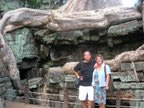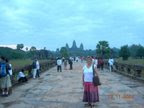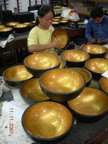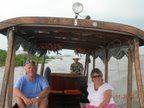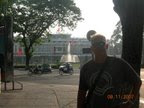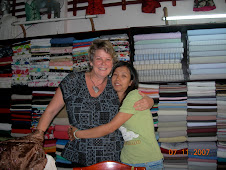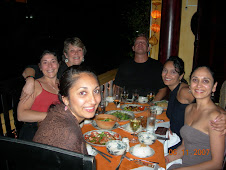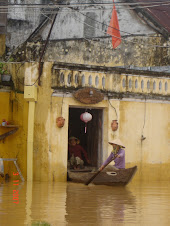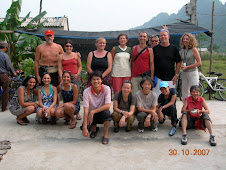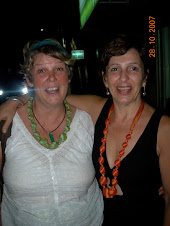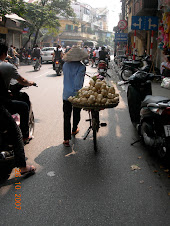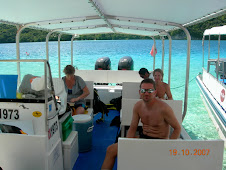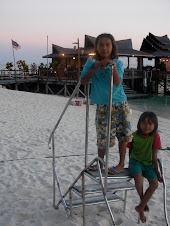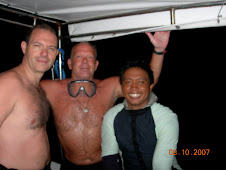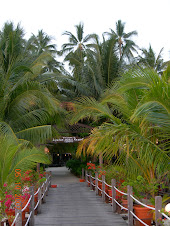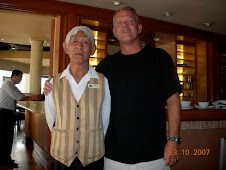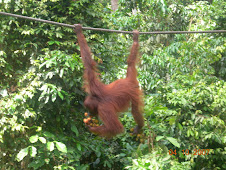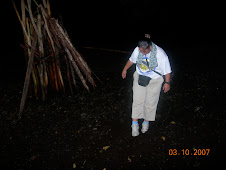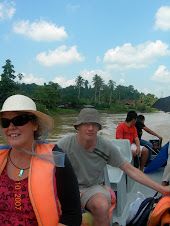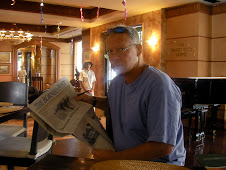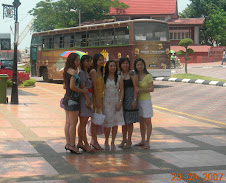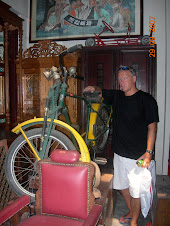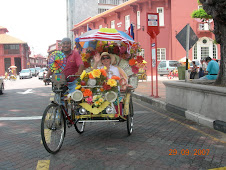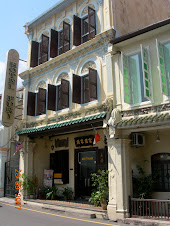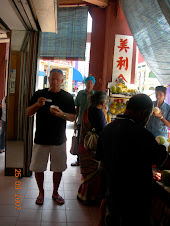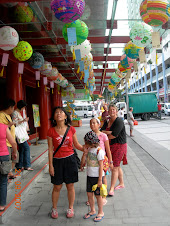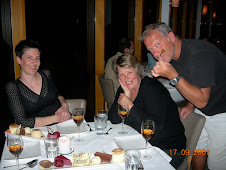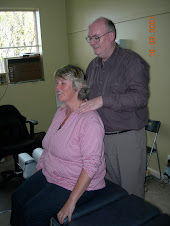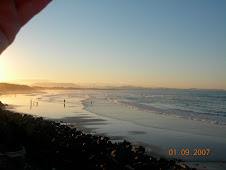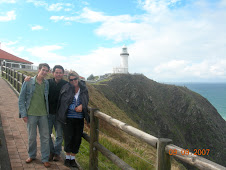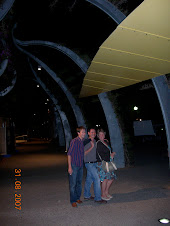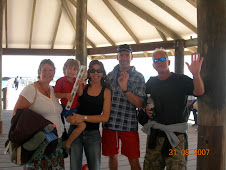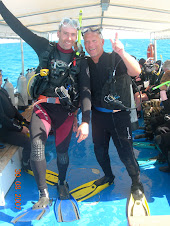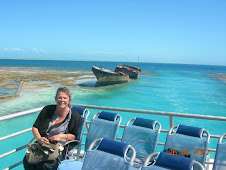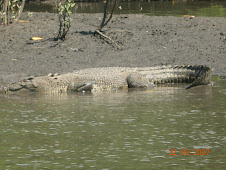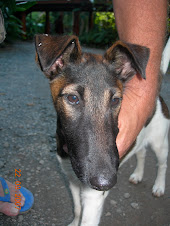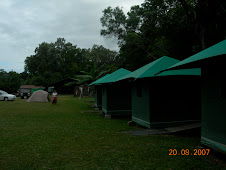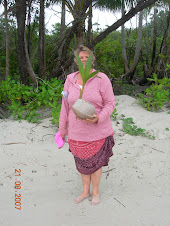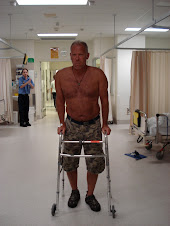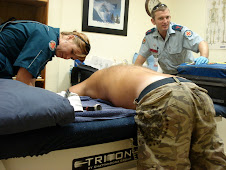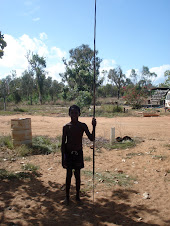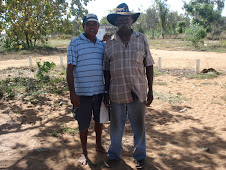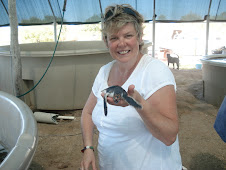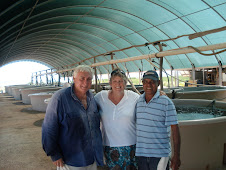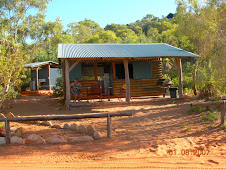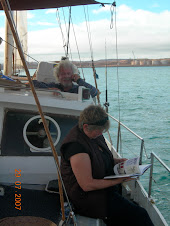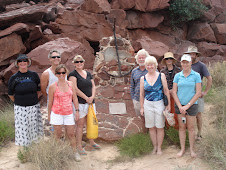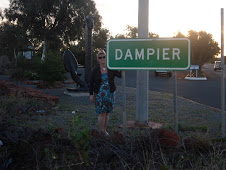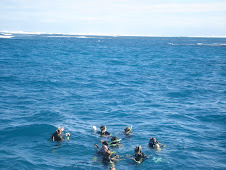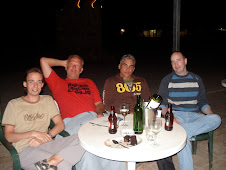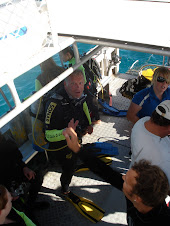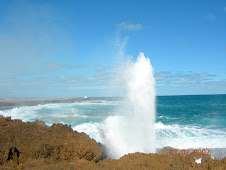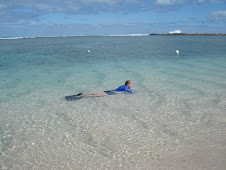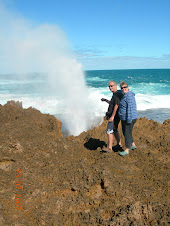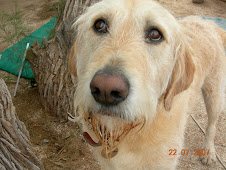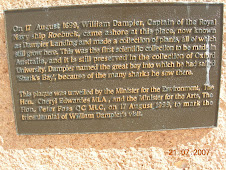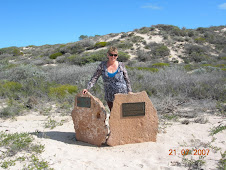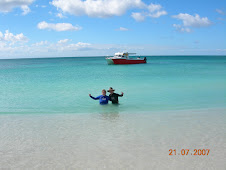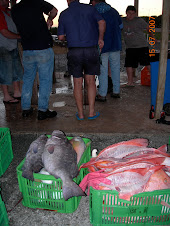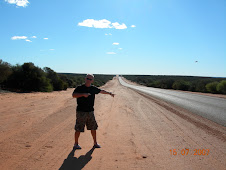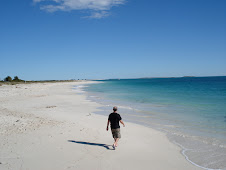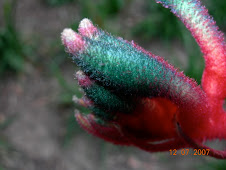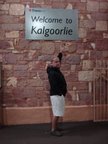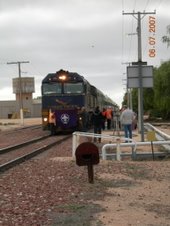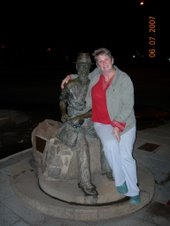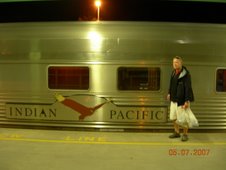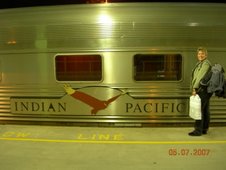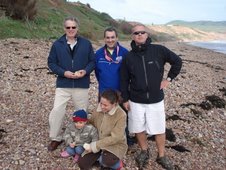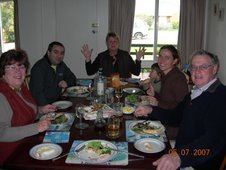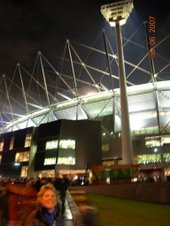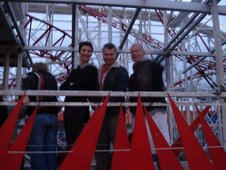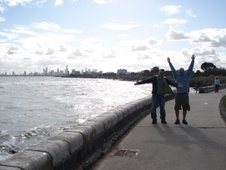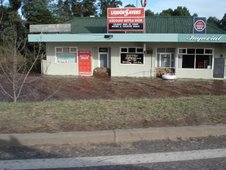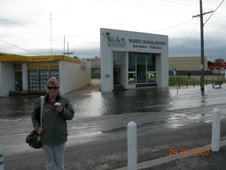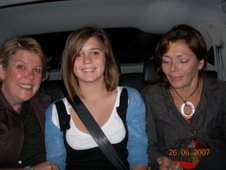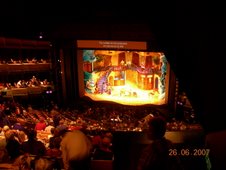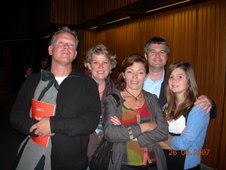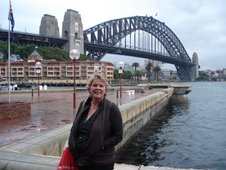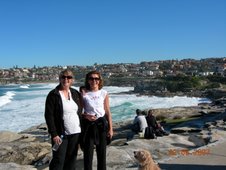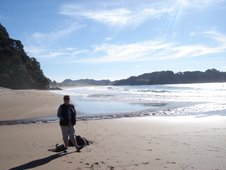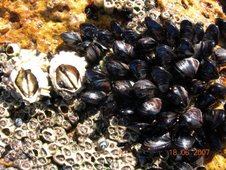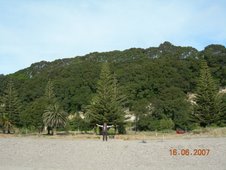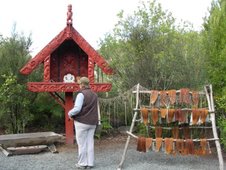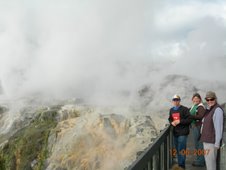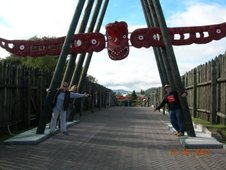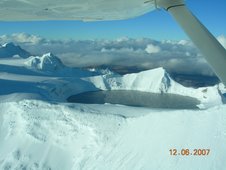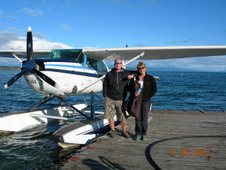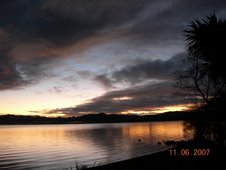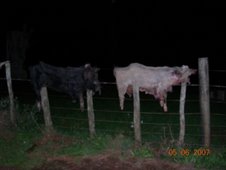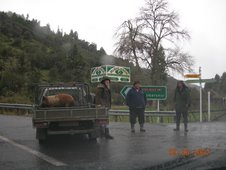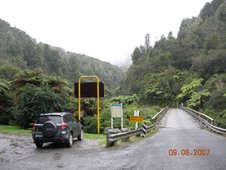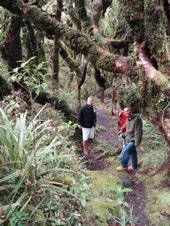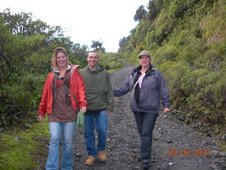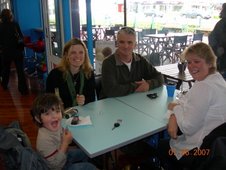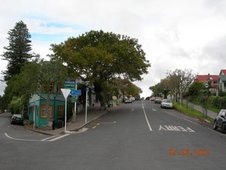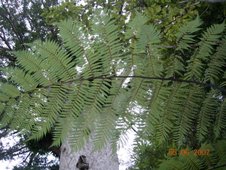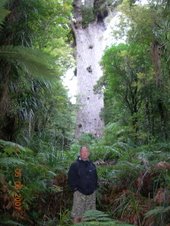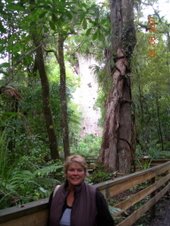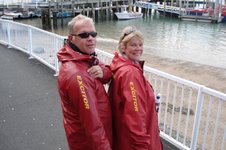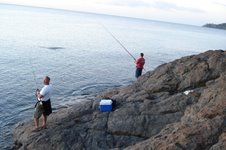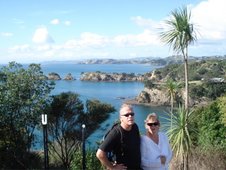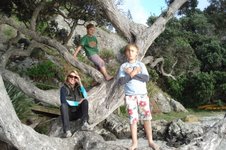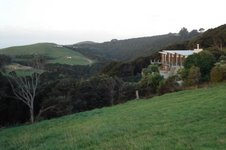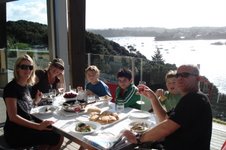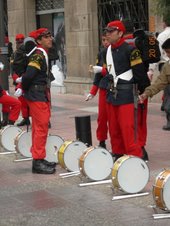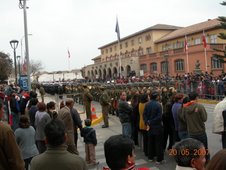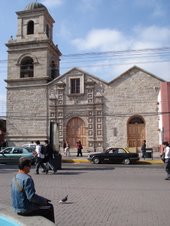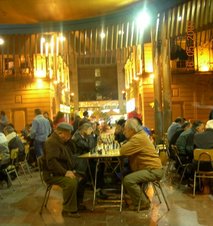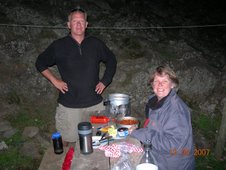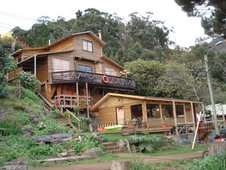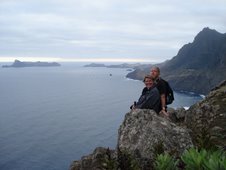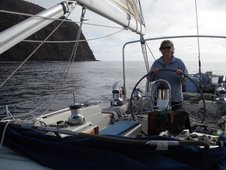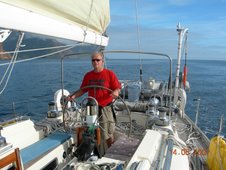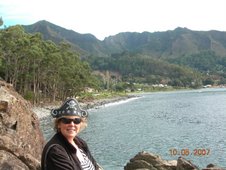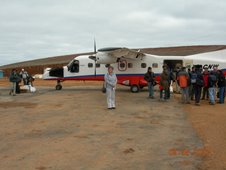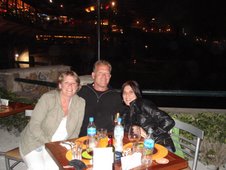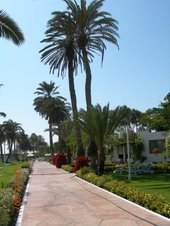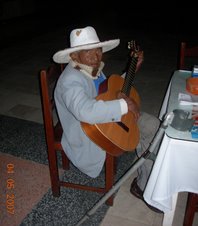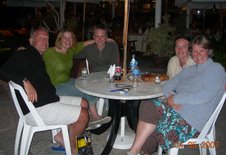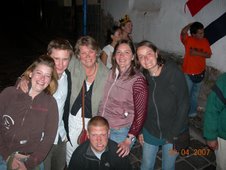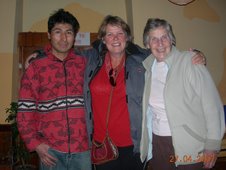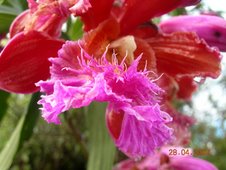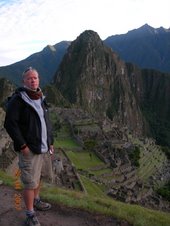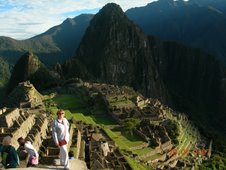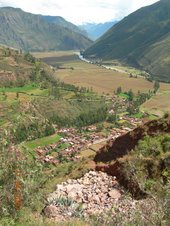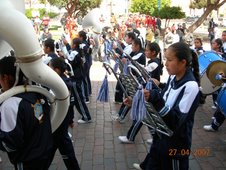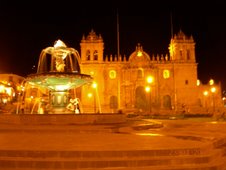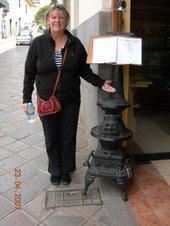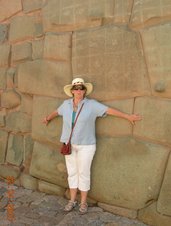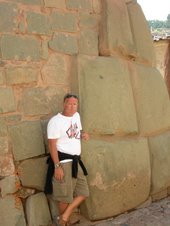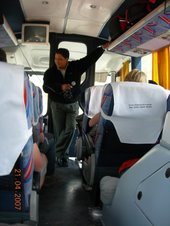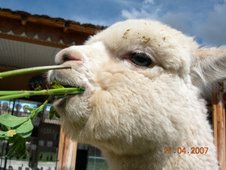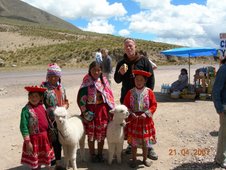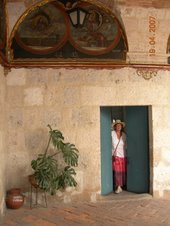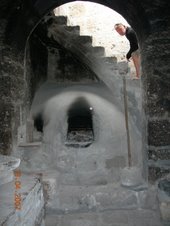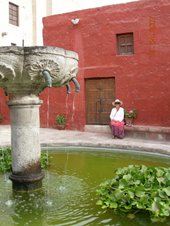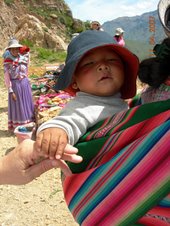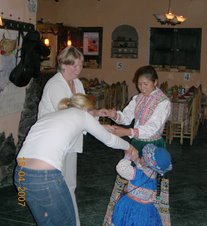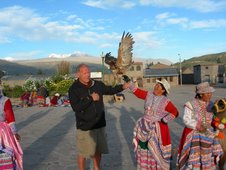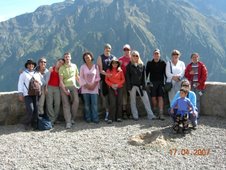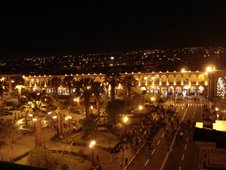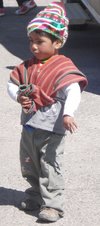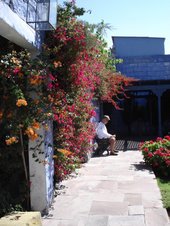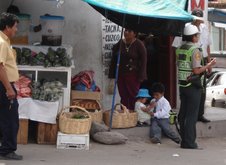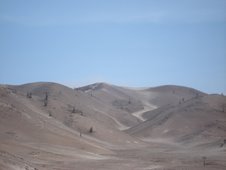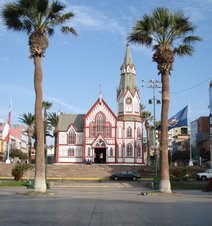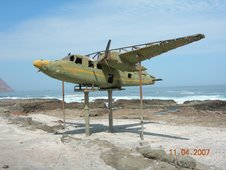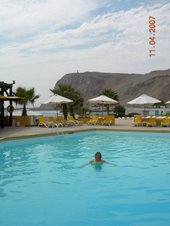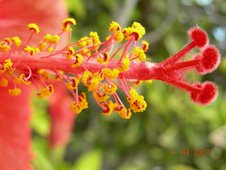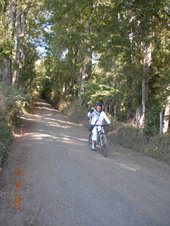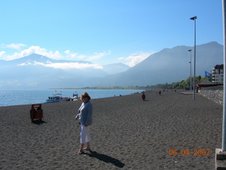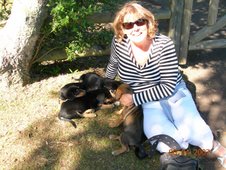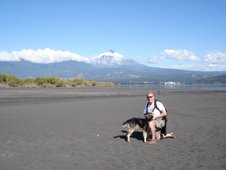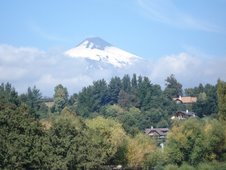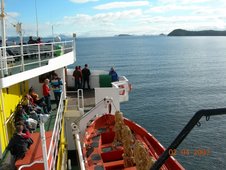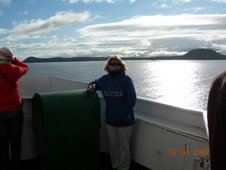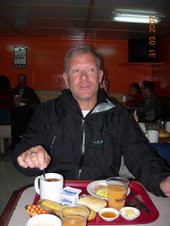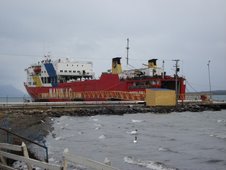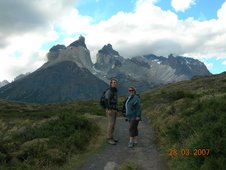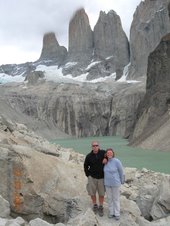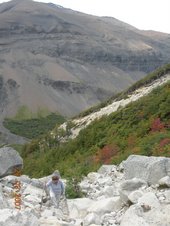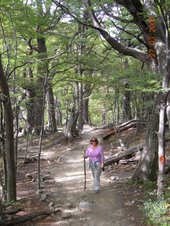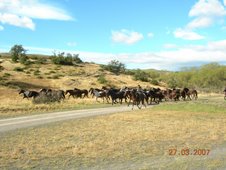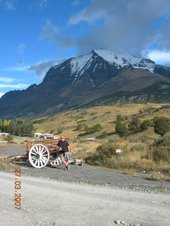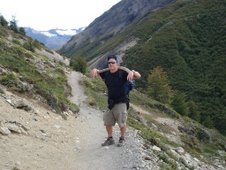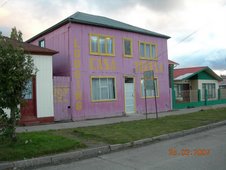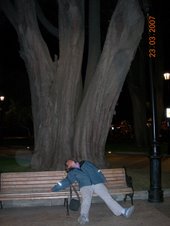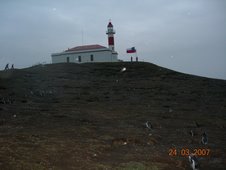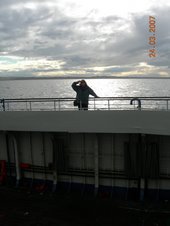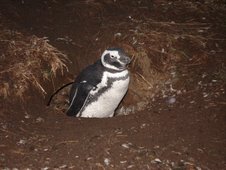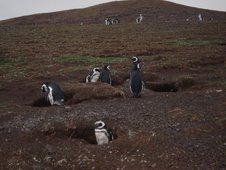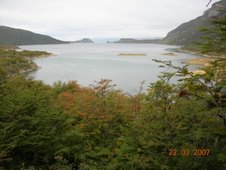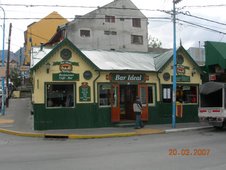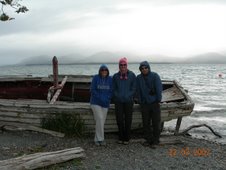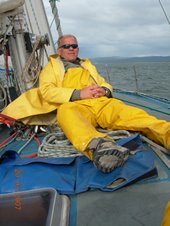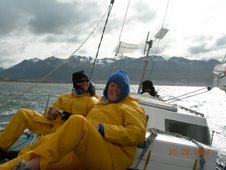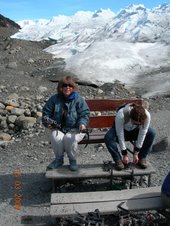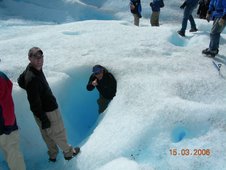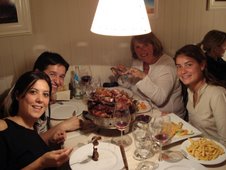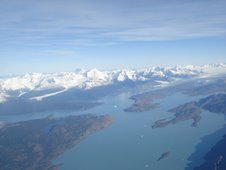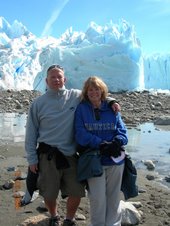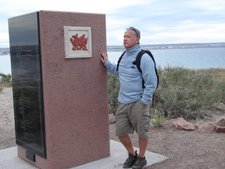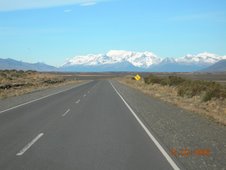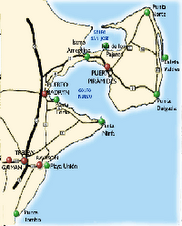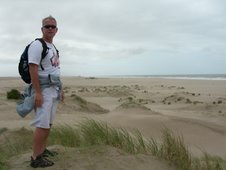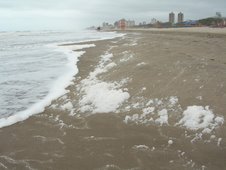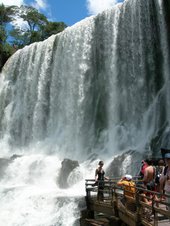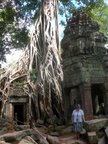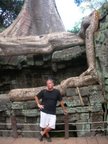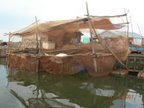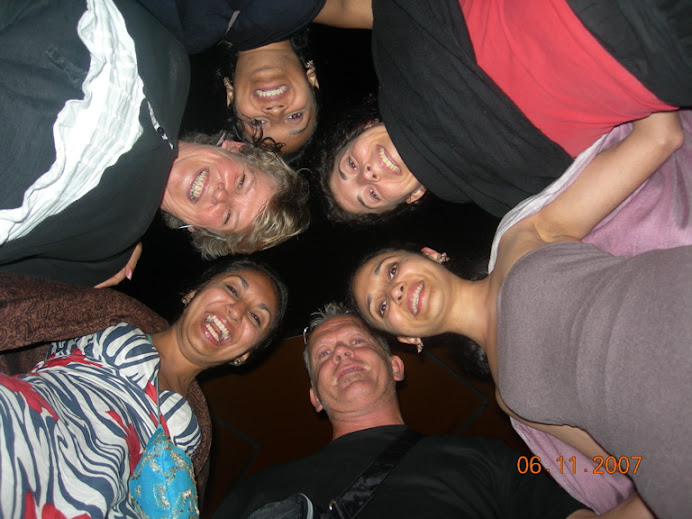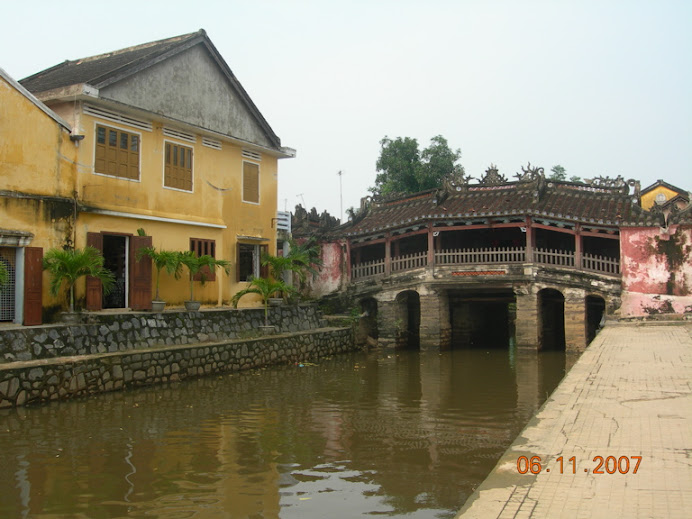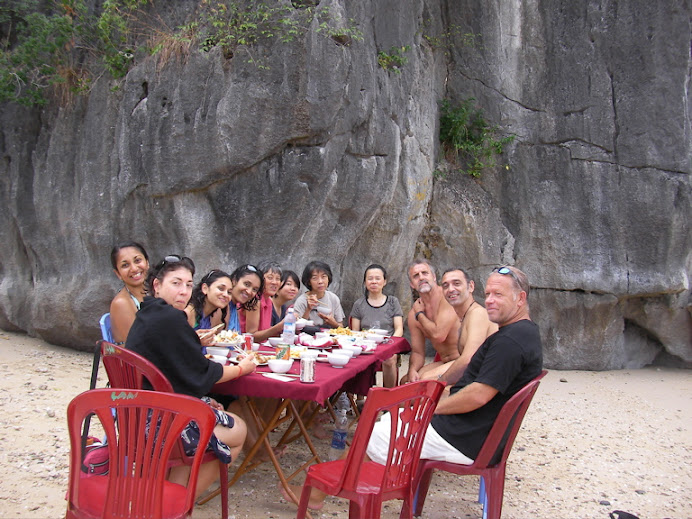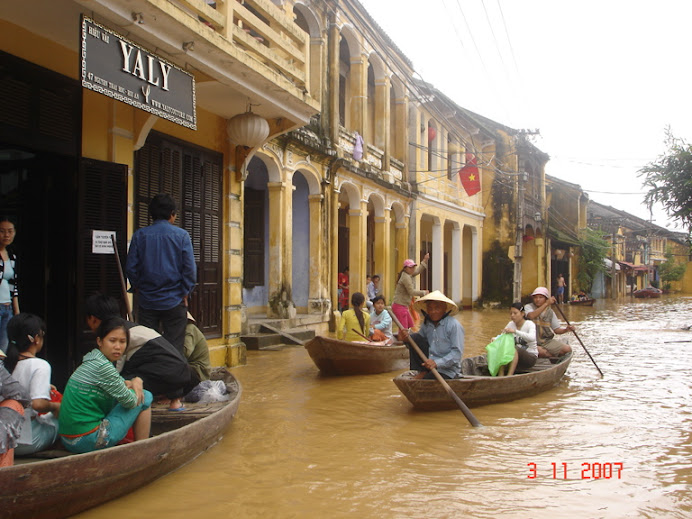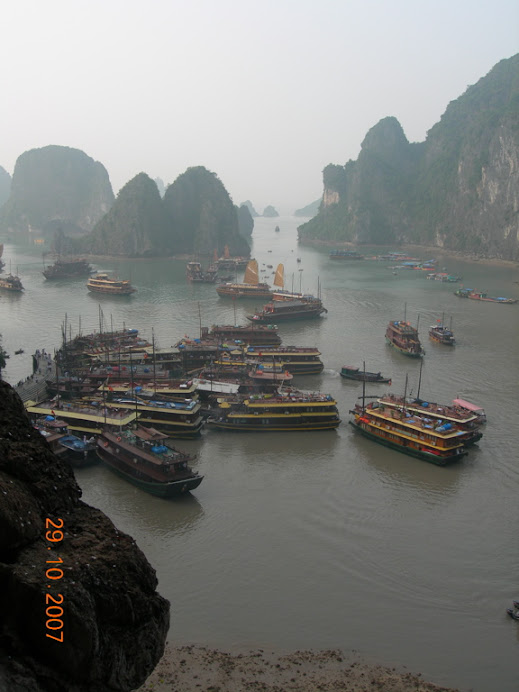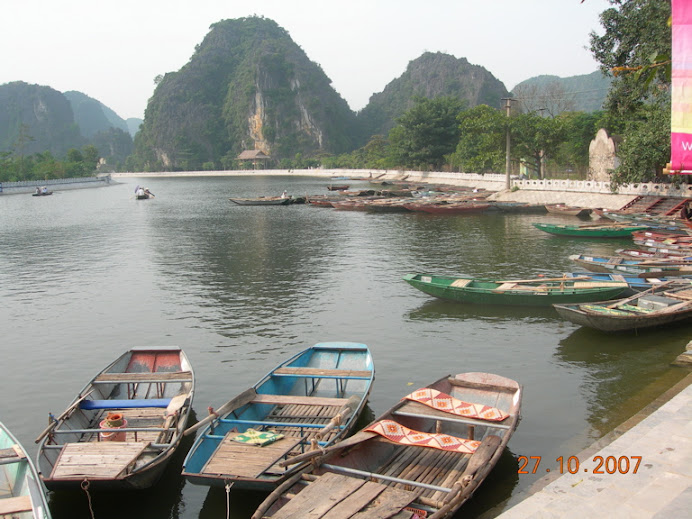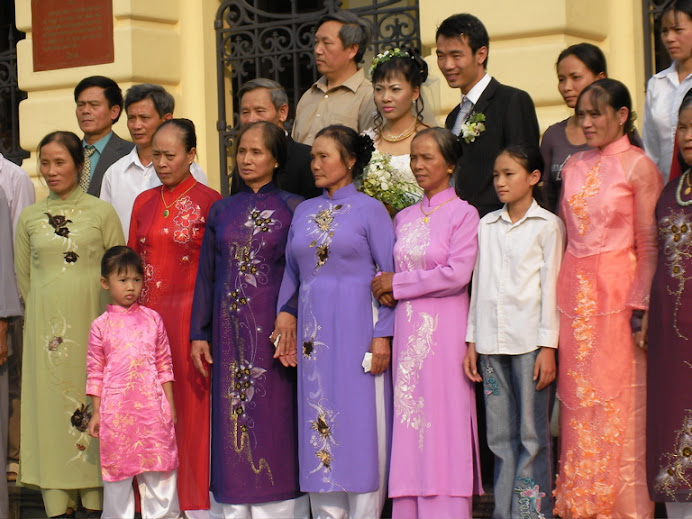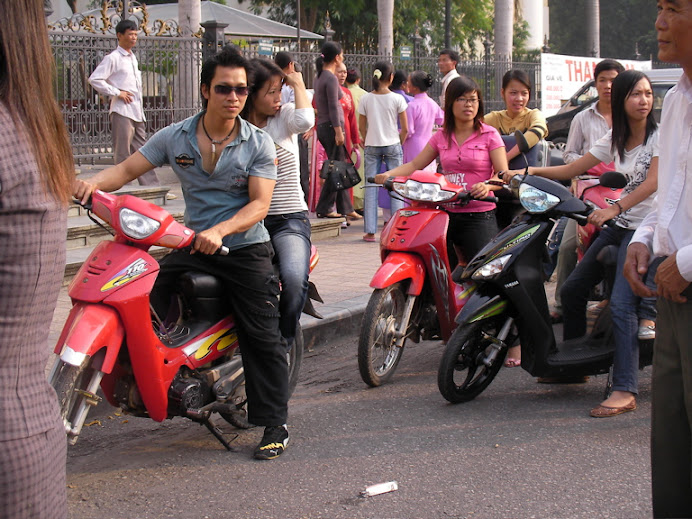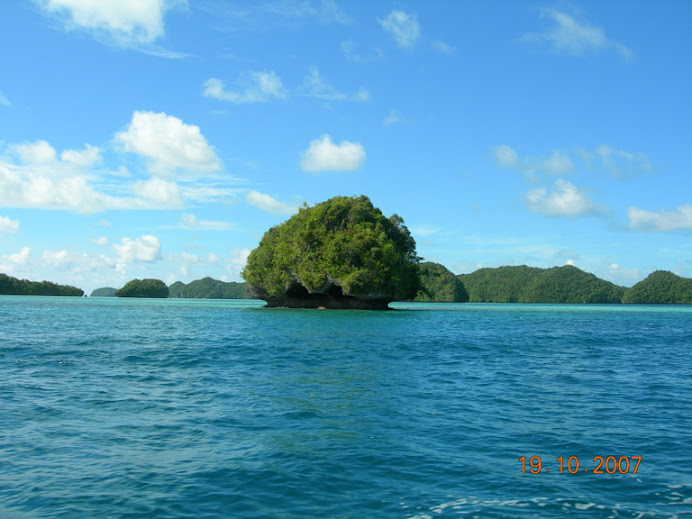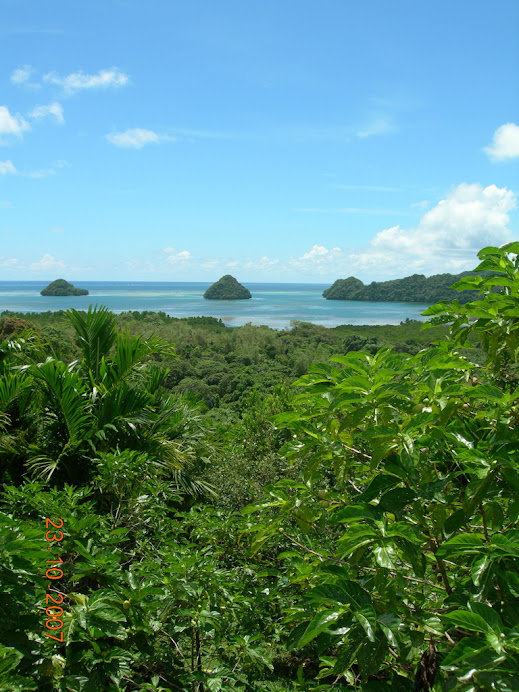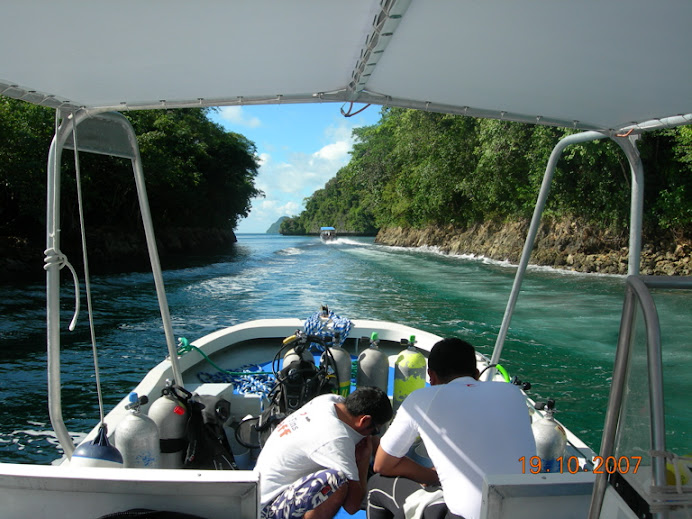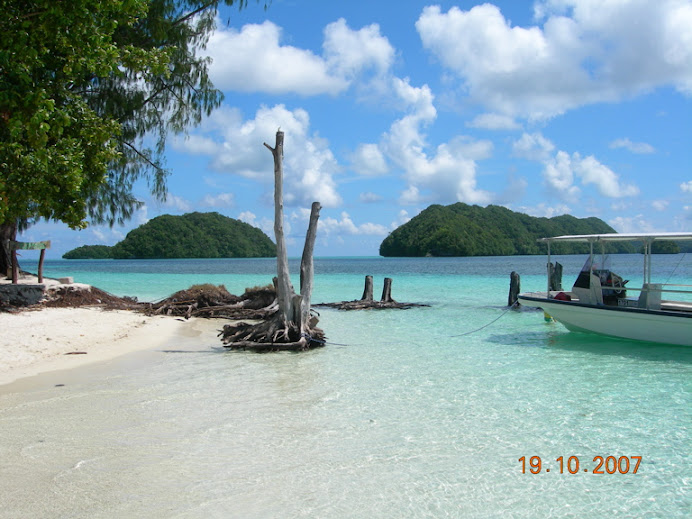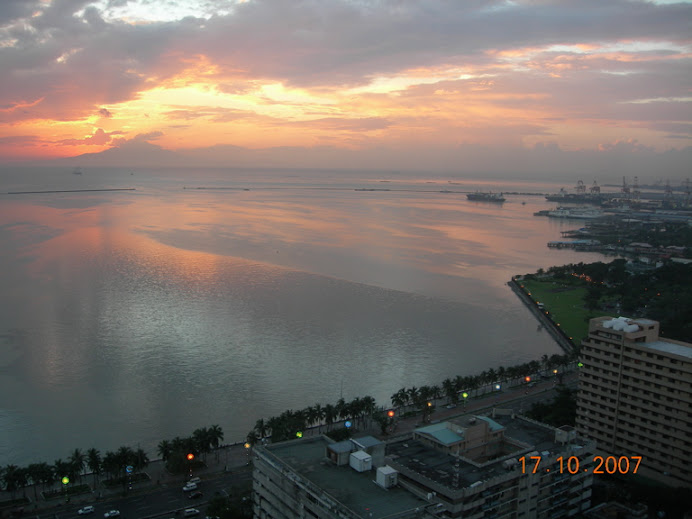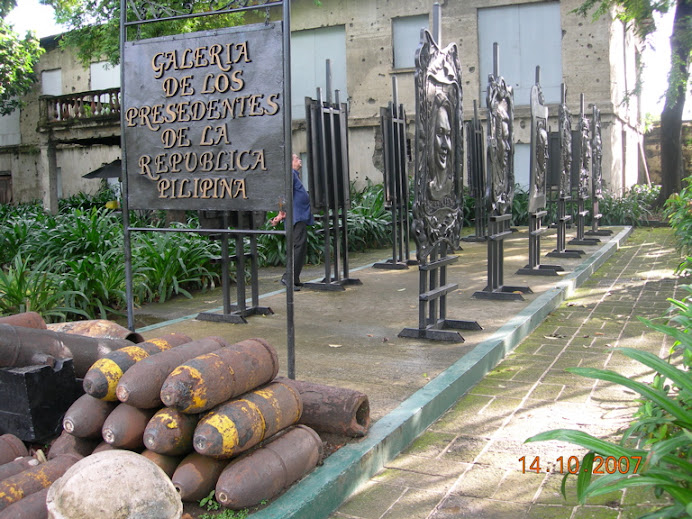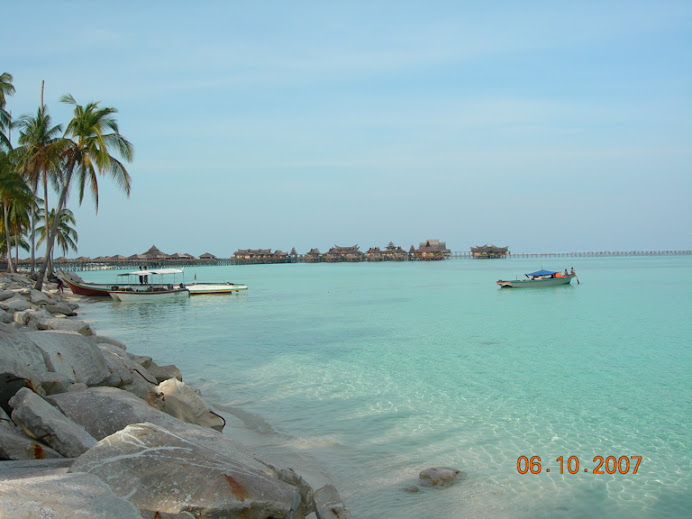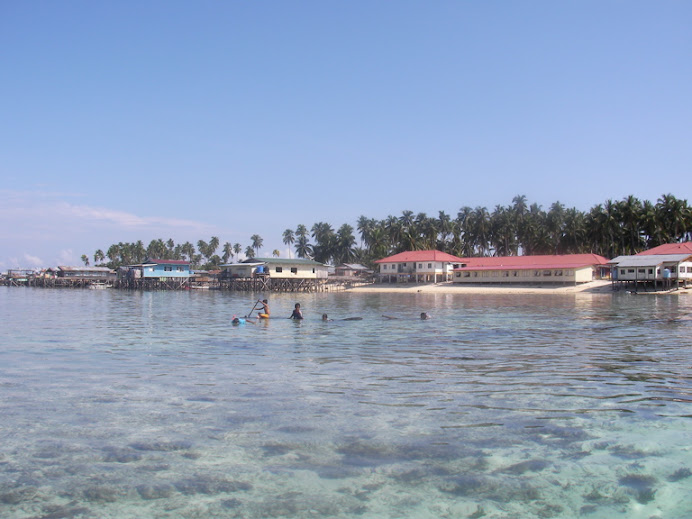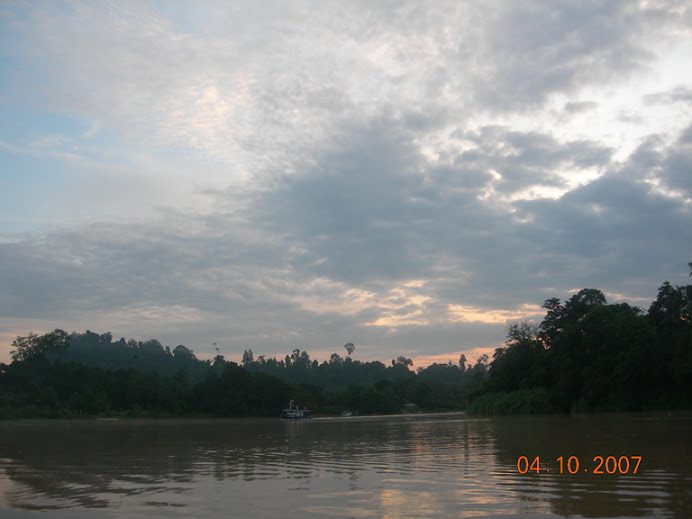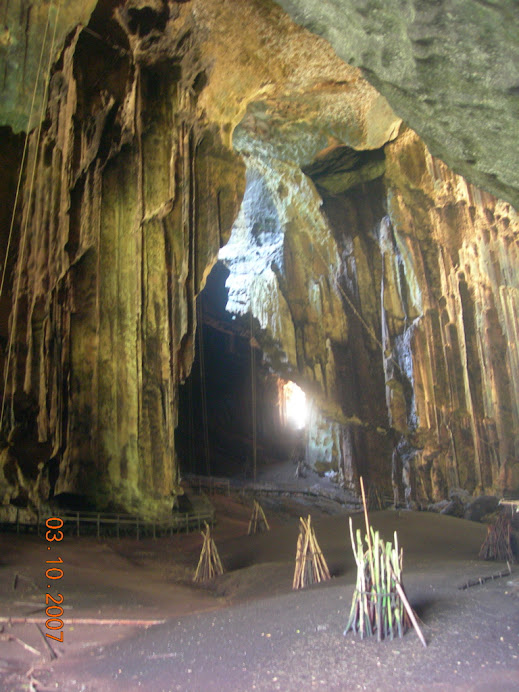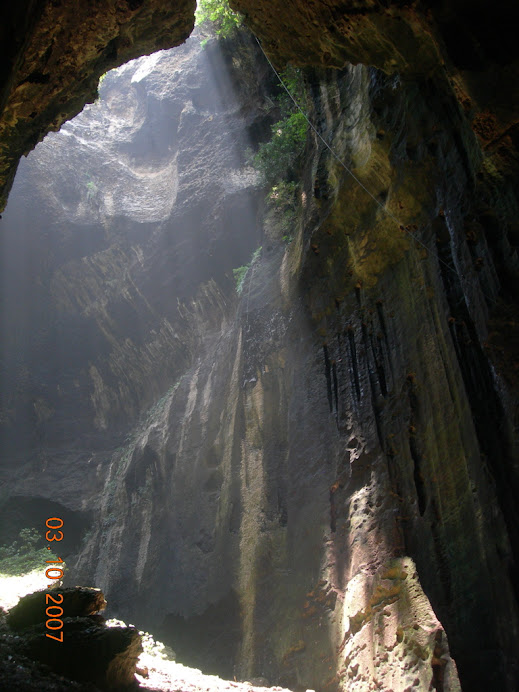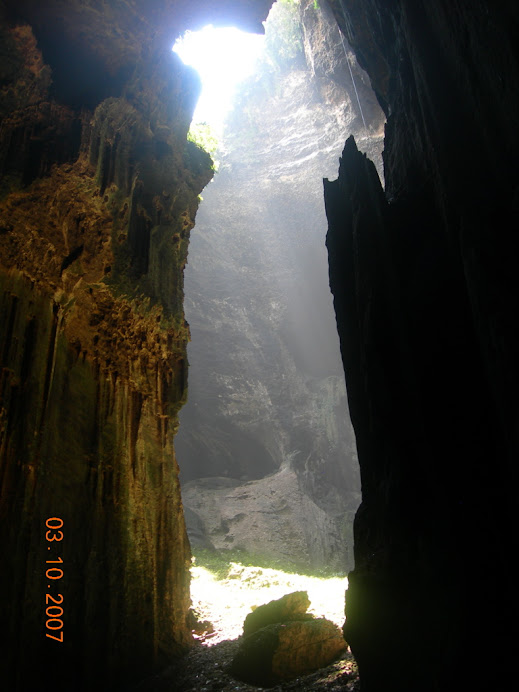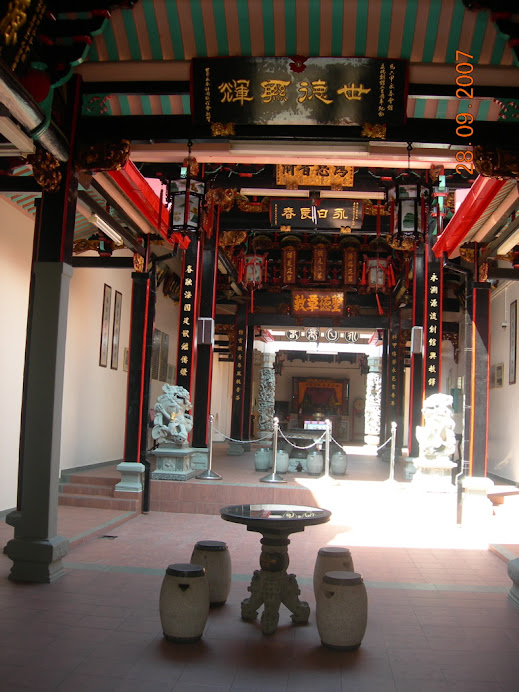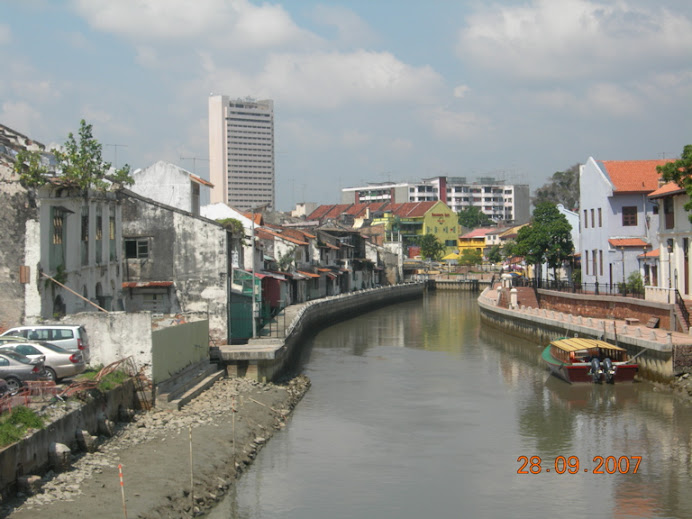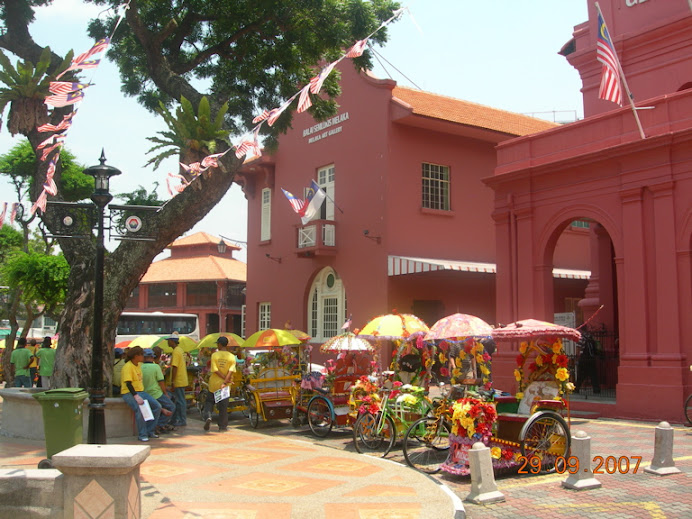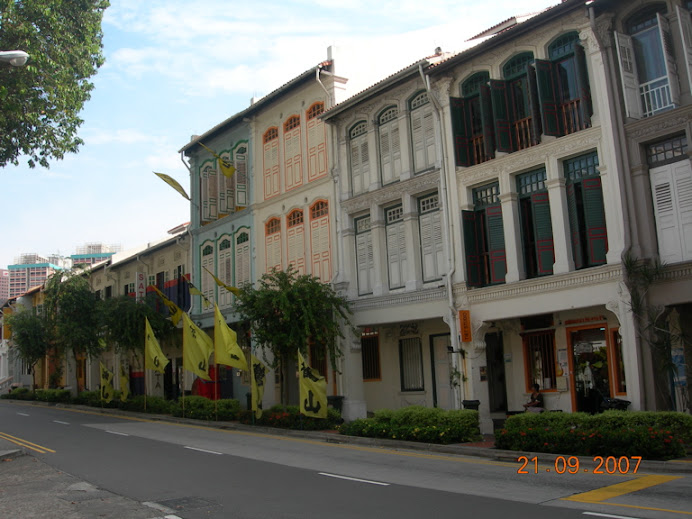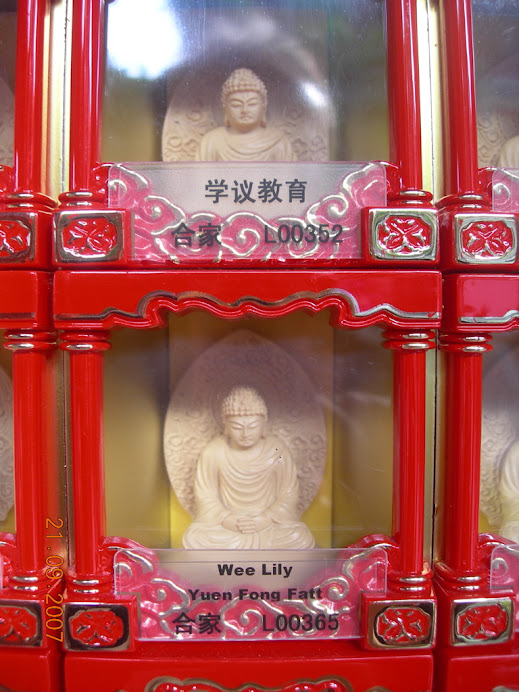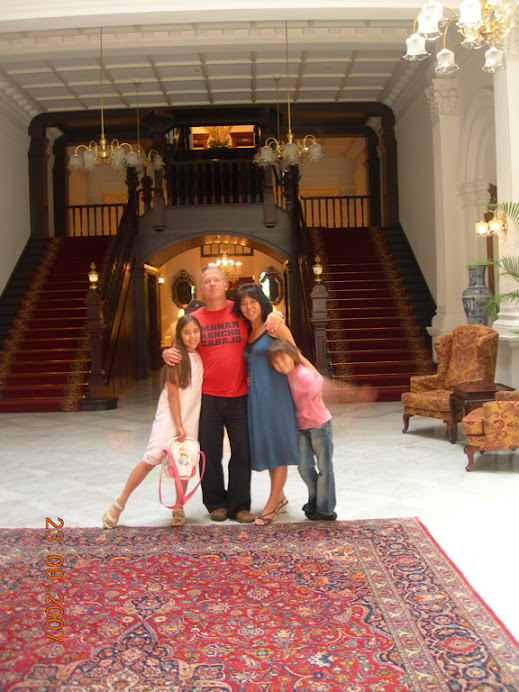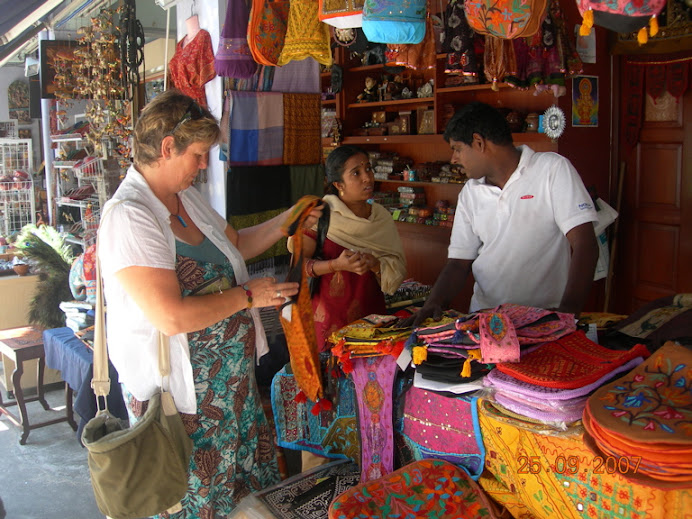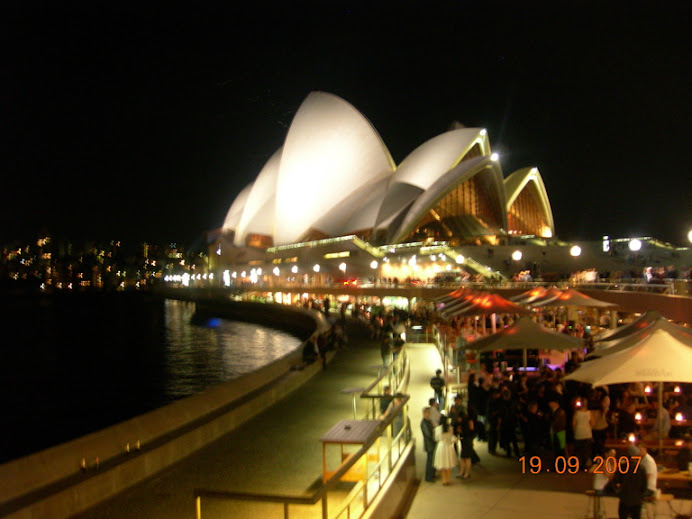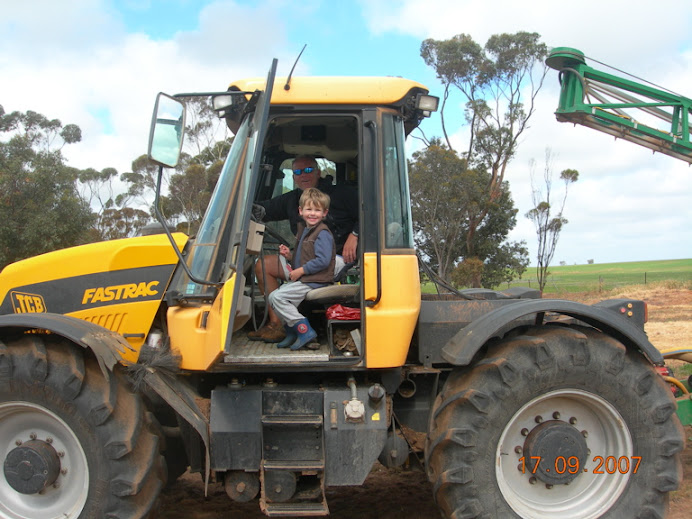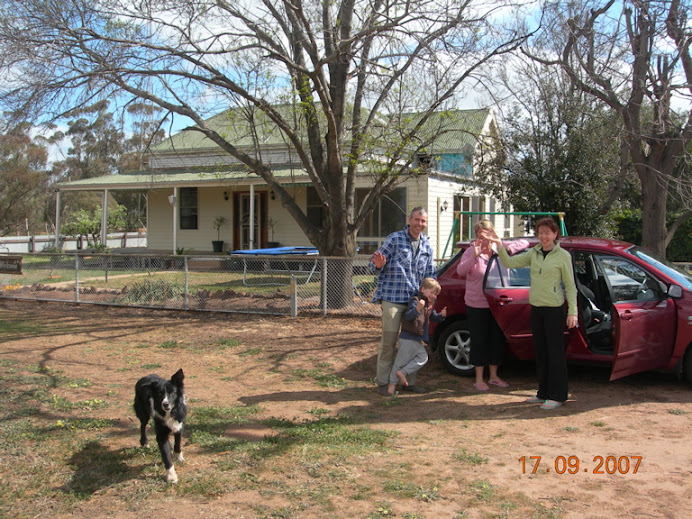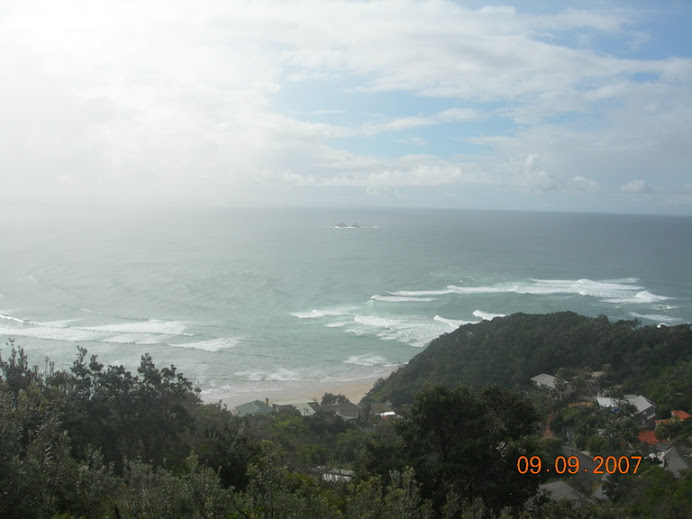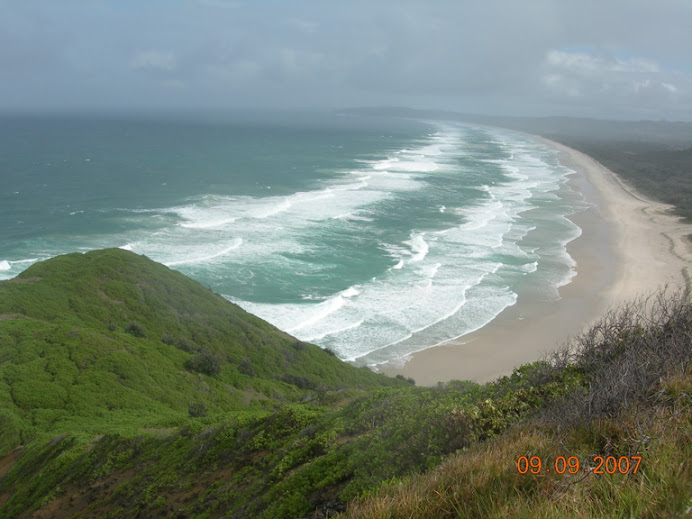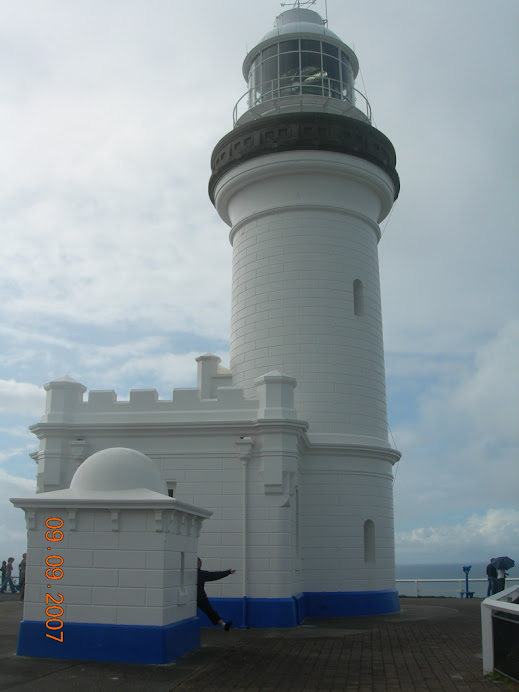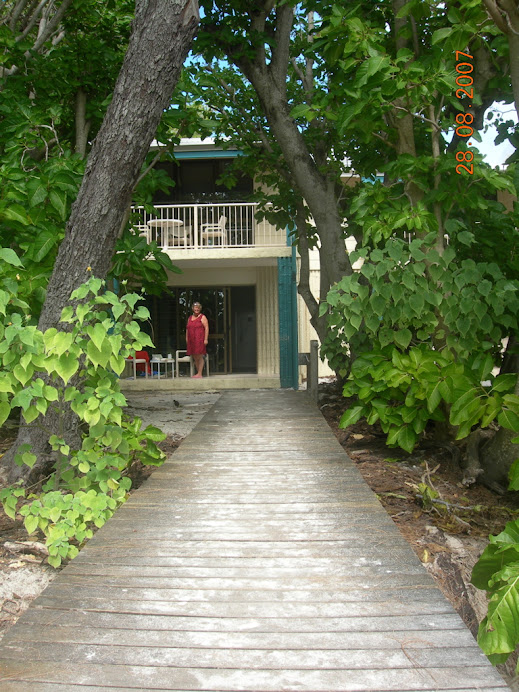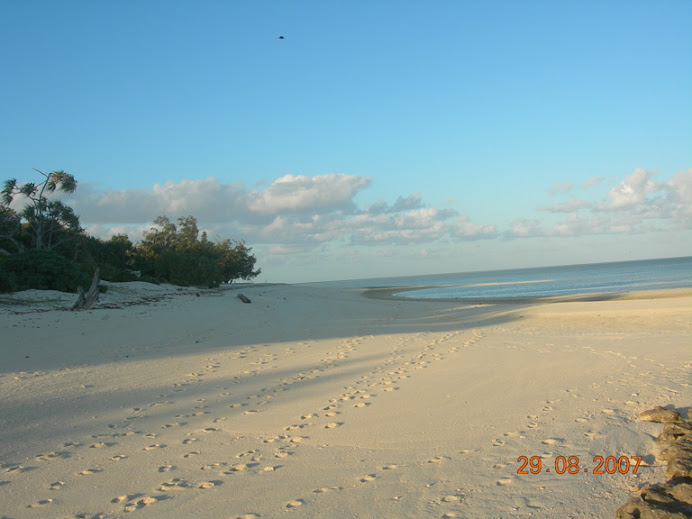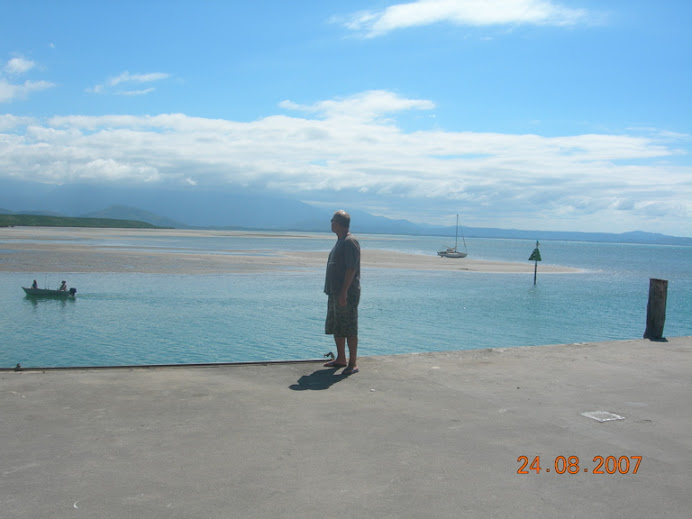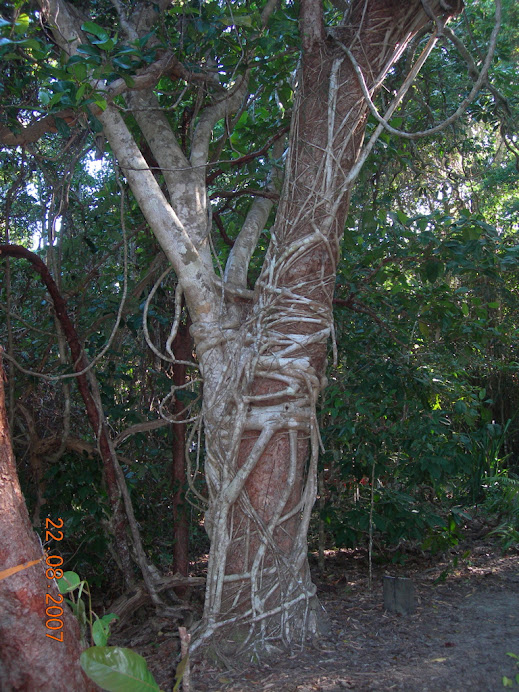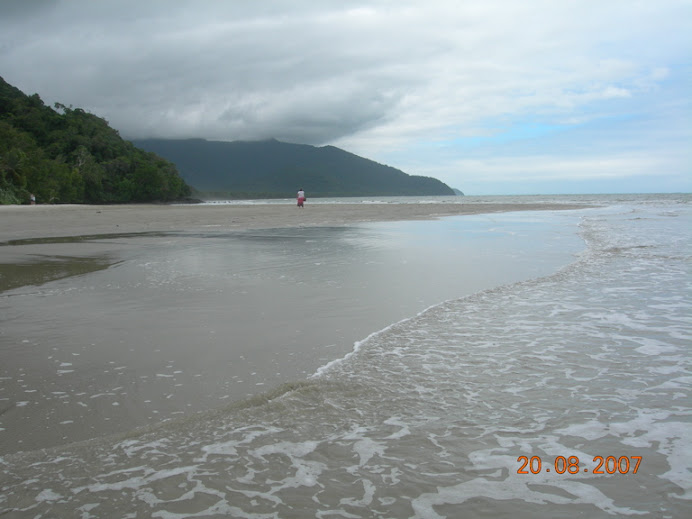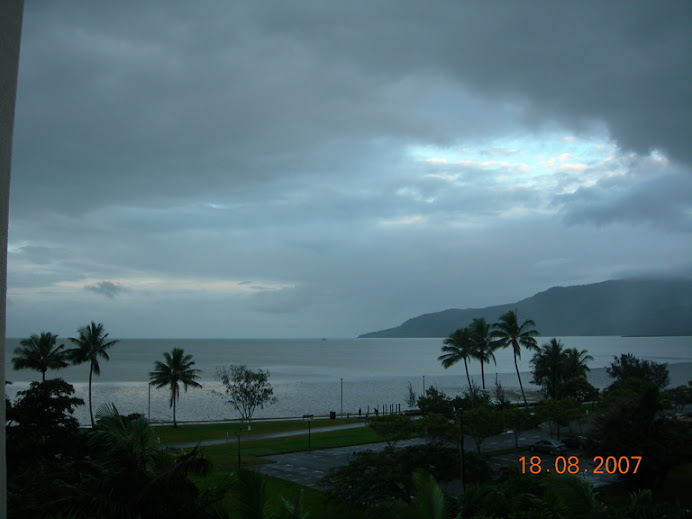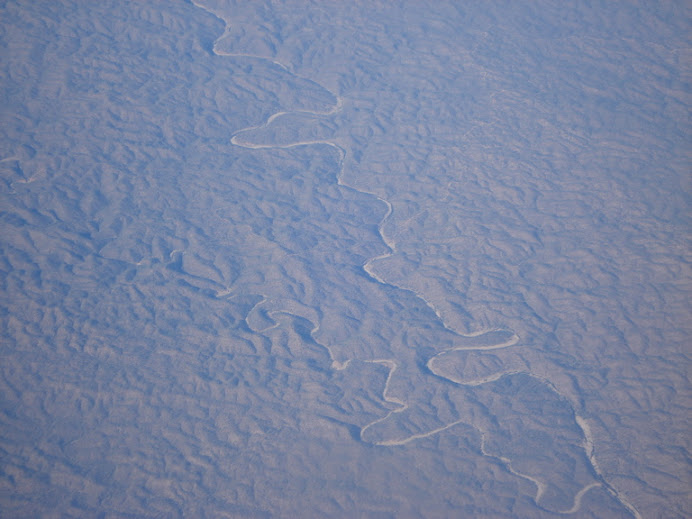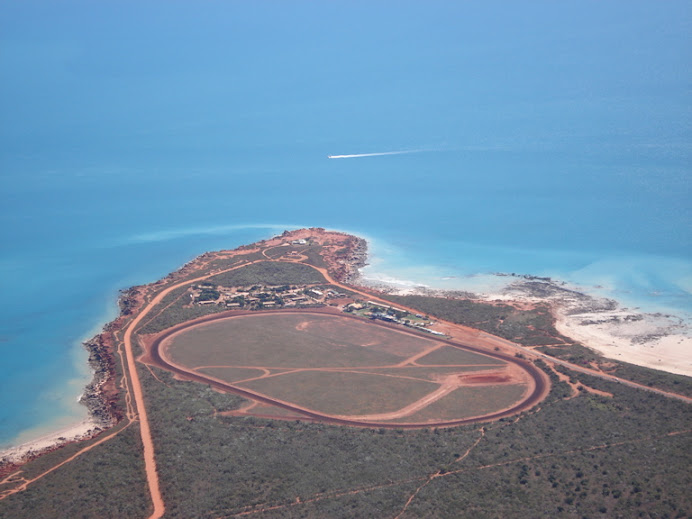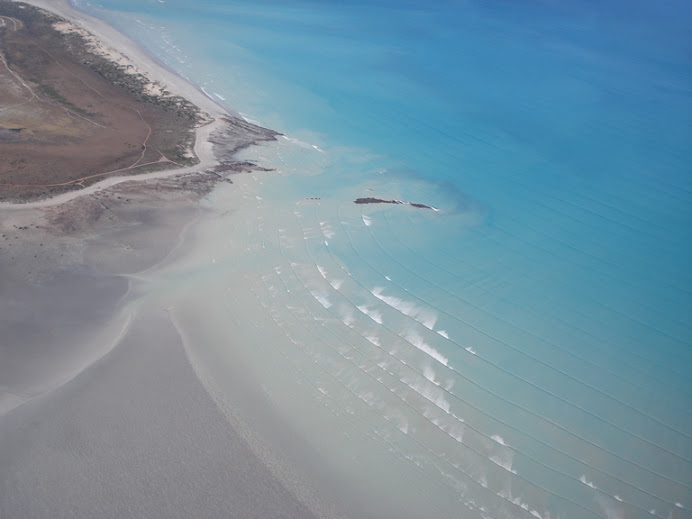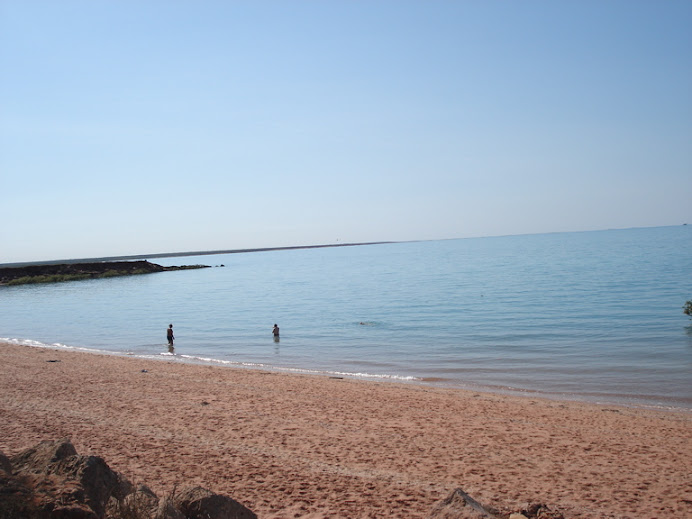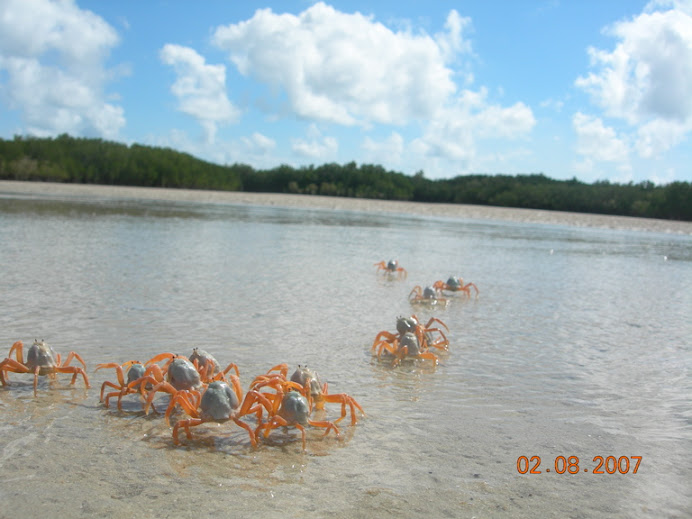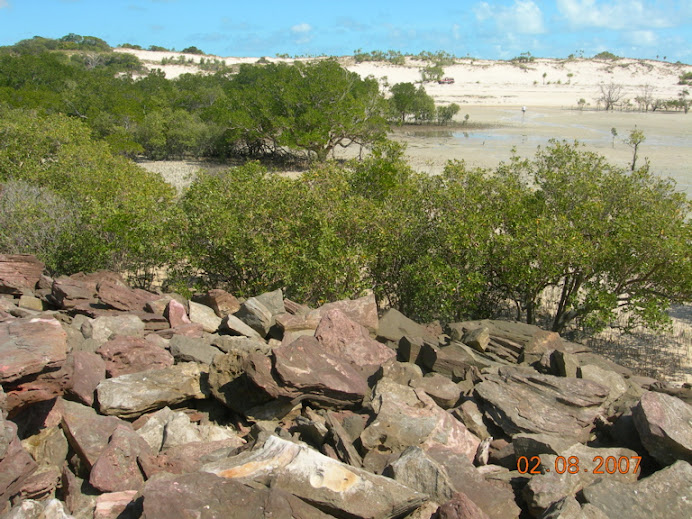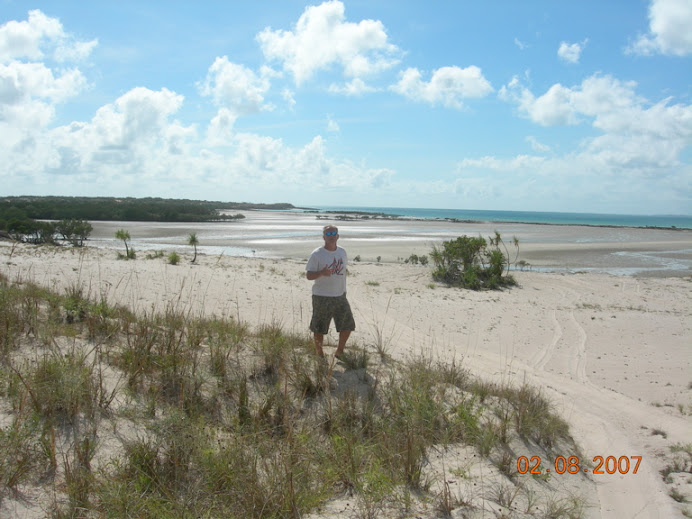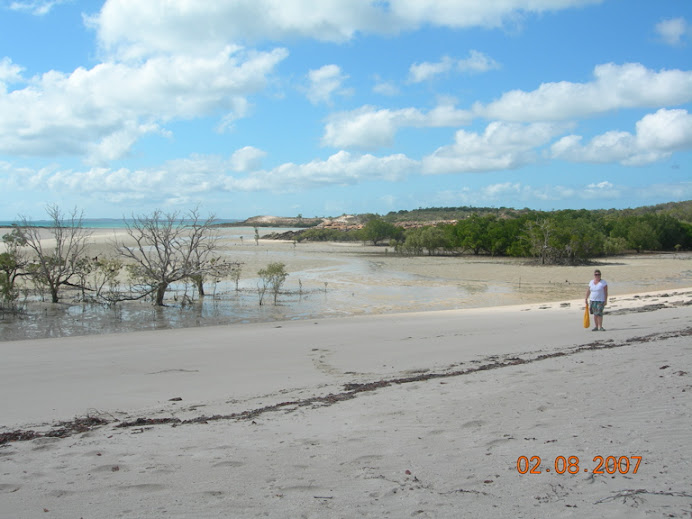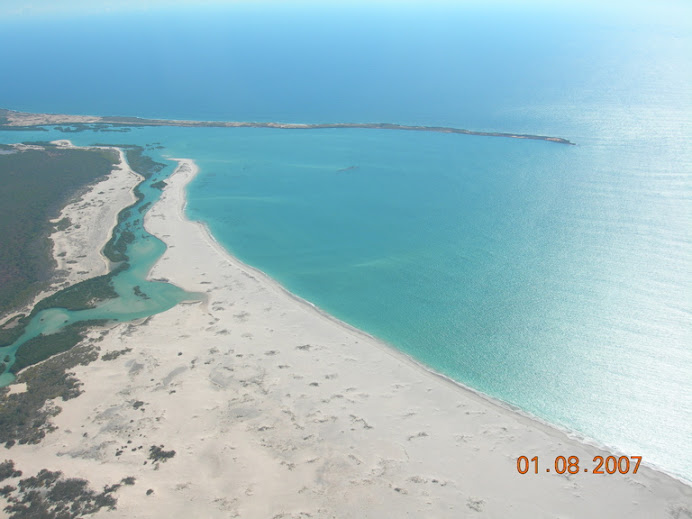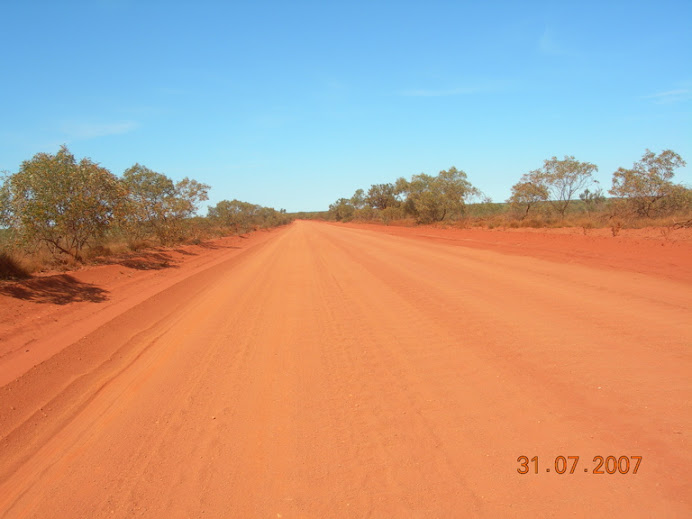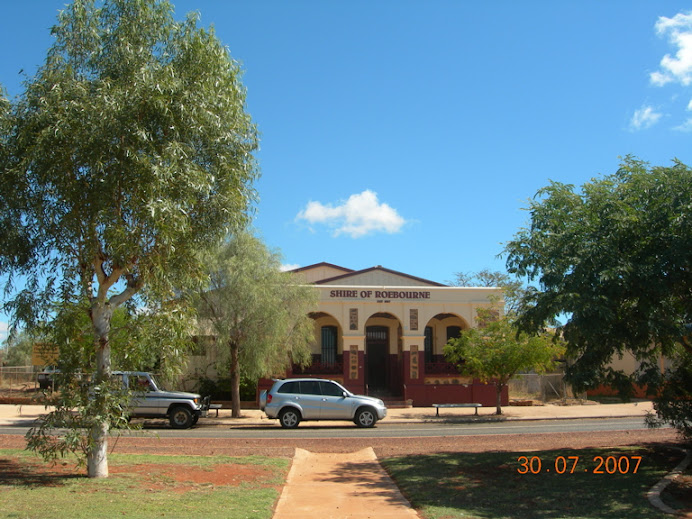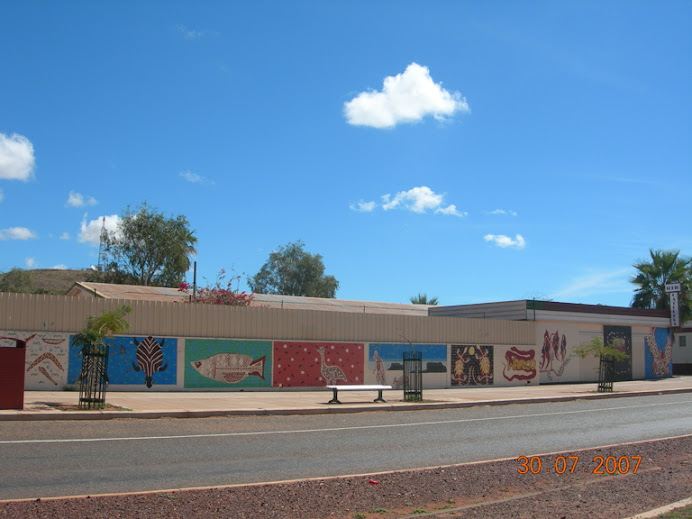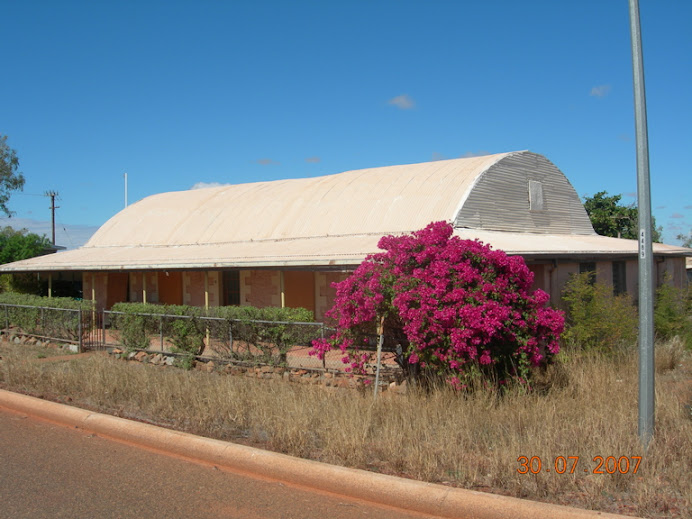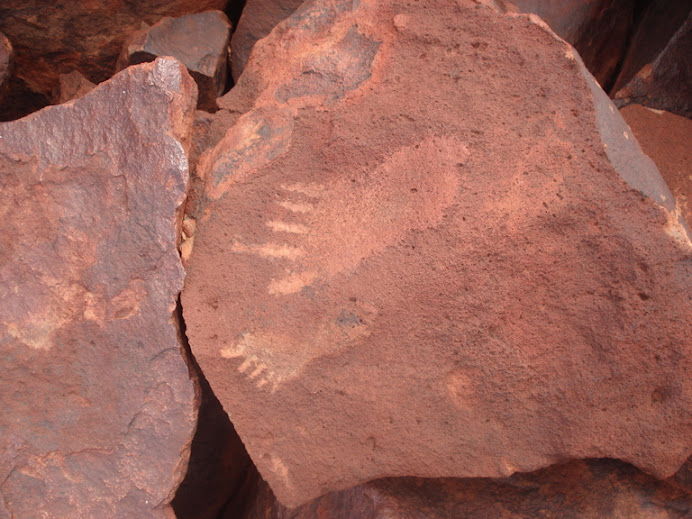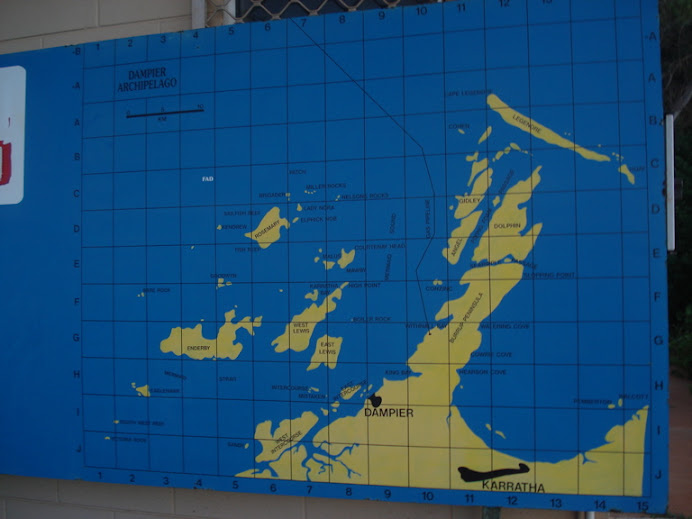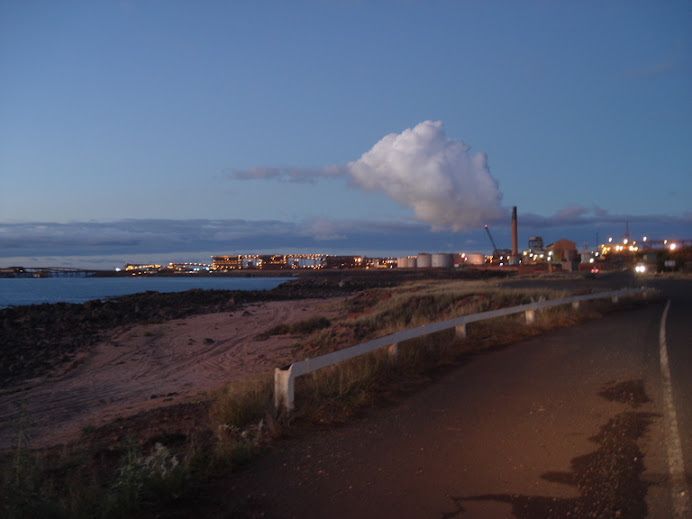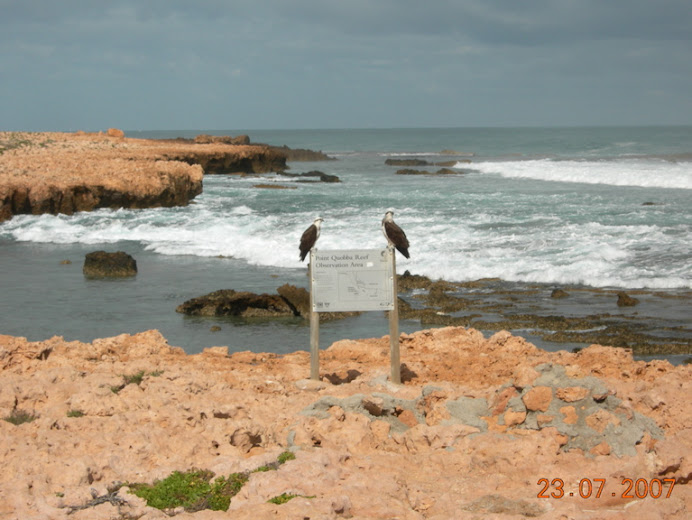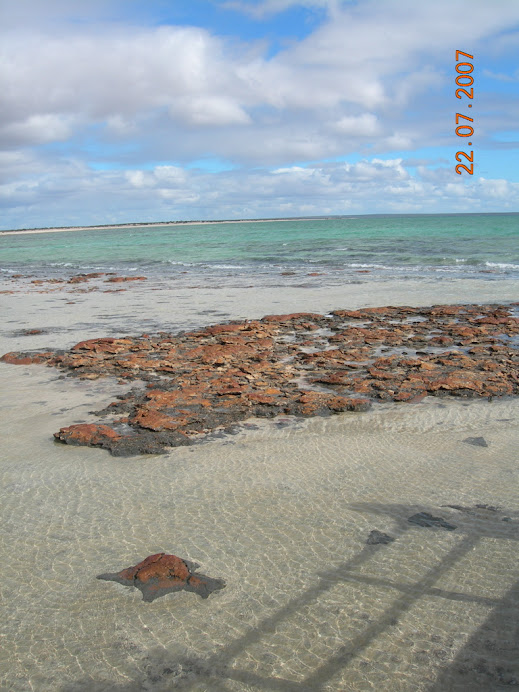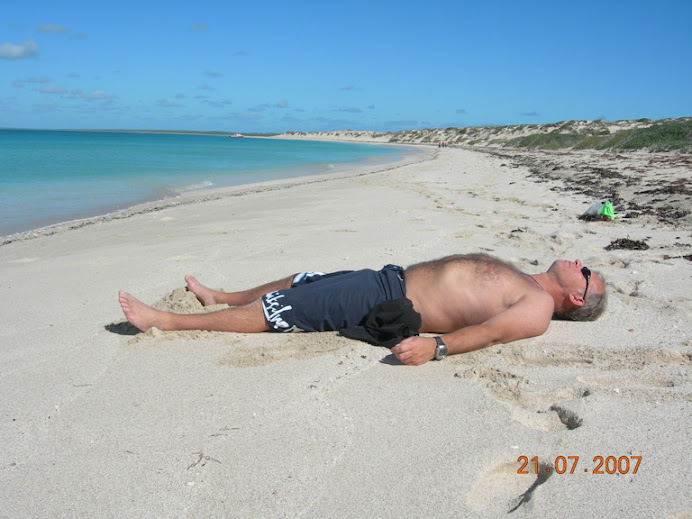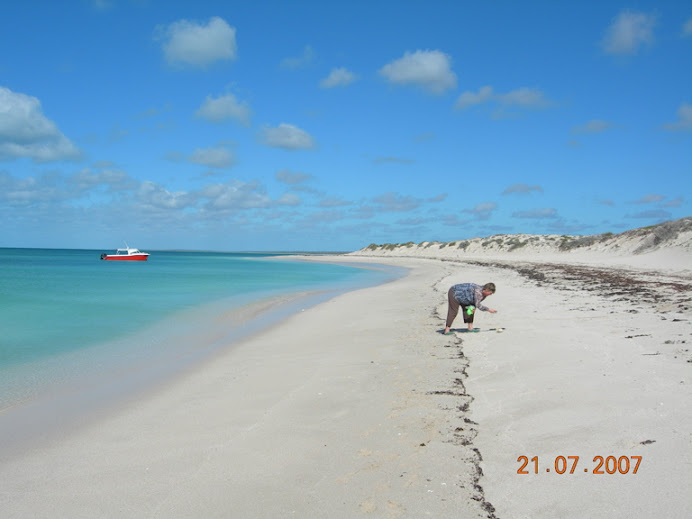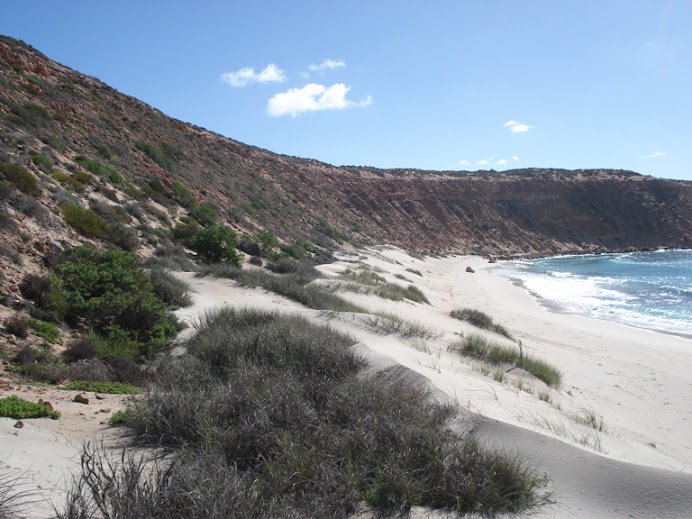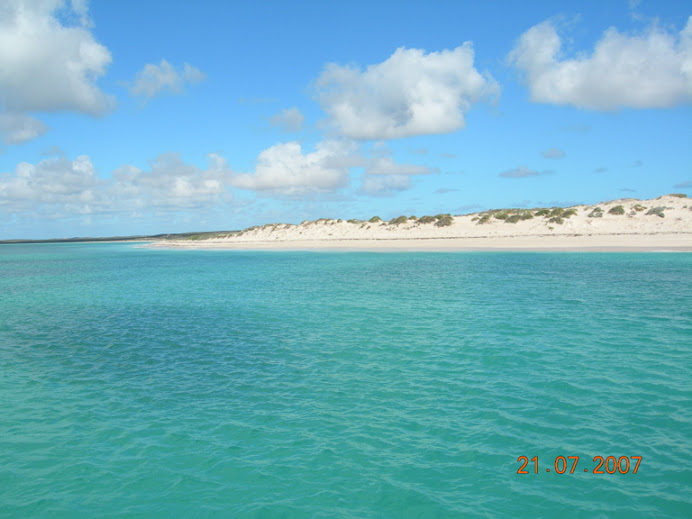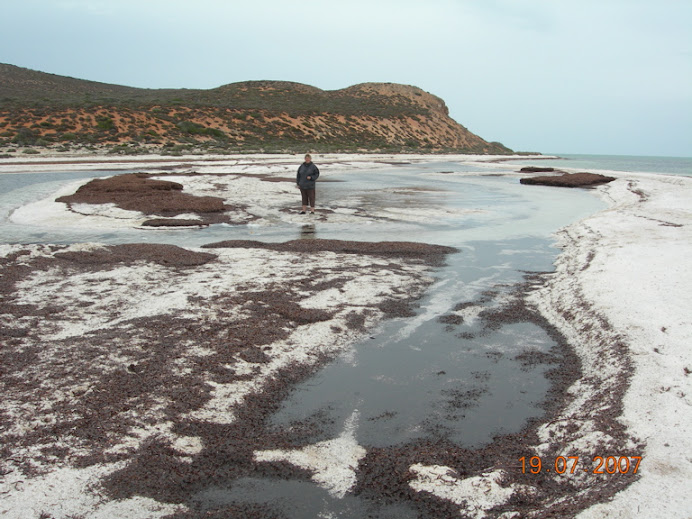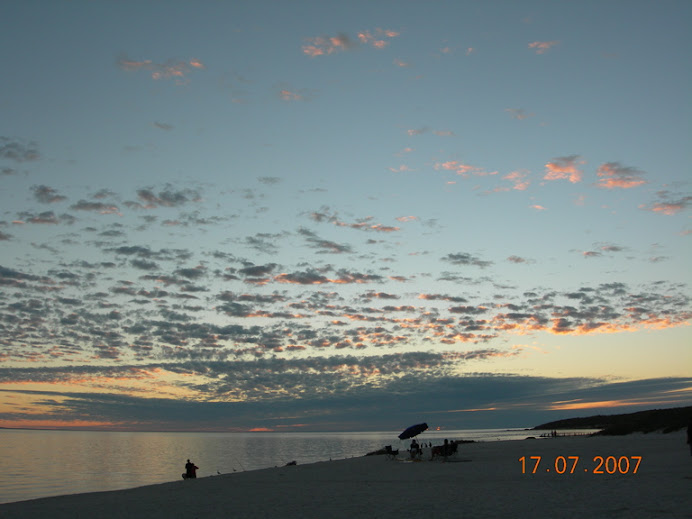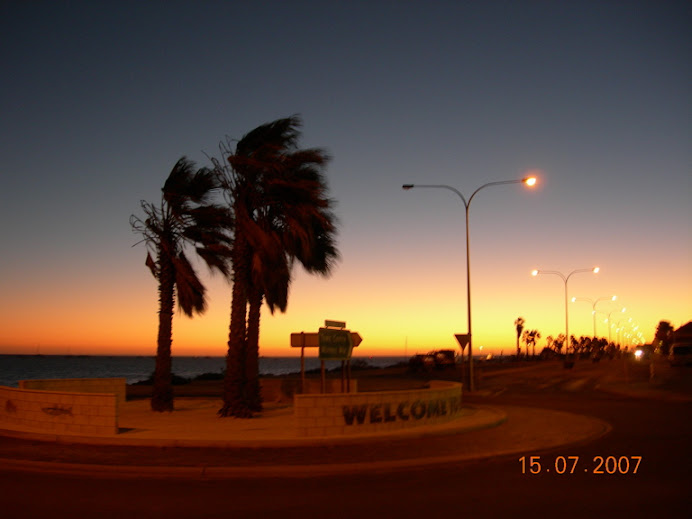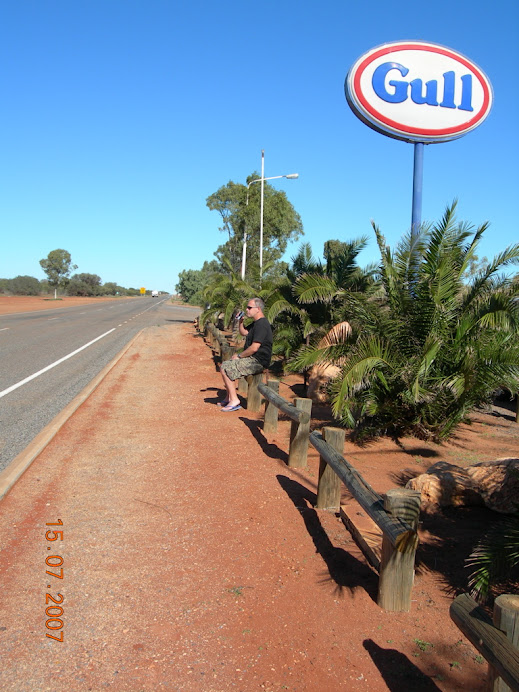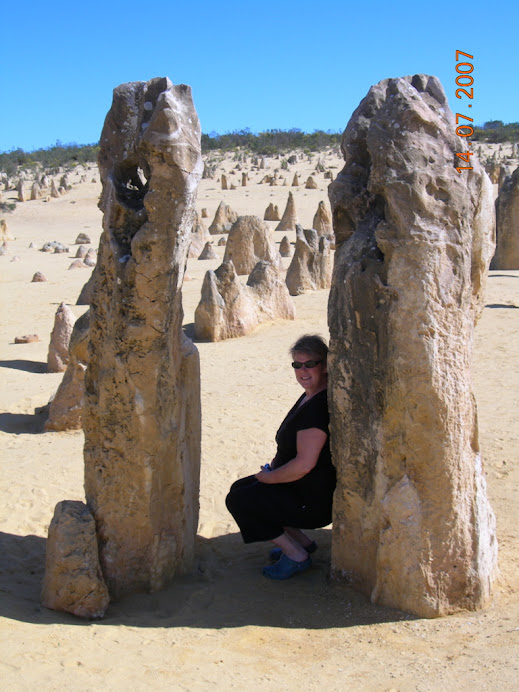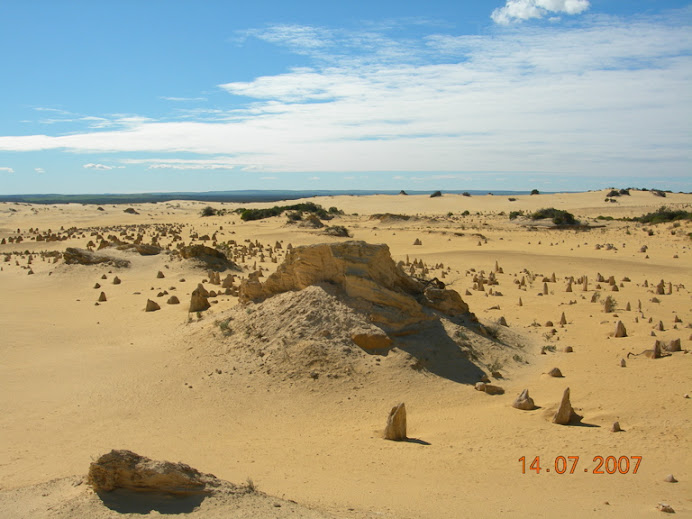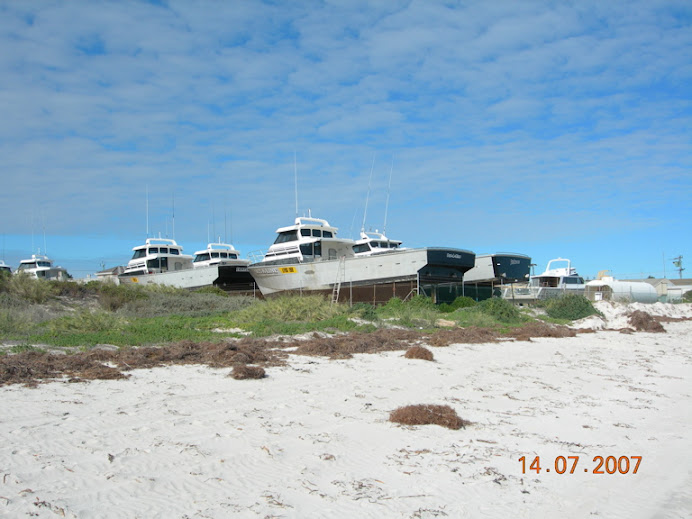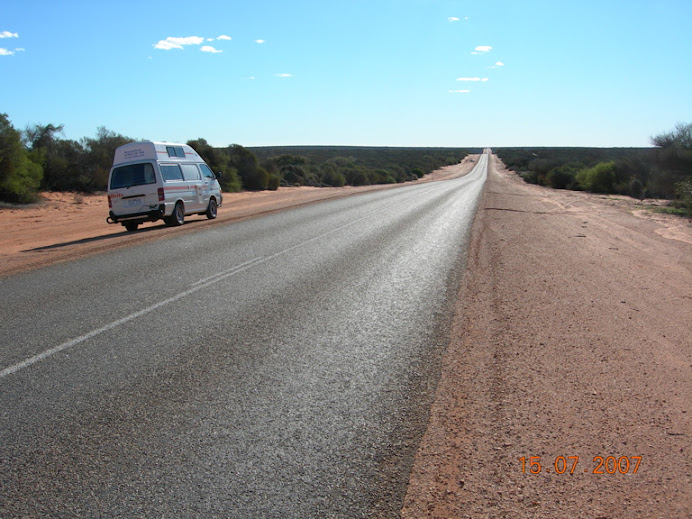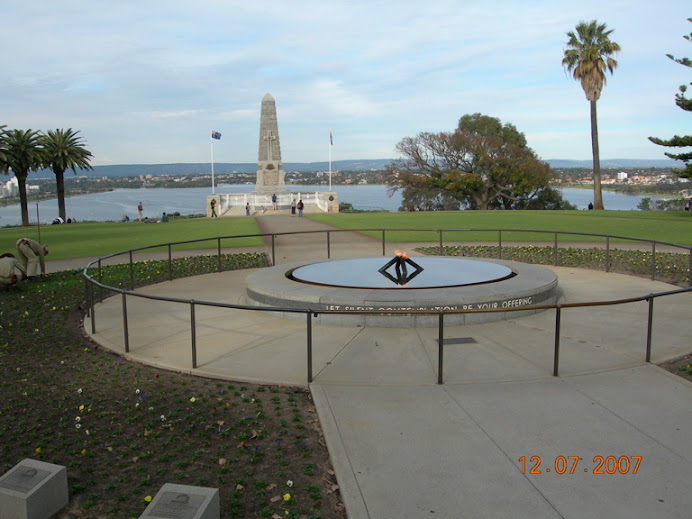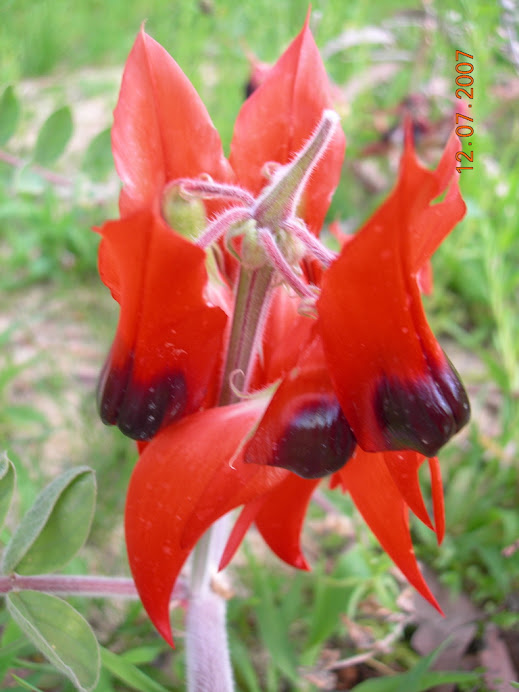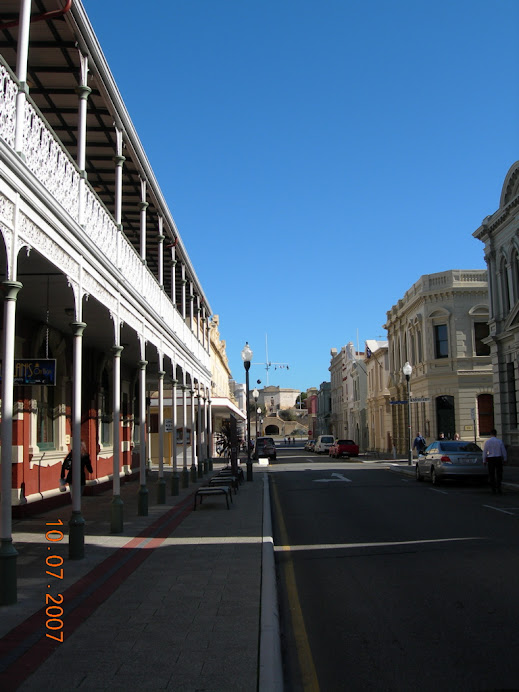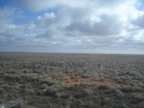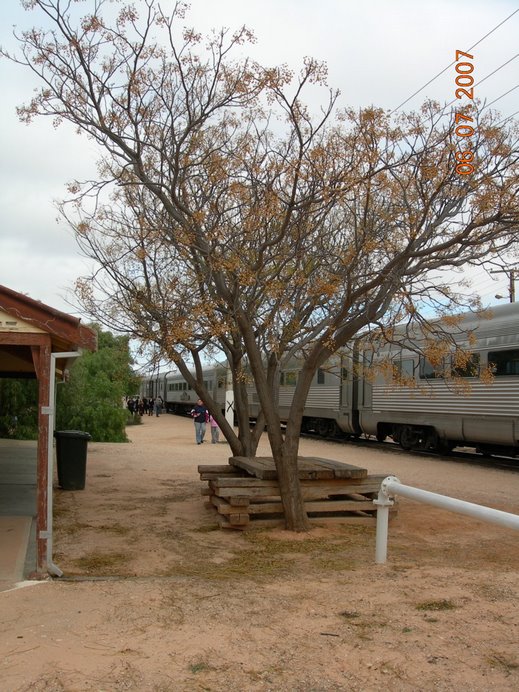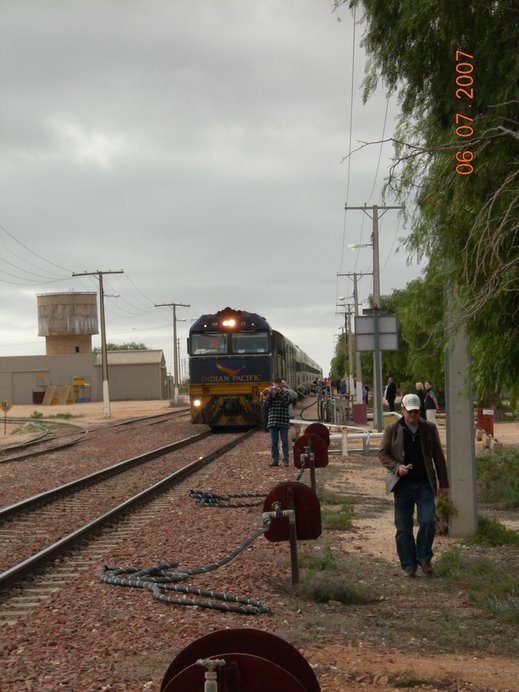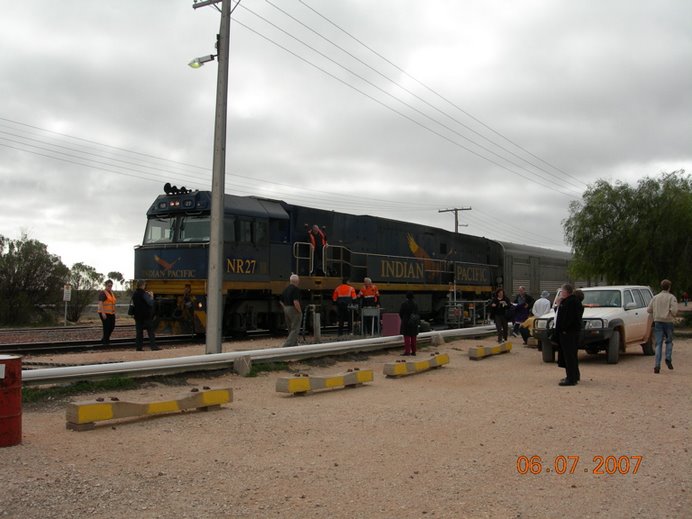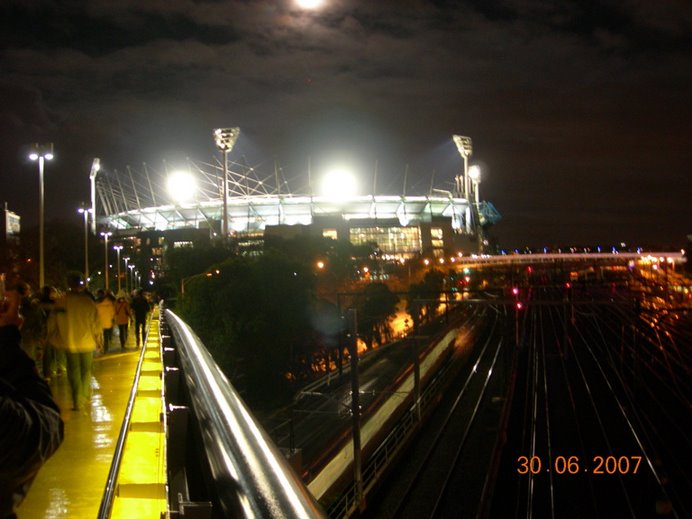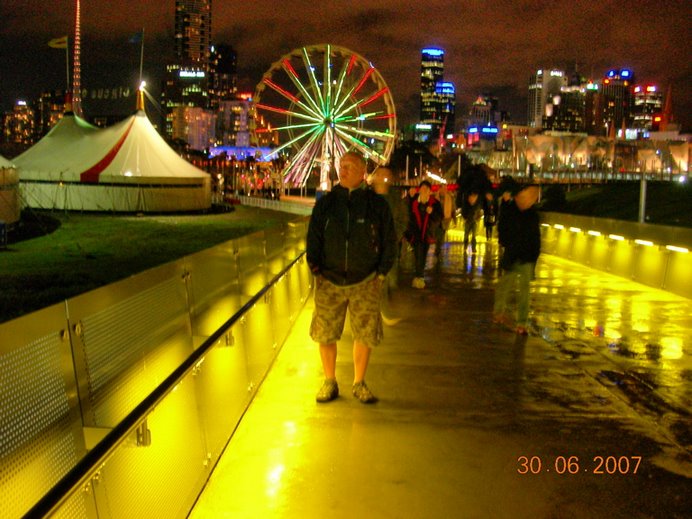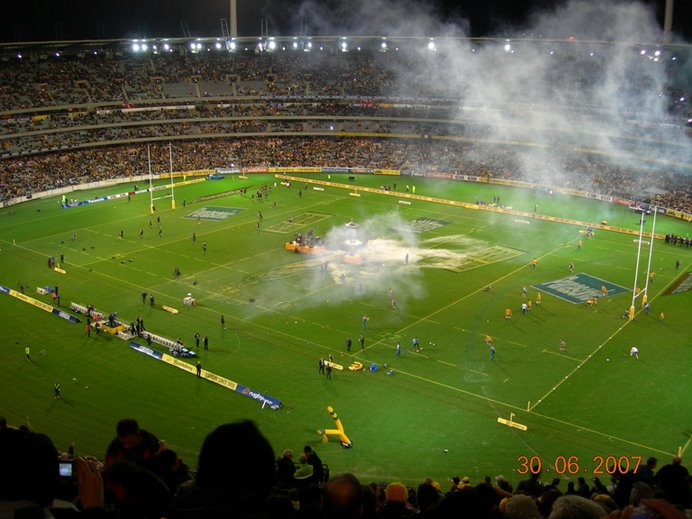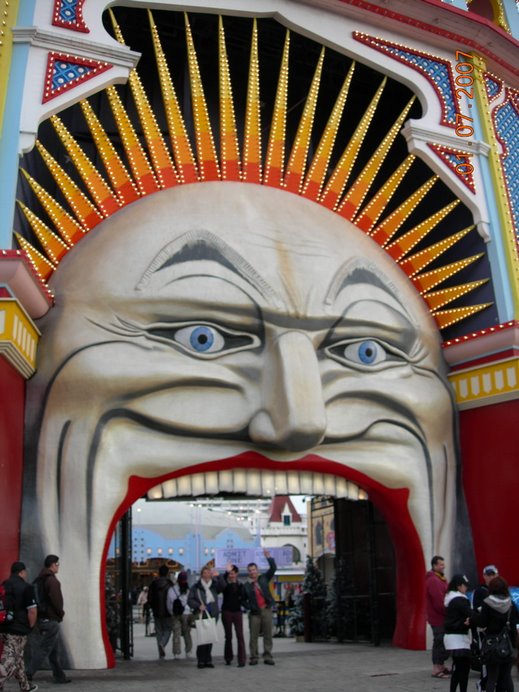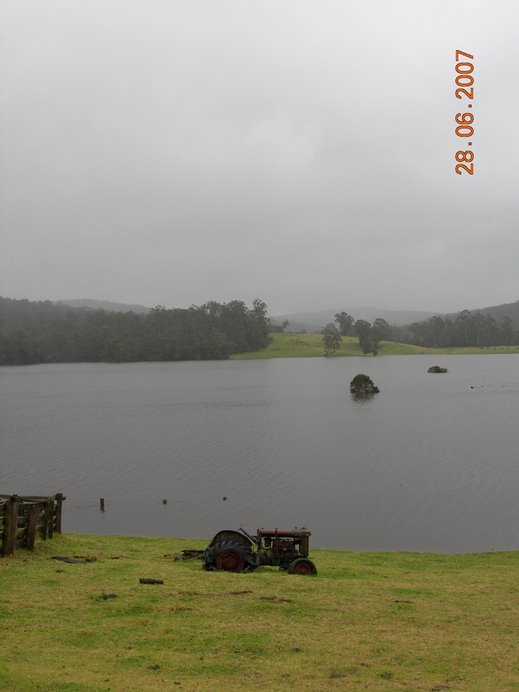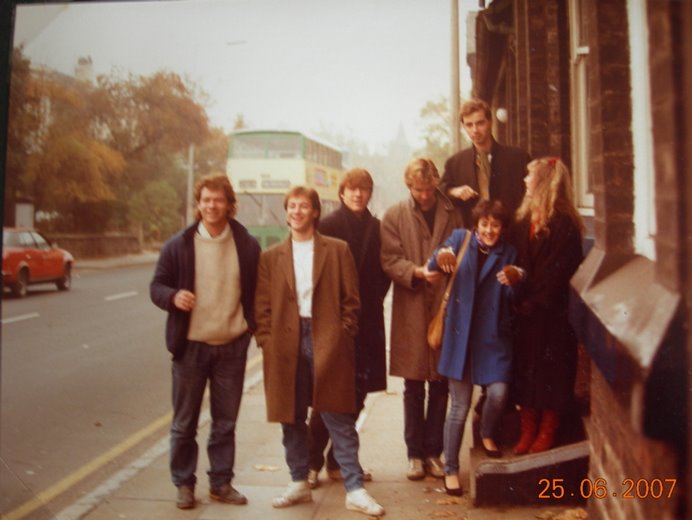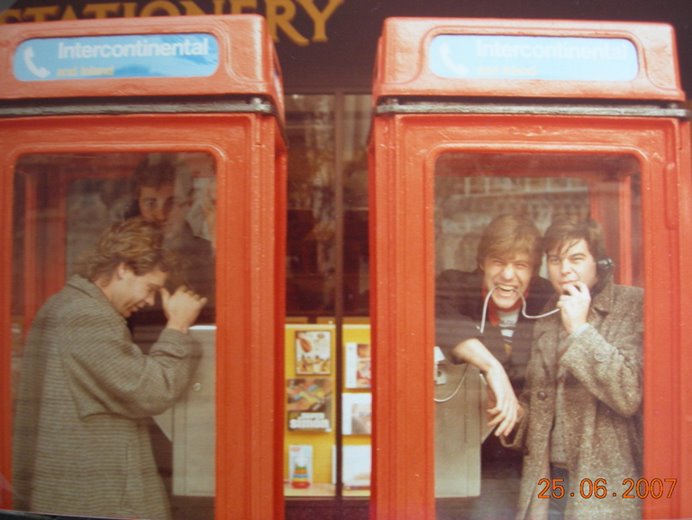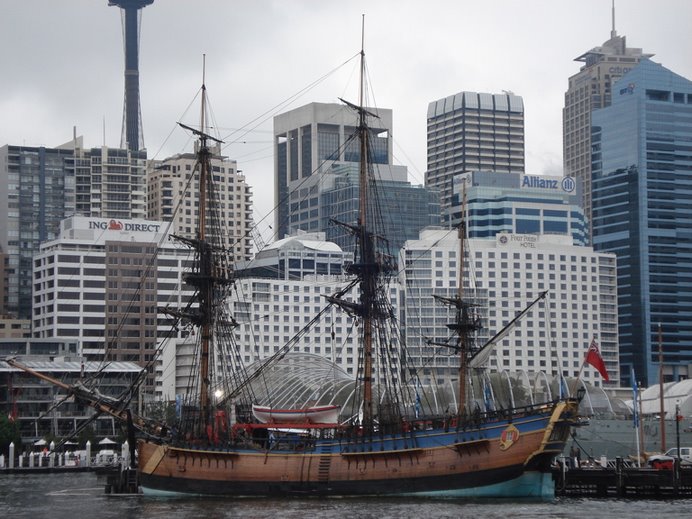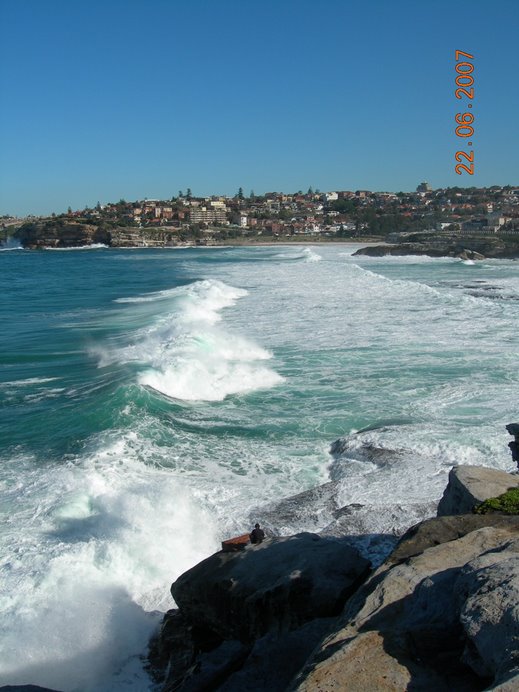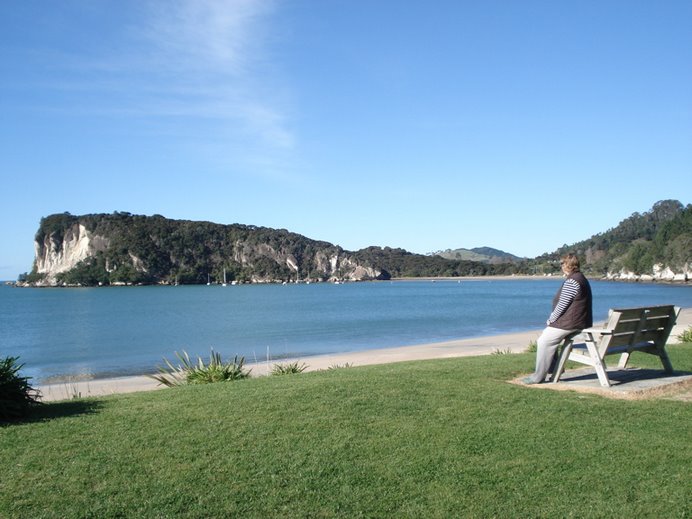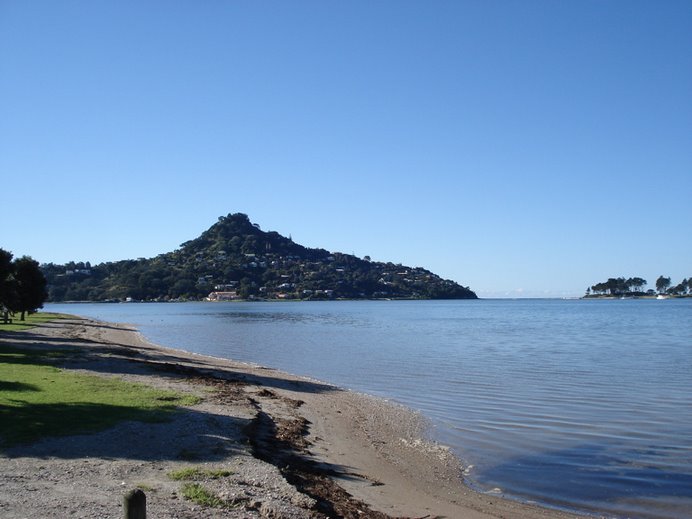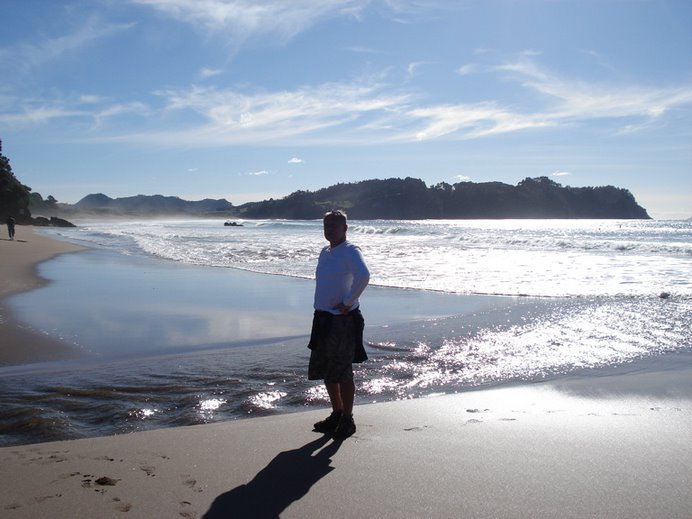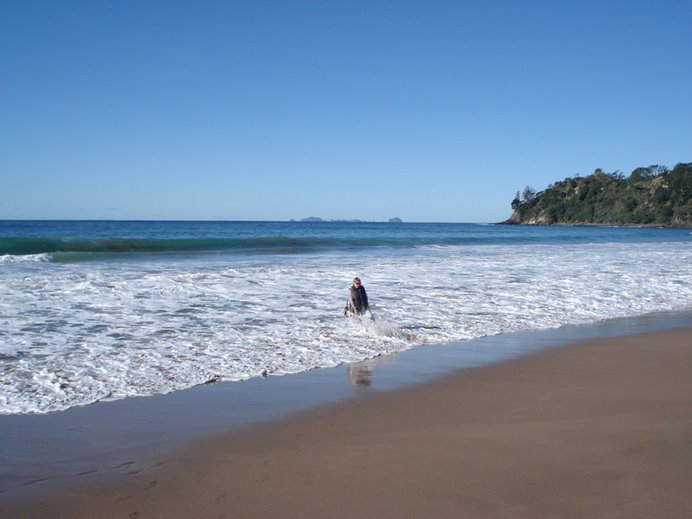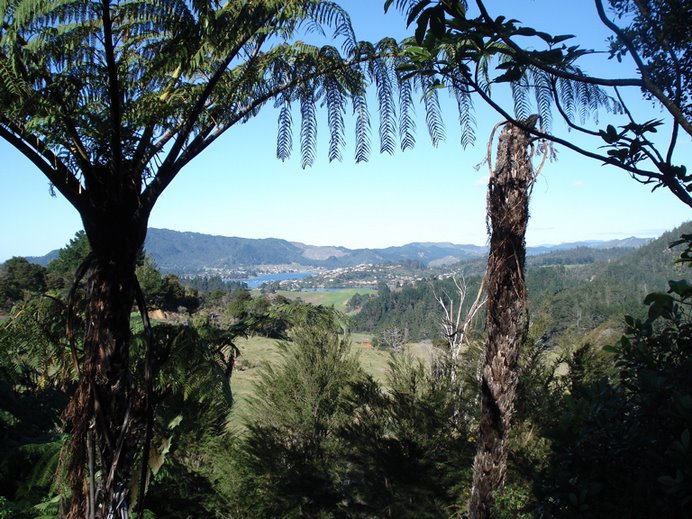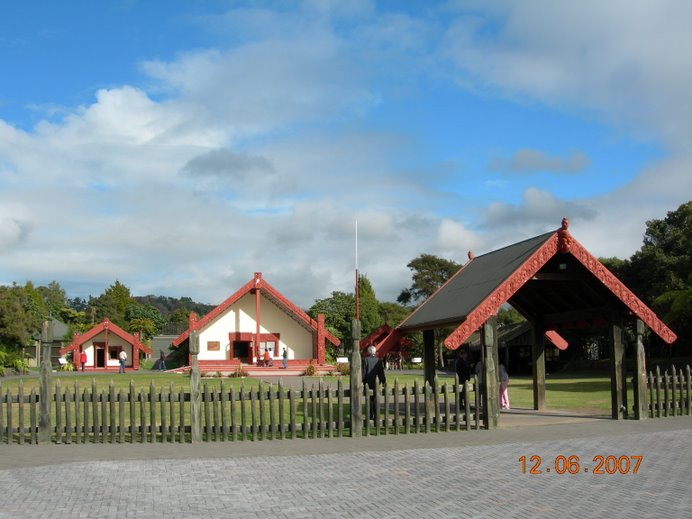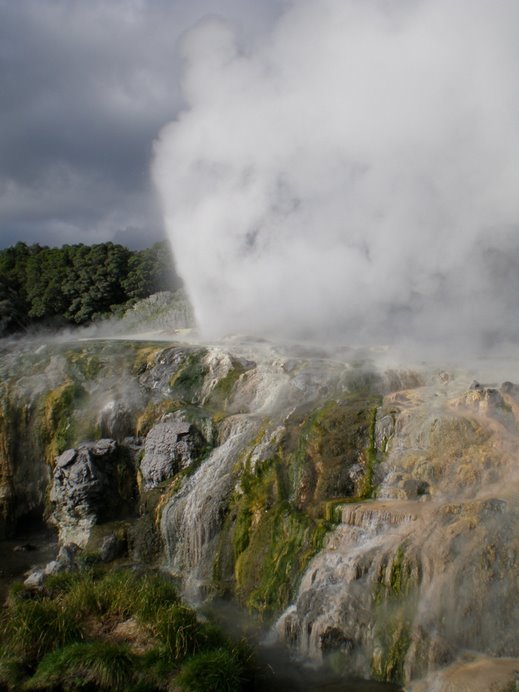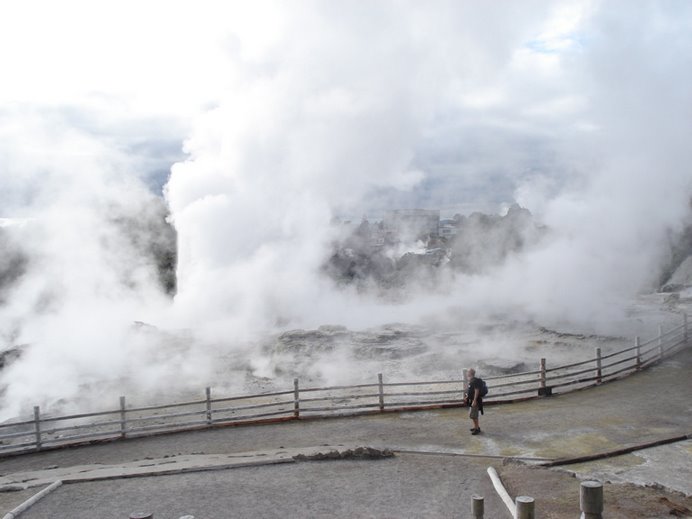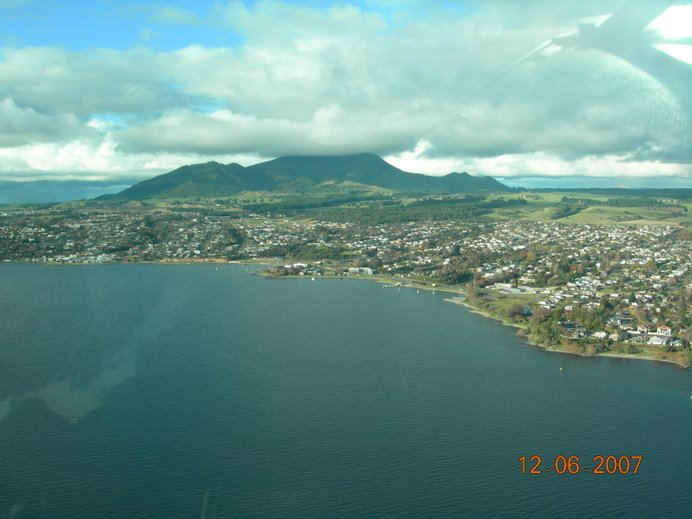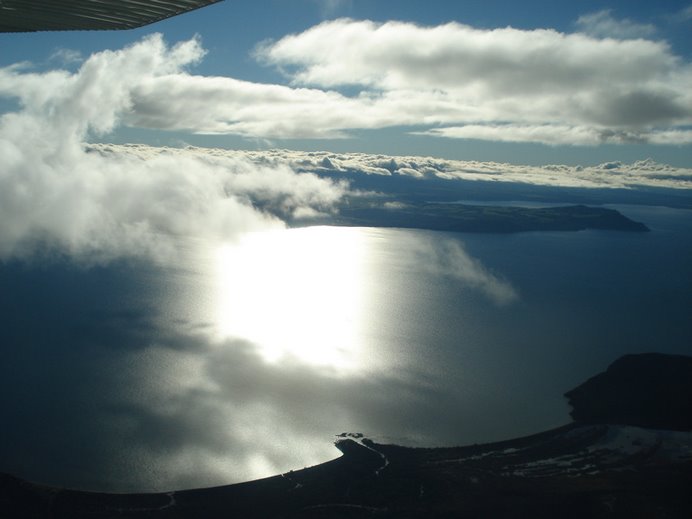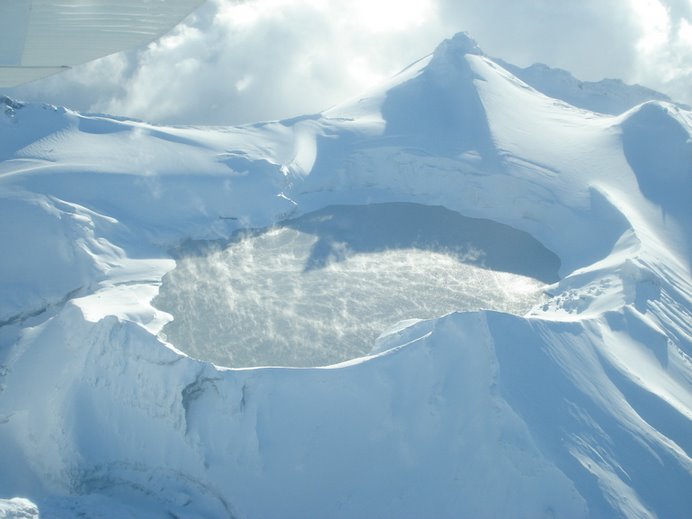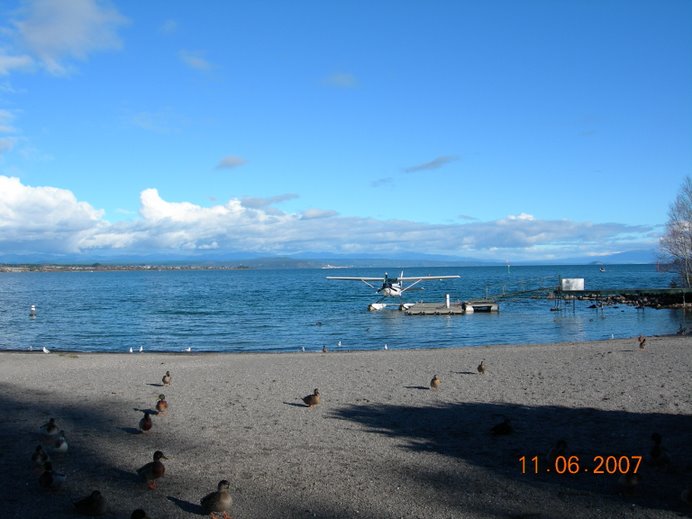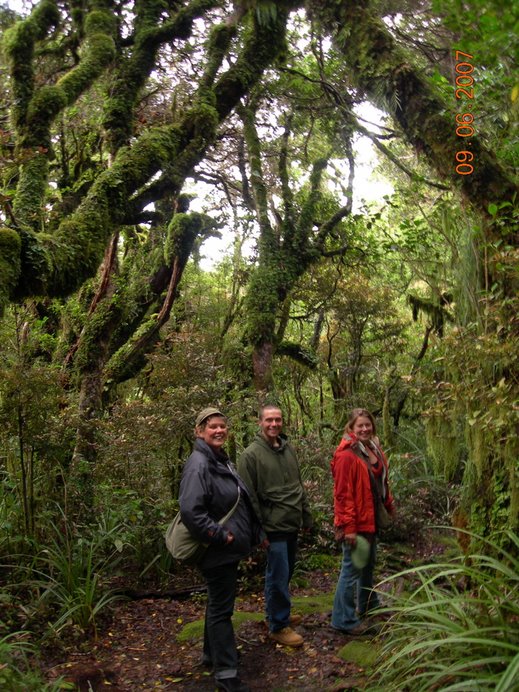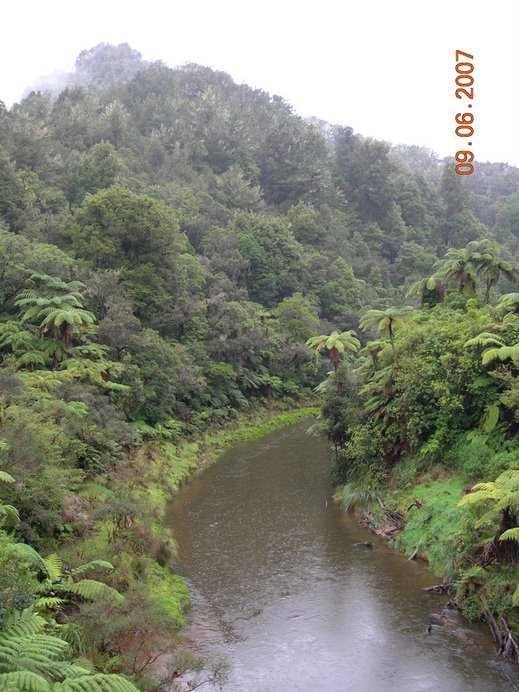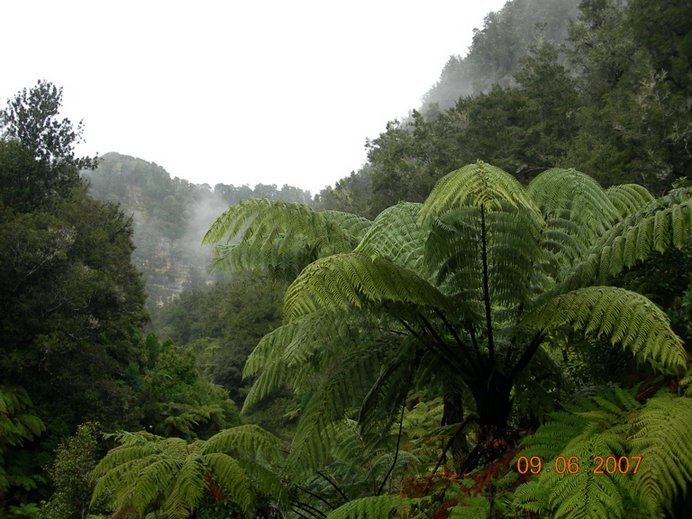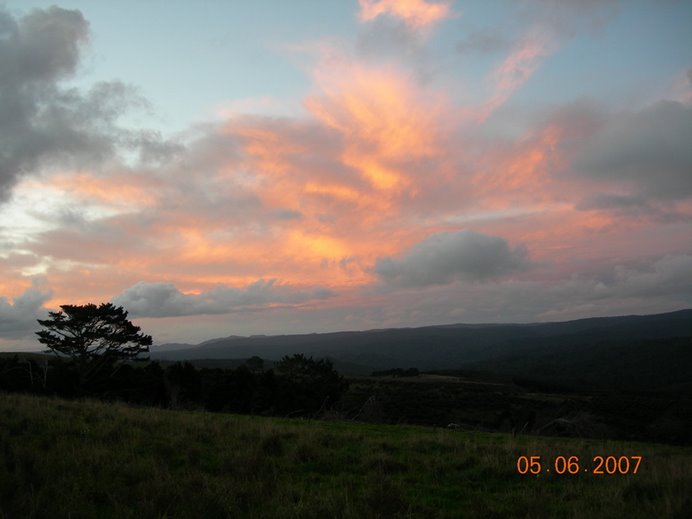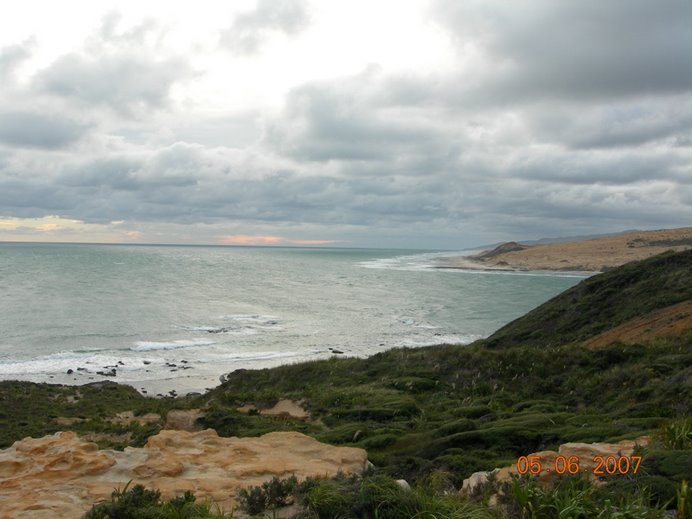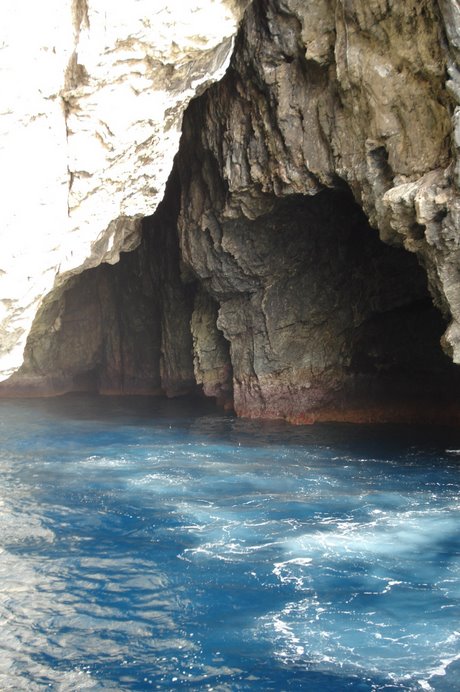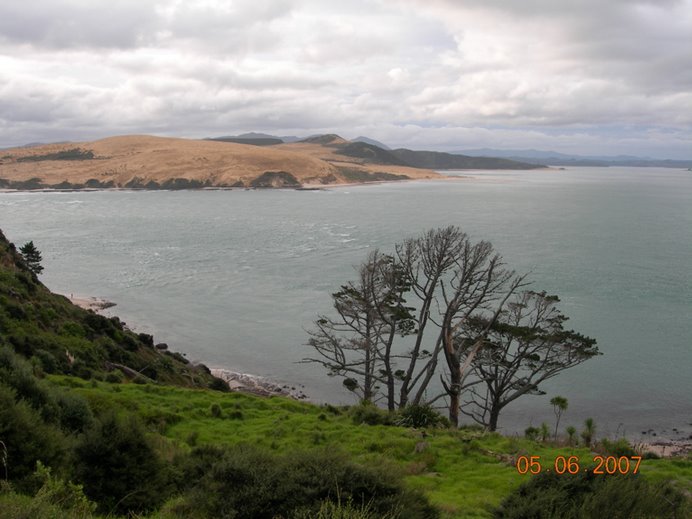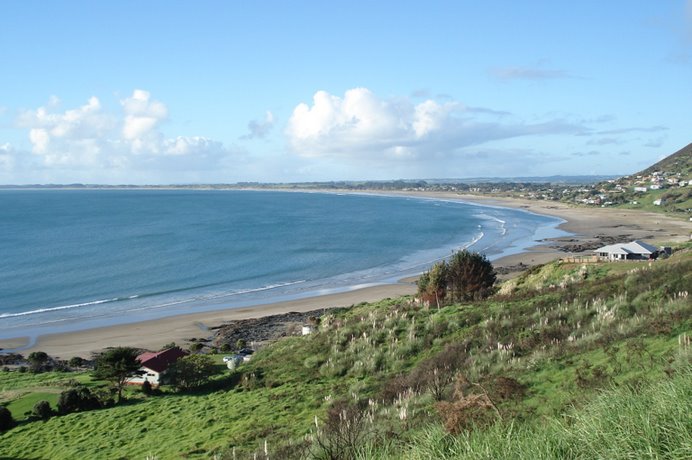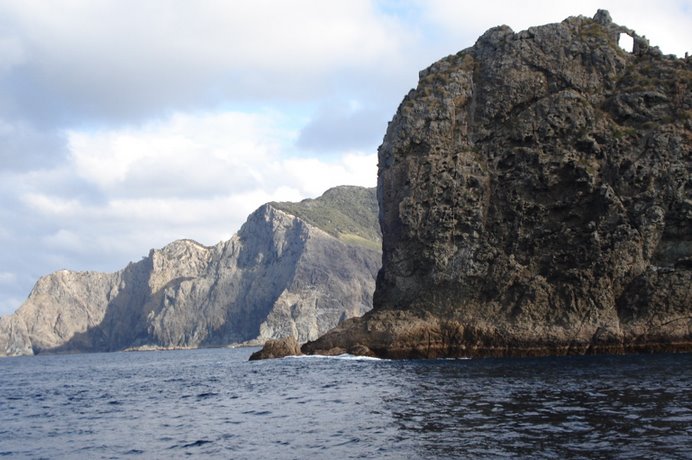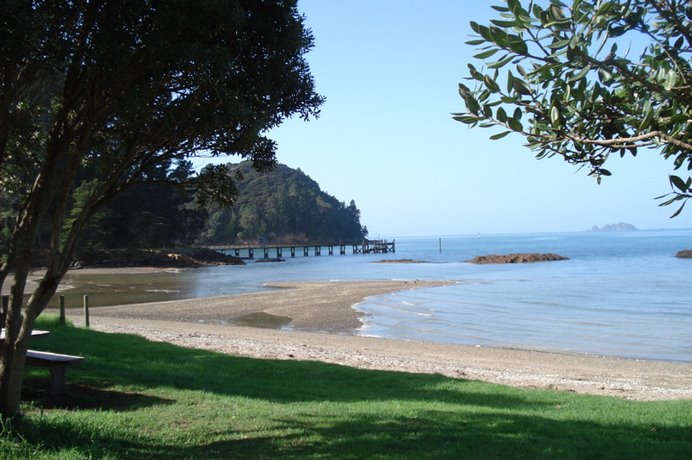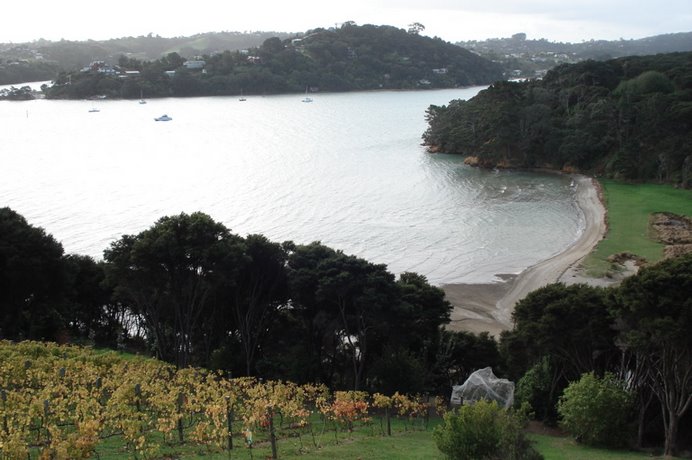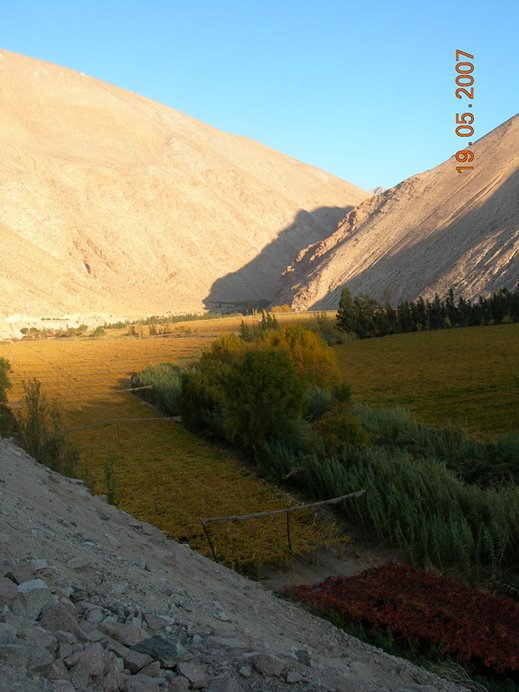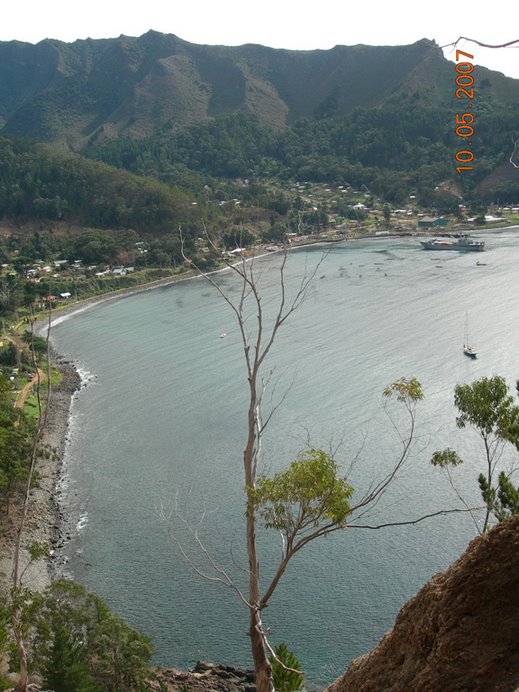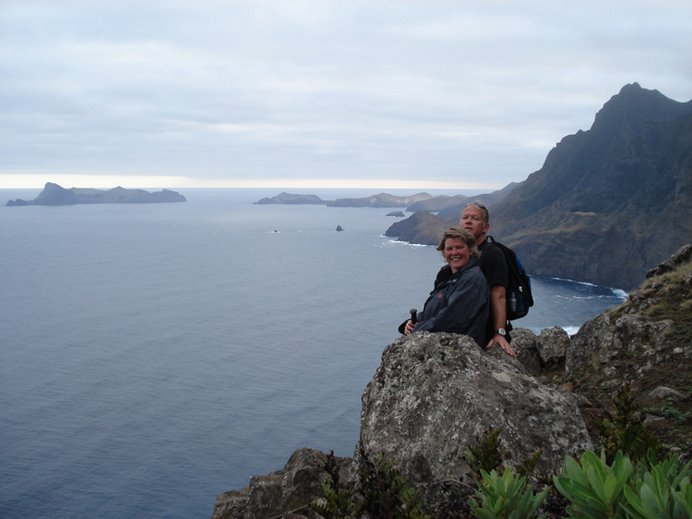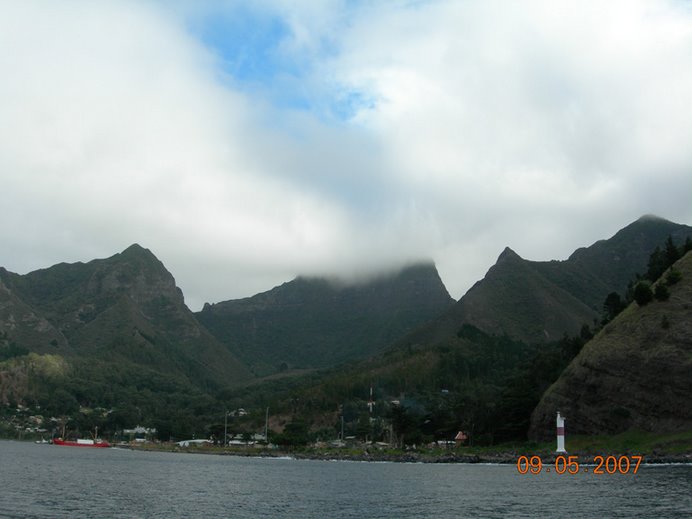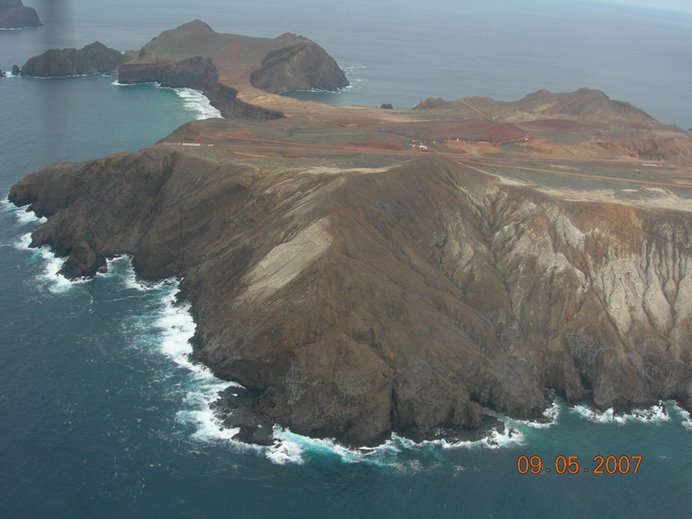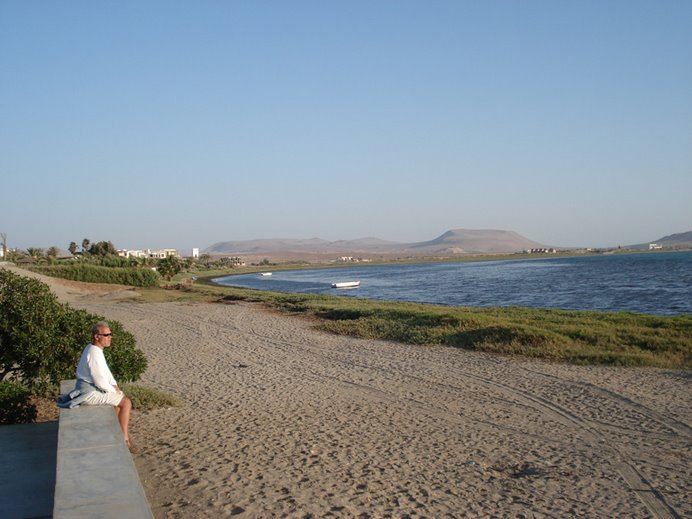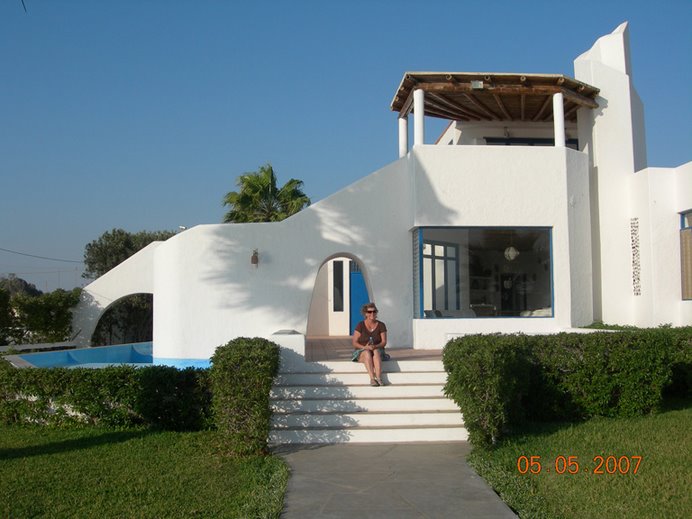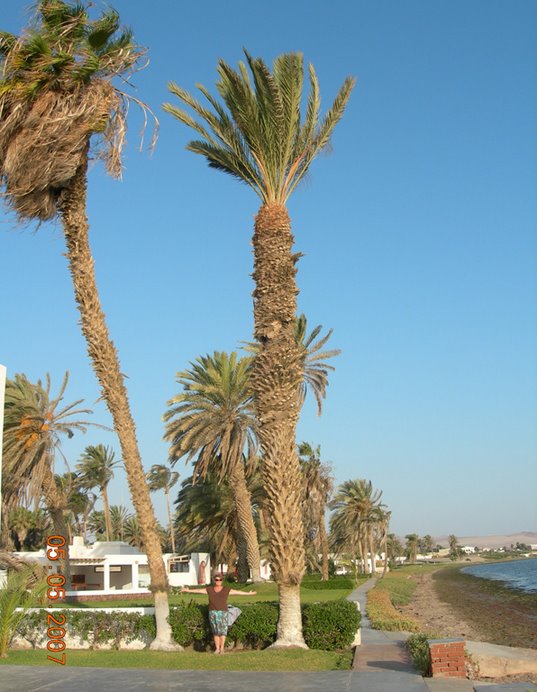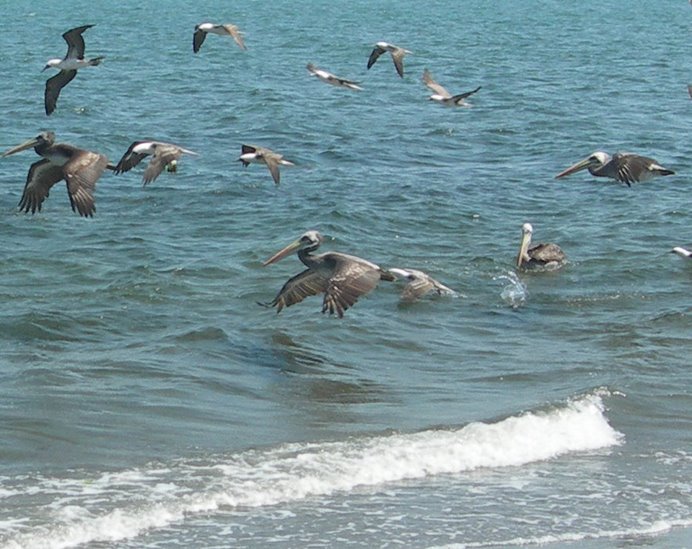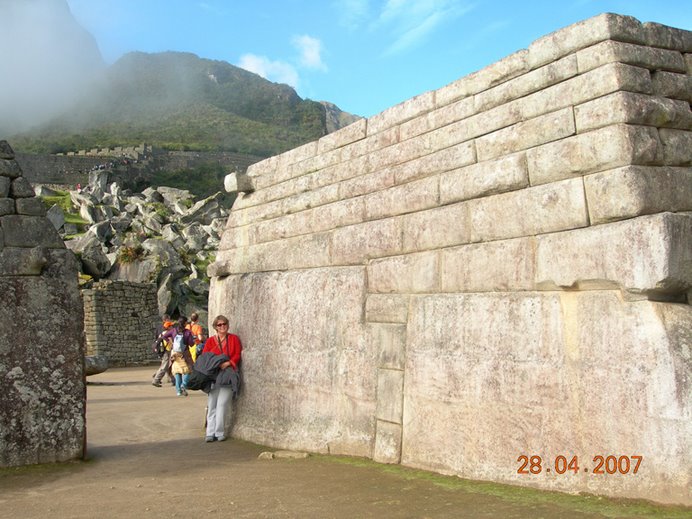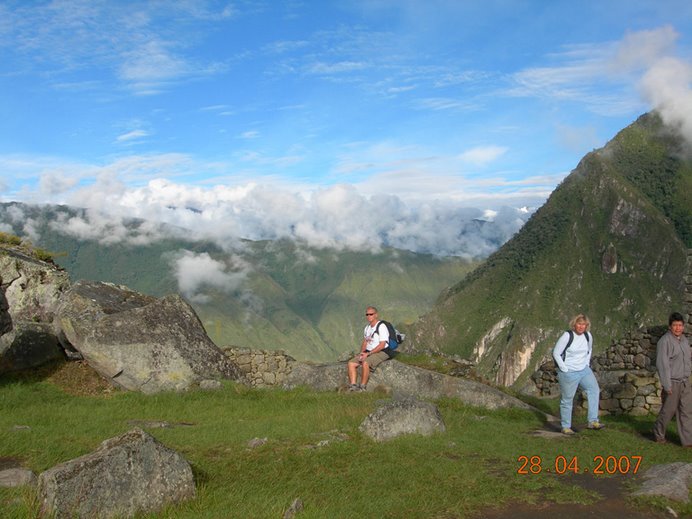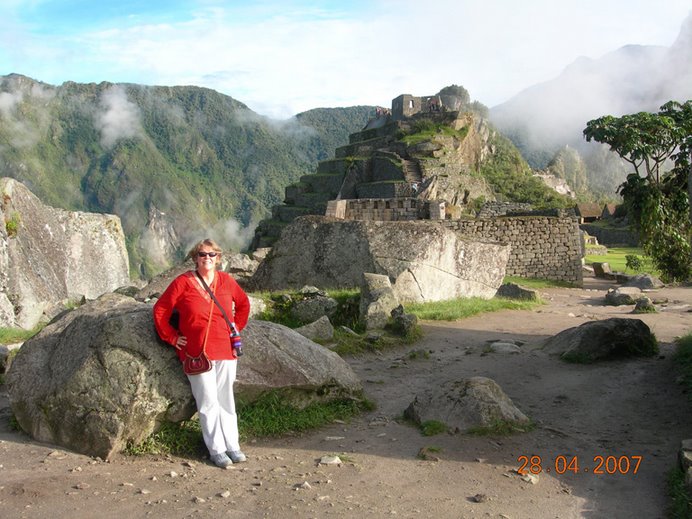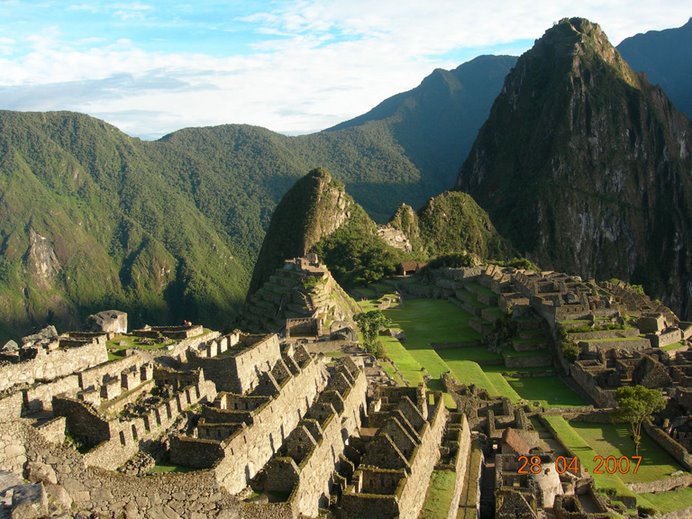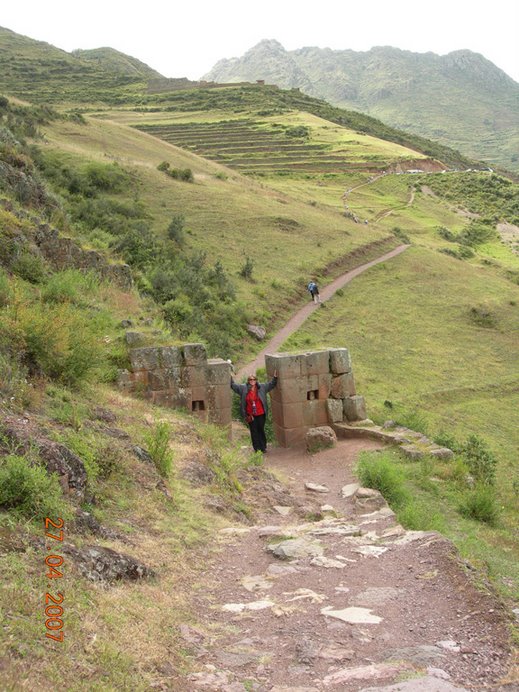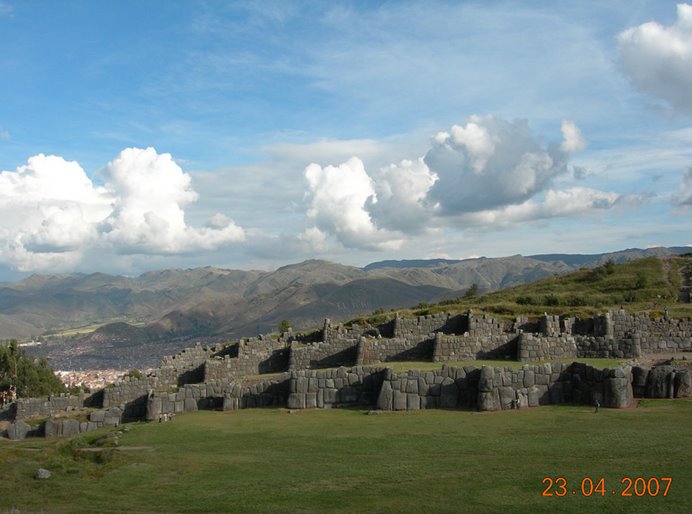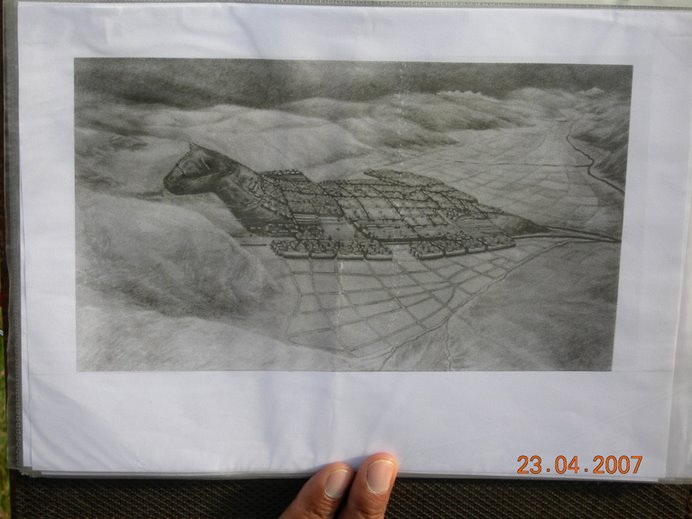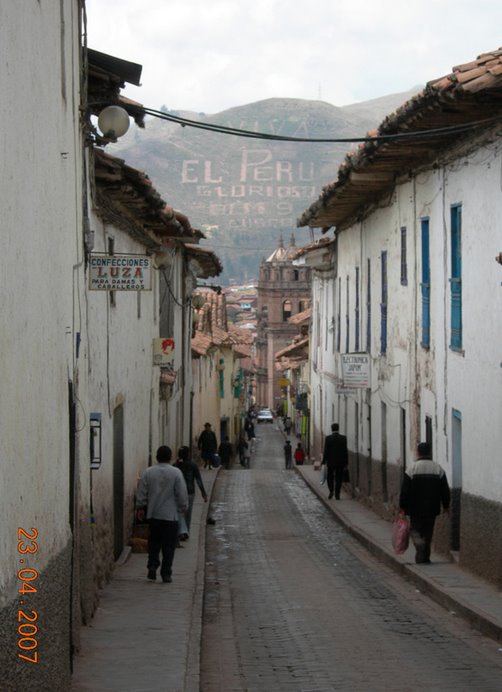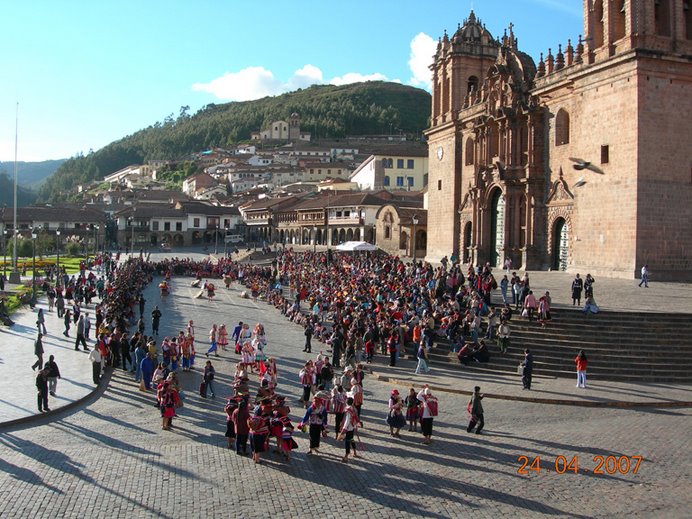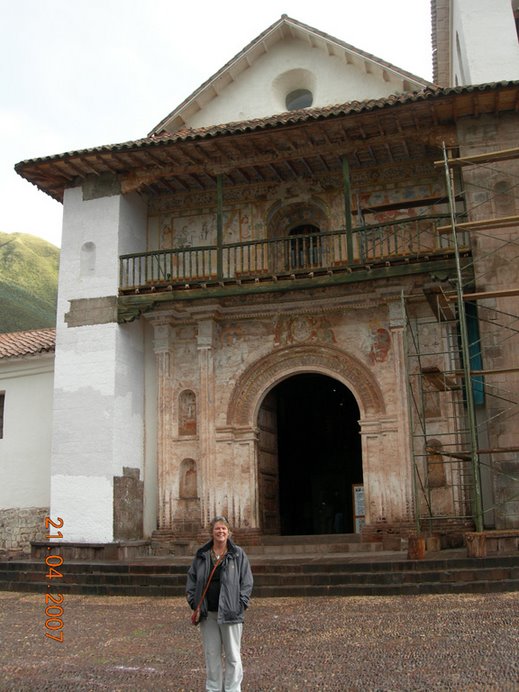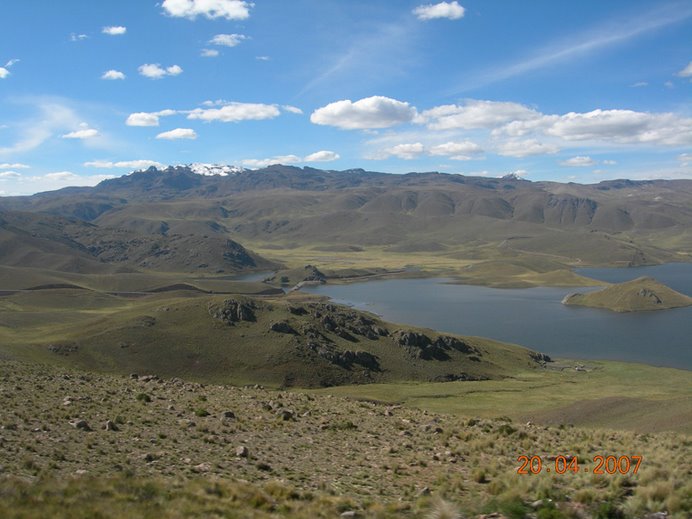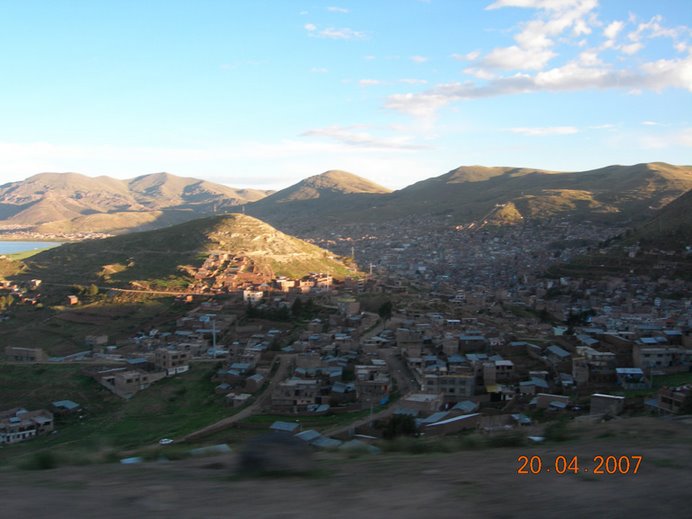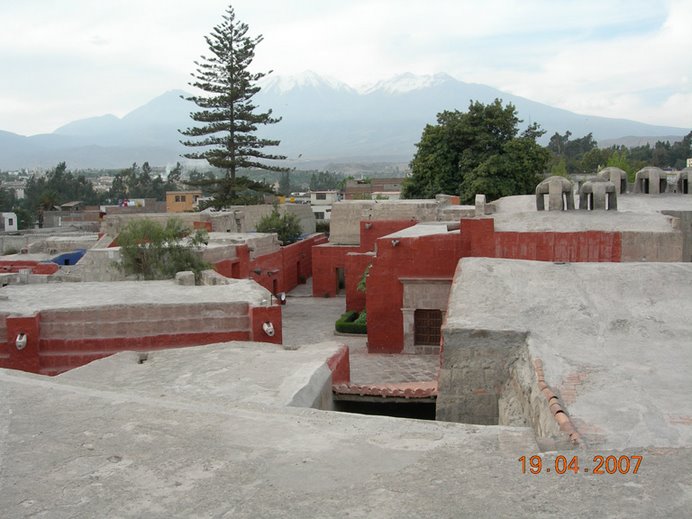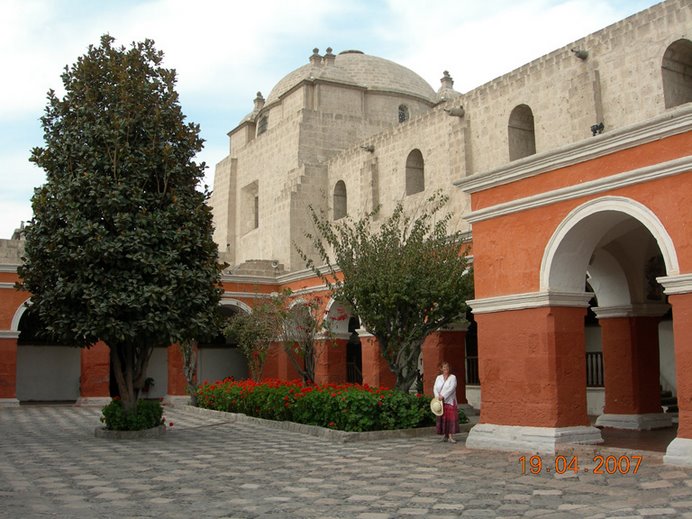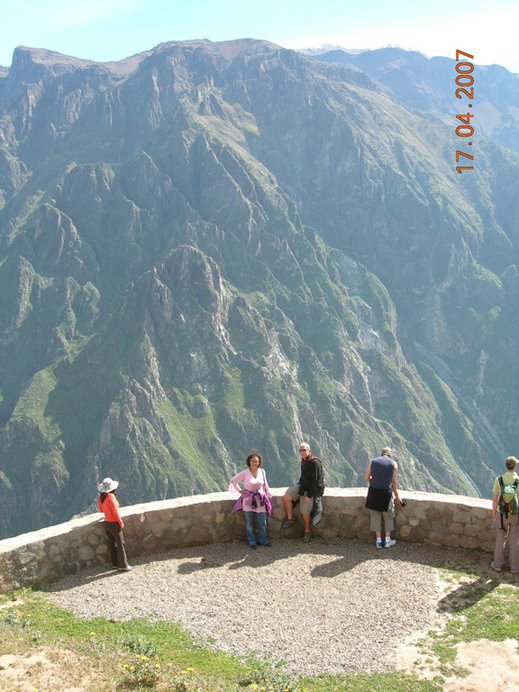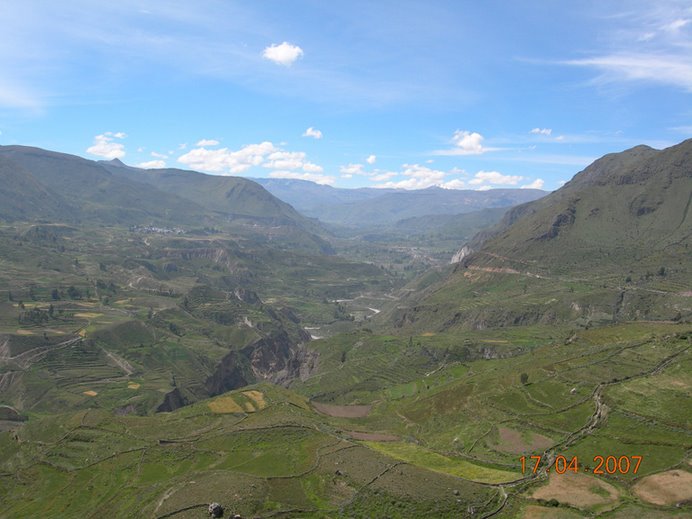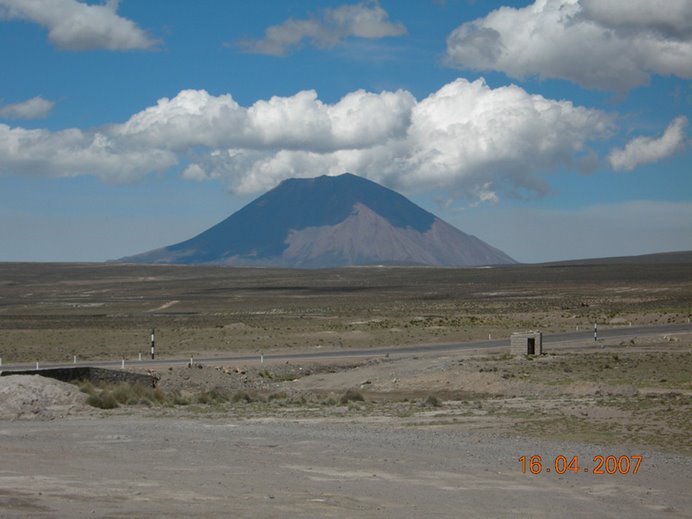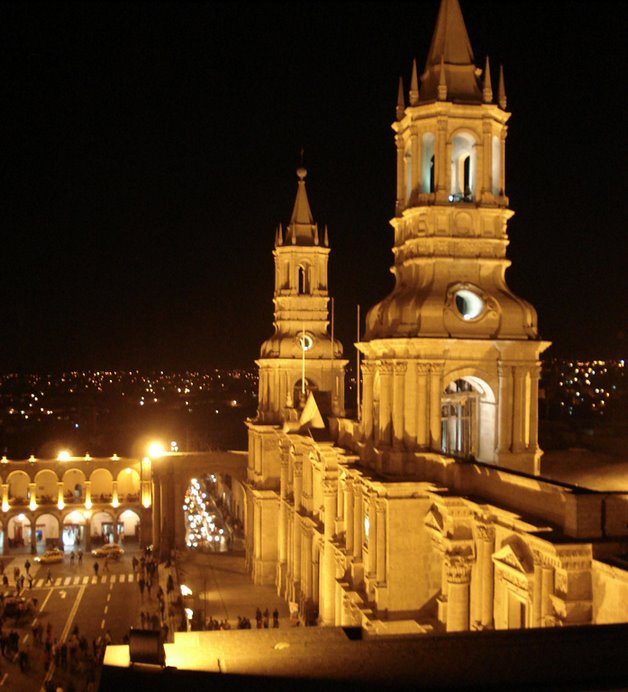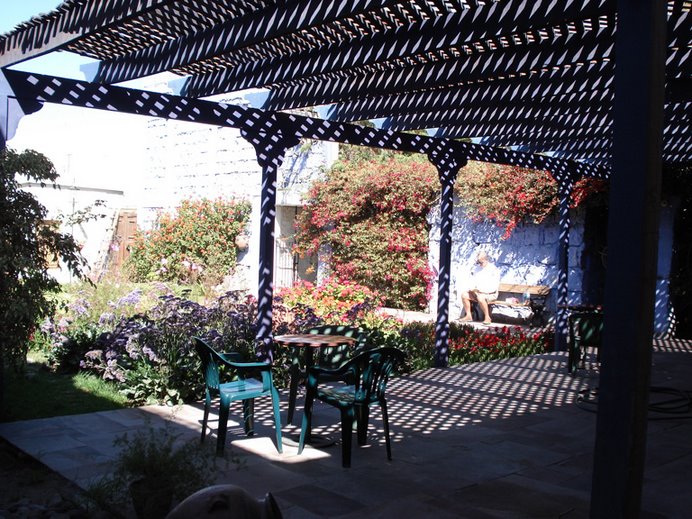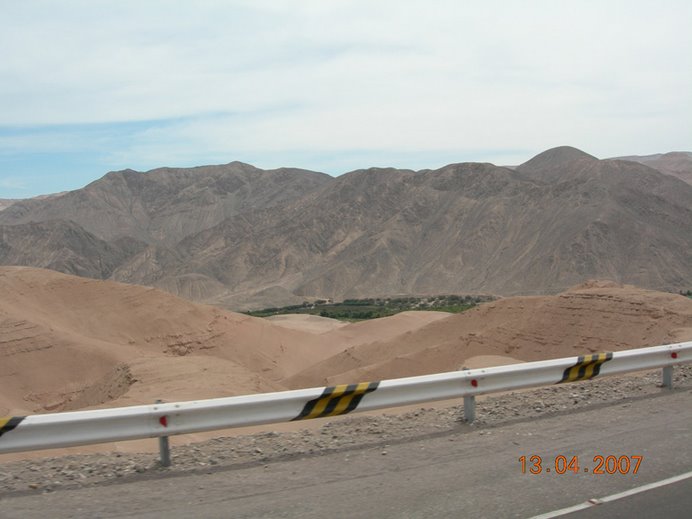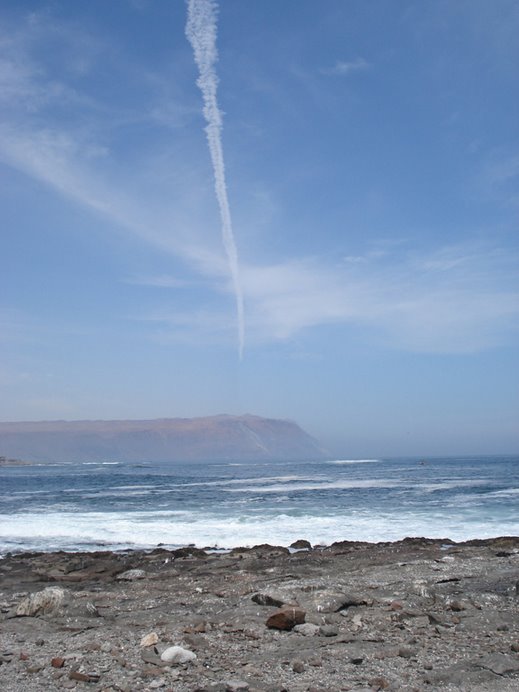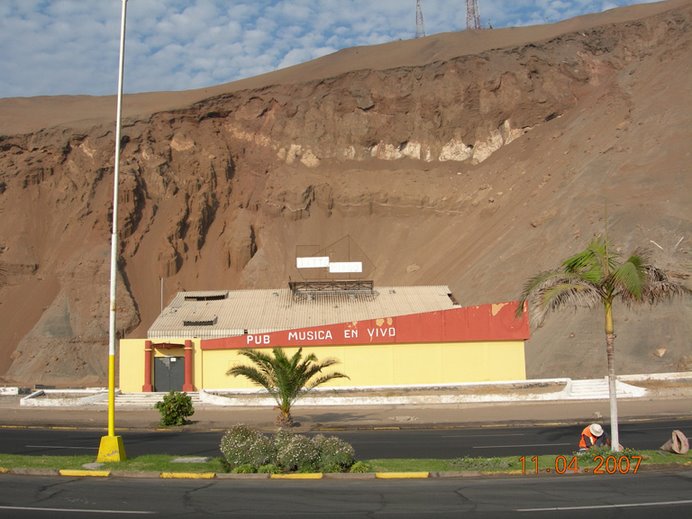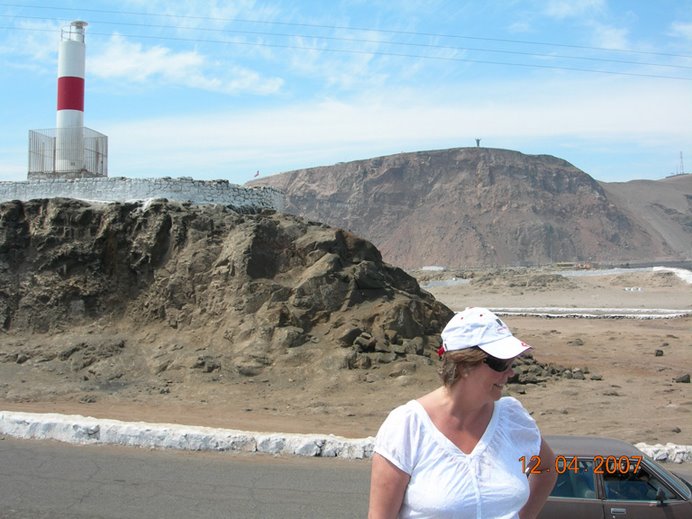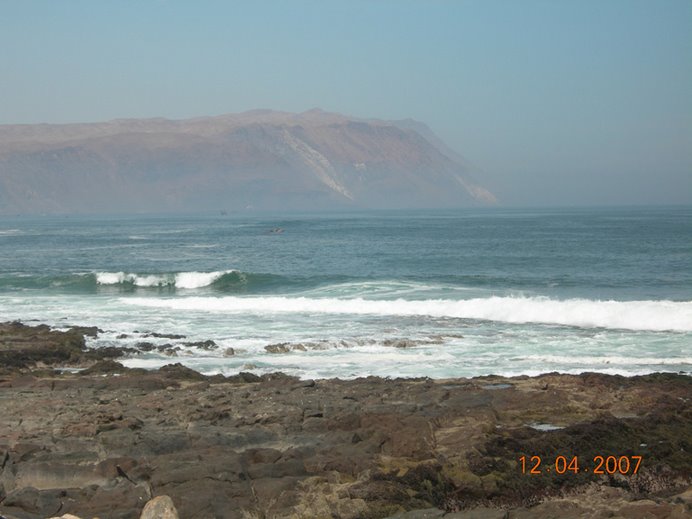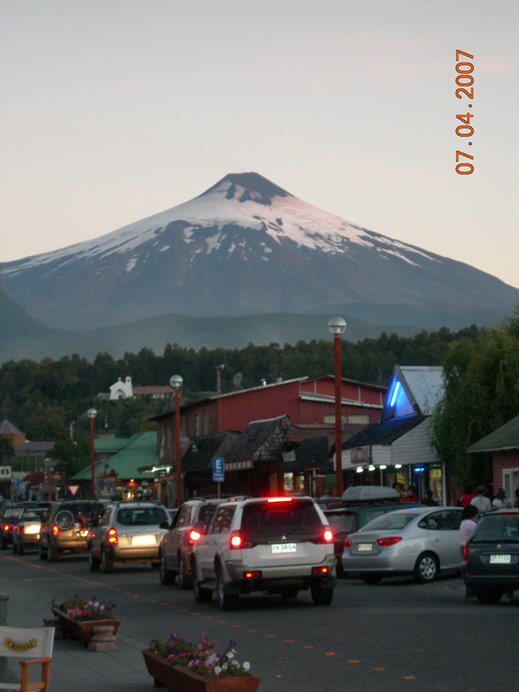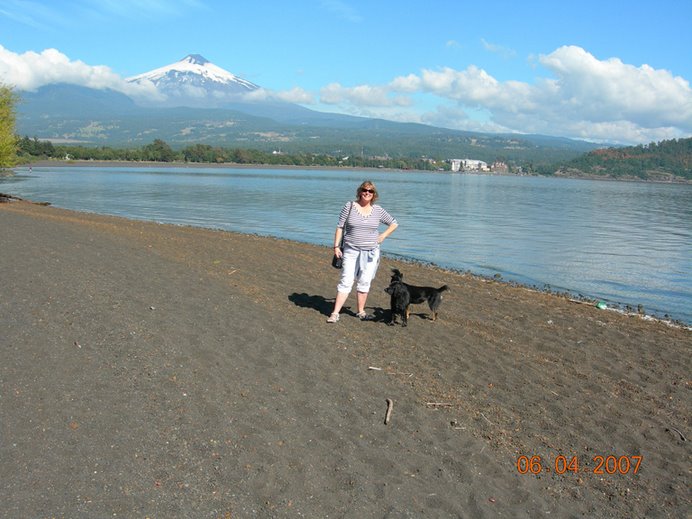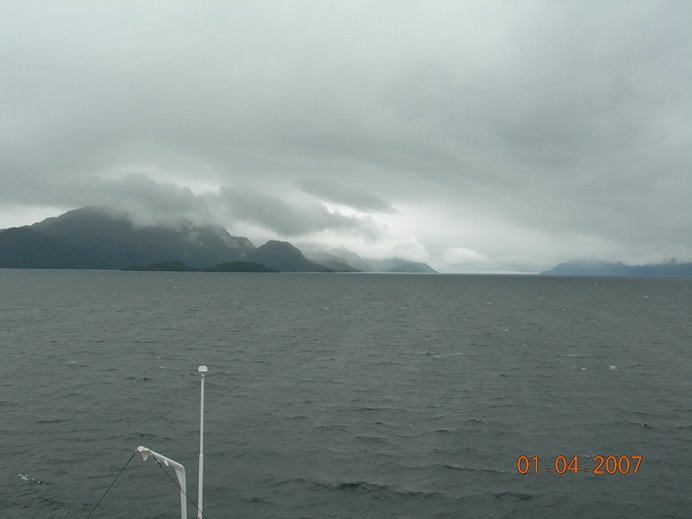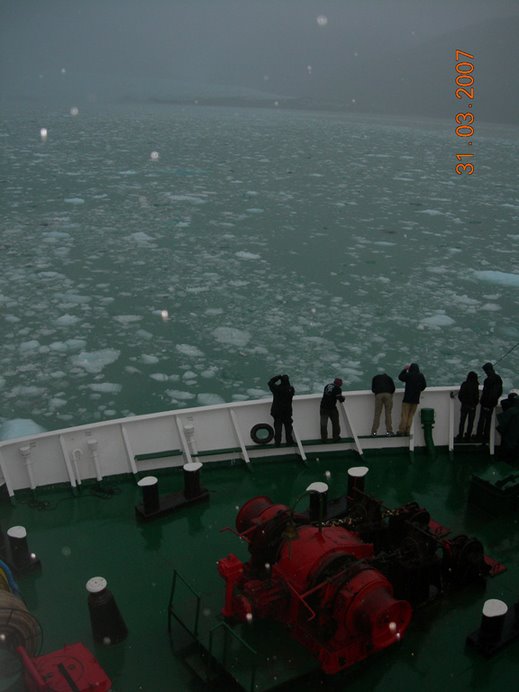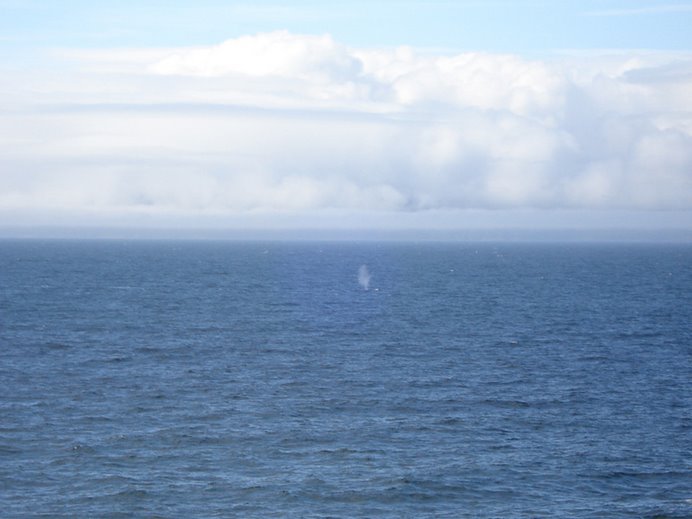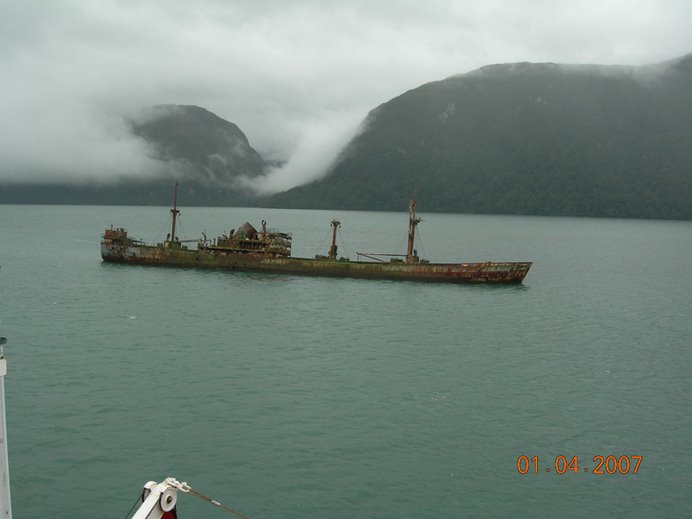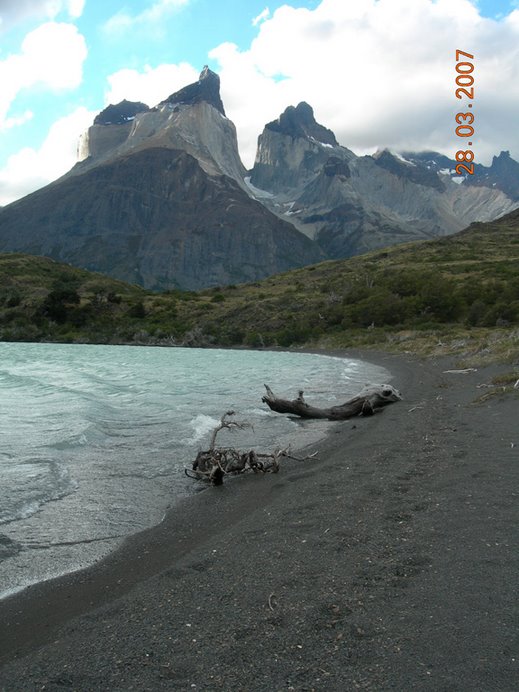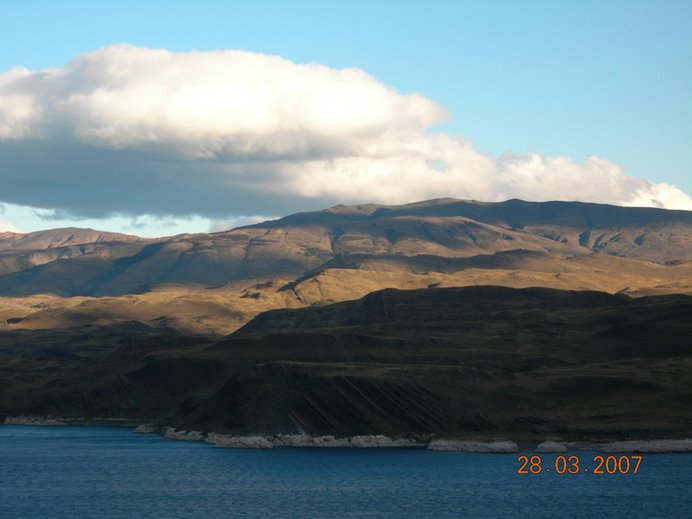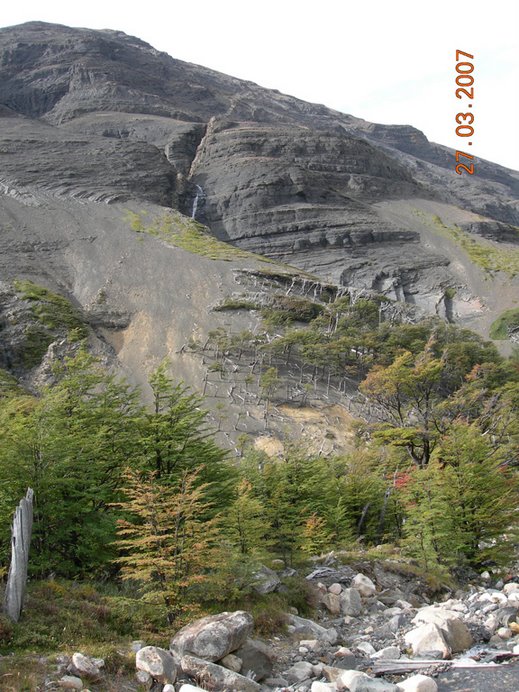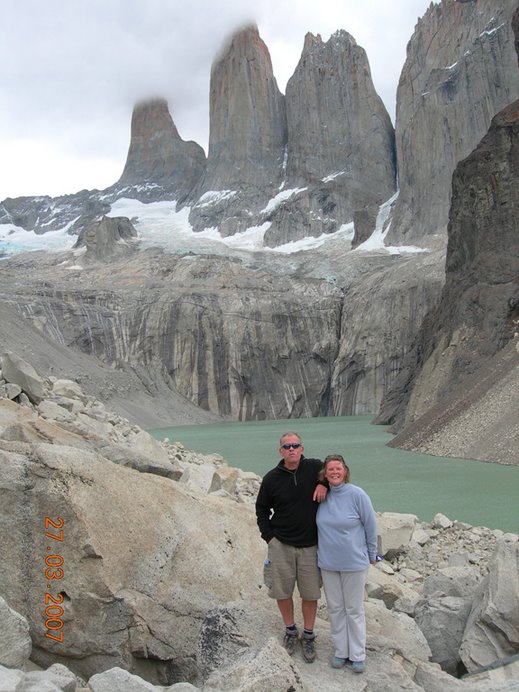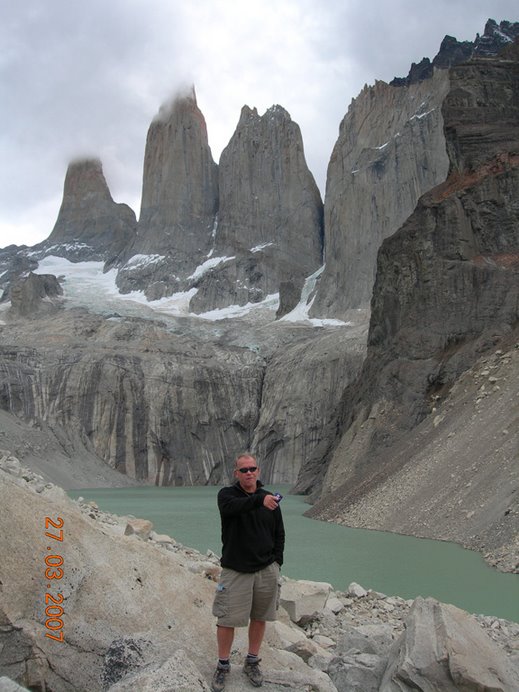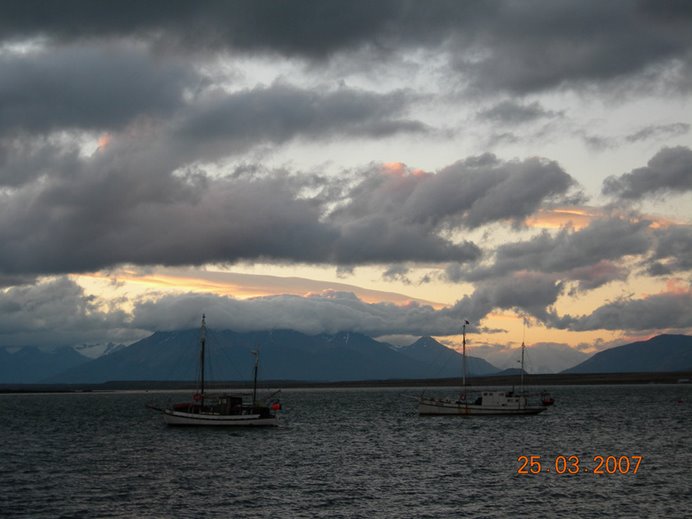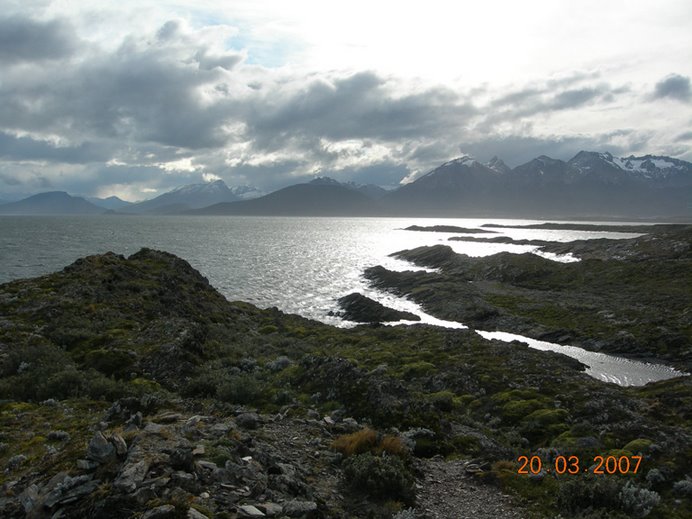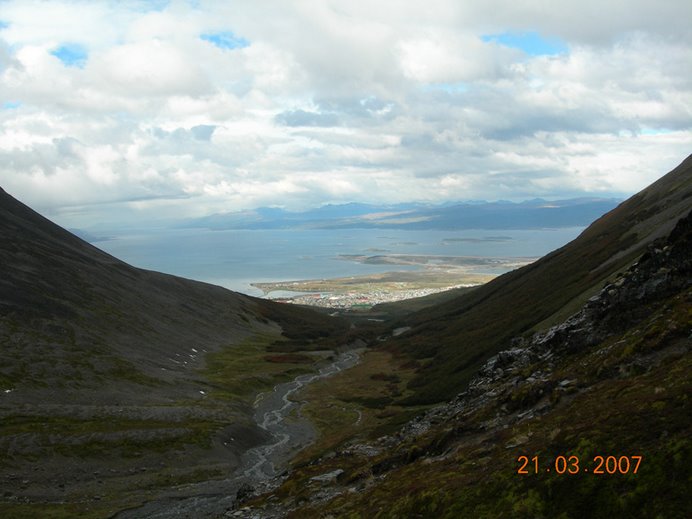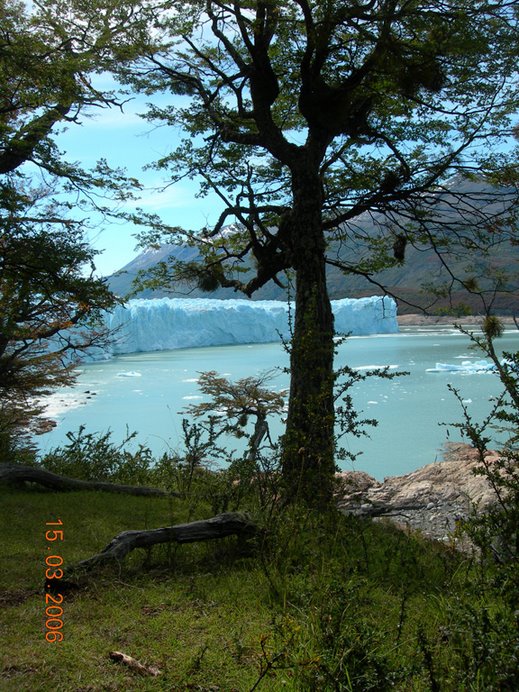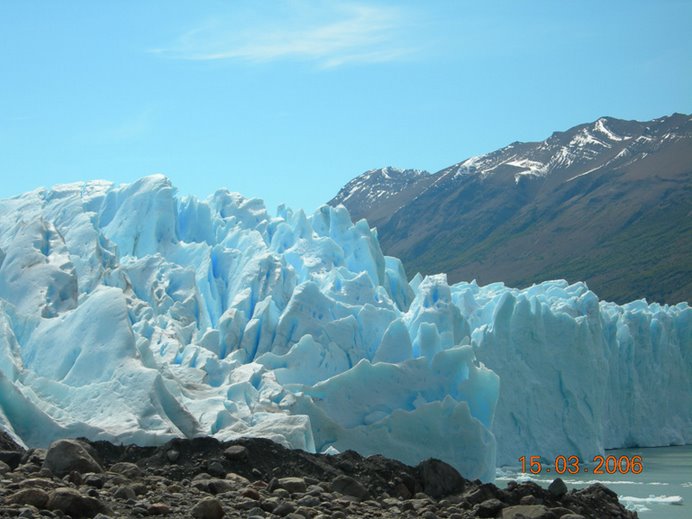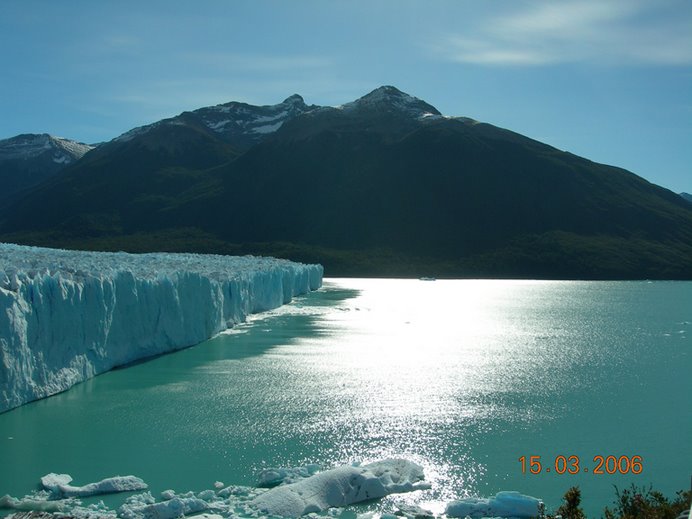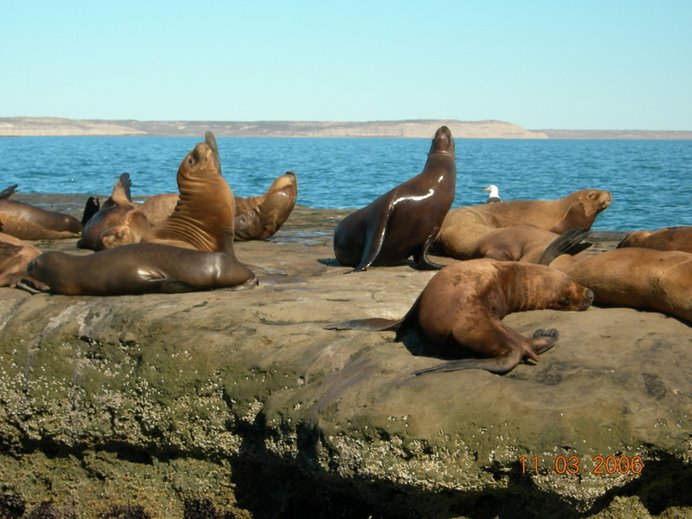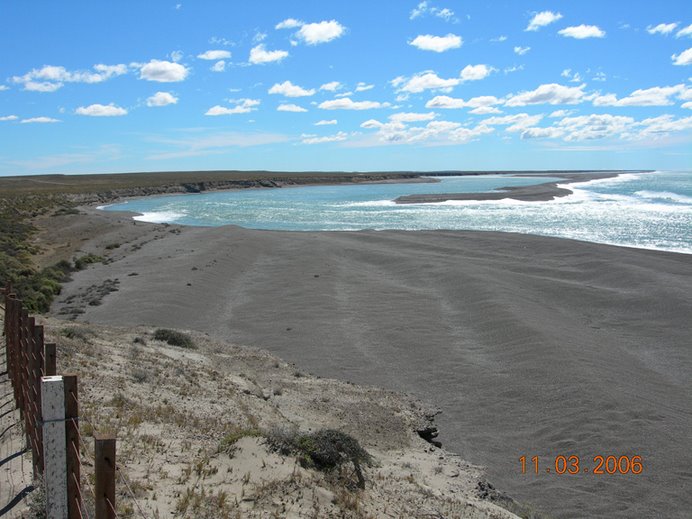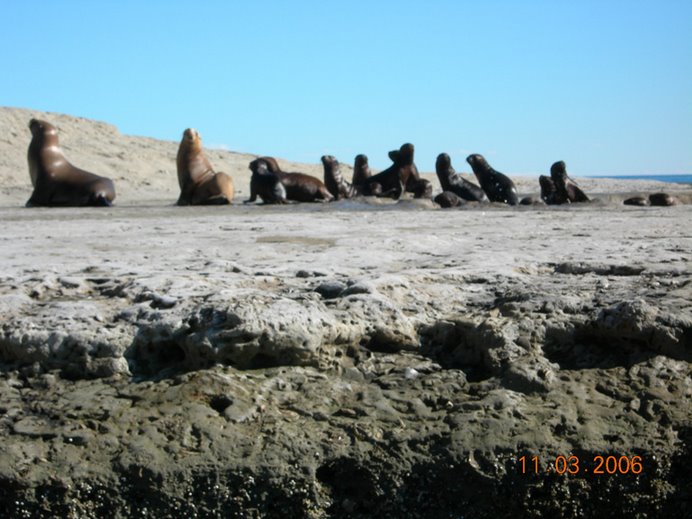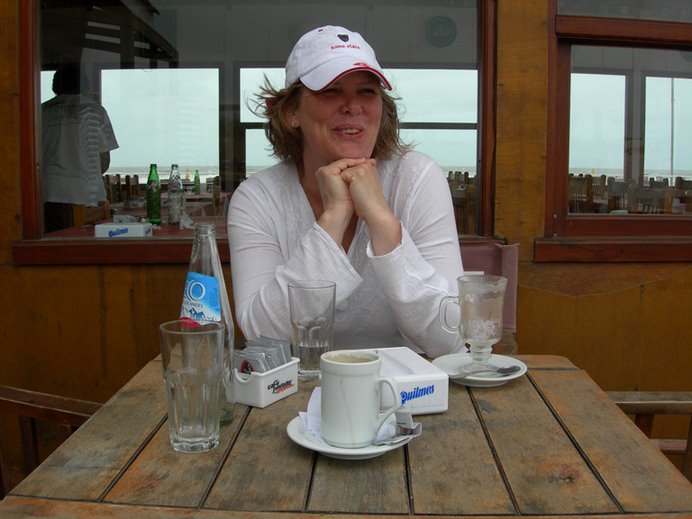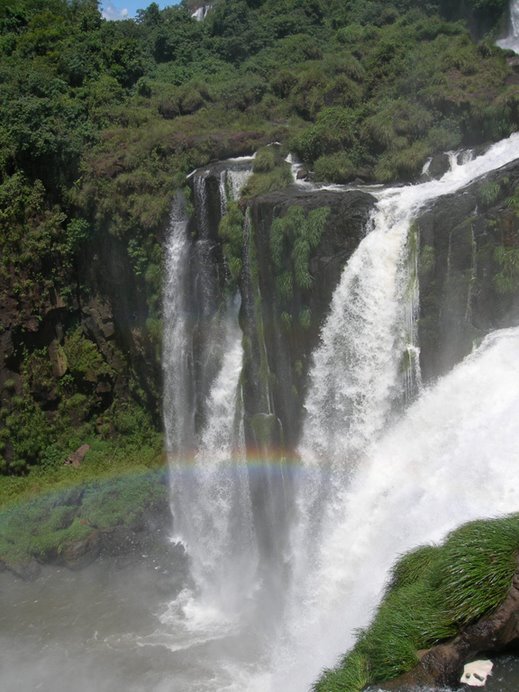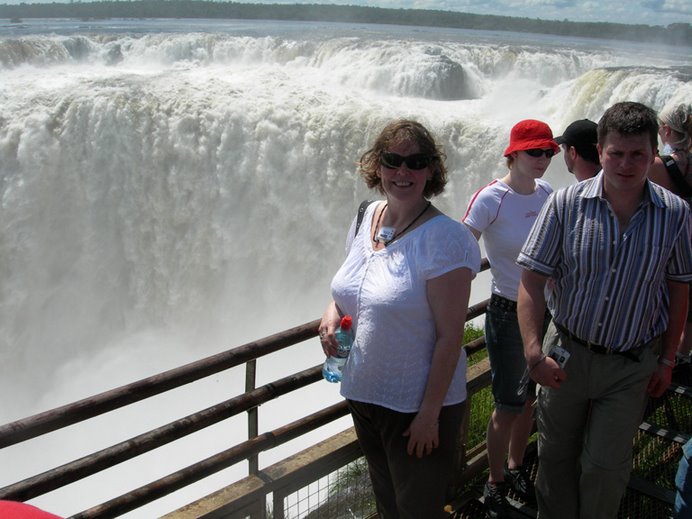Landing in a new country at 4am having crossed the time and date line means you miss out a whole day in your life and get to know the internal workings of the airport for a few wee hours with a thumping head - mmn, jet lag! Once Auckland was rubbing its eyes awake we had a very informative taxi ride to Hotel Duxton, right in downtown, provided by a chatty Kiwi seik. The hotel was a revelation as we had our own kitchen and washing machine in our room and the chance to cook our first meal for three months. Bliss!
Auckland is a pretty and compact city, a similar size to Reading (admittedly on the large side of pretty and oceanside), but with more Asians, especially Koreans! Every second person was Korean who we found out were there for English language courses (cheapest place in the world to conjugate) and to work in every shop and cafe within the city's environs. So far quite an unusual introduction to this far flung haven of the British Commonwealth. We spent a gut churning few hours 190 metres above the city in the Sky Tower, feeling a little nauseous each time a fearless sky jumper hurtled past our noses at the speed of extreme light (they throw themselves off the tower attached to a wire from just above the cafe) The views were outstanding and gave us a sparkling geographical summary of this welcoming city. The viewing map included the Coromandel peninsula and the youthful volcanic islands in the harbour - which was our first introduction to Waheike where Mike and Karen have settled after leaving England a few years ago. Looking forward to catching up with them as I haven't seen Mike since supping Pimms at Wimbledon 4 or so years ago when he first mentioned NZ as a possibility. We celebrated our arrival with a Thai meal at 'Mai Thai' right next door. Lashings of green curry and a generous helping of Pad Prik.
Met up with Dr Karen who has a health centre in the port area of town, took the chance to moan to Dr Andrew, (one of Karens colleagues) about middle age spread, hair loss and various pains I had in all moving parts of my poor body and got some pills to stop my legs falling off in Starbucks...all is well! We caught a ferry with Karen for the 40 minute ride to Waiheke...and the harbour area of Auckland is stunning. Little volcanic islands poking up from the bay; even a nature reserve slap bang in the middle..striking similarities to the trip from Sydney to Manley. Mike, Karen, Jed (9) and Alfie (7) live in a fabulous architect designed state-of-the-art home overlooking Dead Dog Bay - all those episodes of Grand Designs I had watched intently suddenly rolled into one. We were esconced in the 'weekender' on the far side of the tennis court so we could burp and rest in peace while our hosts went about their daily business, such as going to work and school. The gardens were laid to vineyard below the house and then into gentle forest towards the bay which was deserted and gorgeous. The weather was glorious and walking tracks were trod, fish were caught, wine was tasted at vineyards, and cocktail parties were attended (in camping fleeces that looked a little worse for wear and smelt of fish and bonfires - a new cologne by 'Shabby old Brits'!) At the cocktail party Fo hooked up with a a local island heiress, gorgeously christened Cecily Devine c. 1967. You could hear RR gently cajouling as Gatsby..sisters, five altogether and all Devine we understand!
The local supermarket had a glass cabinet entirely dedicated to green lipped muscles the size of your hand and we sat on a sunny Saturday and ate a bowlful washed down with local wine with Dead Dog Bay drenched in sun below us..this is a kind of paradise Mike and Karen have found with the boys!
A trip in the pick-up around the island revealed more deserted inlets with forset to the shore and stunnng views out into the Pacific ocean. To the south of the island are the remains of the enormous guns built to protect NZ from invasion during WW2, presumably from Japan...wine connoisseurs and sushi chefs one presumes. The guns could fire 28km in a circle although they were never used in anger. Strange to think the Japanese would consider this so strategic. Ironically the town is invaded by Asians now, all desperate to learn English to finish their takeover of the world with Global knives and rehashed Burberry!
We left Waheike after a wonderful week of luxury and pampering - jet lag free and ready for the adventure that is 'En Zed'.
Wednesday 23 May 2007
Sunday 20 May 2007
Santiago and La Serena
We had finally arrived to visit Santiago city having spent so many nights and days in the airport on the way to other countries or places. We had a recommendation from David on the Island for a hotel in the centre. So we took a taxi from the airport to the centre and as we approach downtown there is a naked body being fished out of the river...its like a scene from CSI Santiago! No trepidation for the stay in Santiago...muchos!
We located the hotel and check in..a bit squalid and there is some confusion as to the identity of the hotel as 'Hotel Paris 1' is posh and 'Hotel Paris 2' doubles as a whorehouse..I think we are in two. Still judging by the Madame in reception who looks all the way a Latin Dolly Parton (best little whorehouse in Texas) with more rouge, we are in the right - or wrong - place dependng on your religious hankering. The interior decor and ambience was somewhat different from the Refugio Nautico we left only 6 hours ago - sigh!
We were warned not to venture more than a couple of blocks from the area around the hotel so we paid a brief visit to the Plaza des Armas and witnessed the traditional chess expo in the central bandstand - where some of the better players were older than the bandstand itself. There was an interesting changing of the guard ceremony taking place at the governmental palace and we could only find an Italian cafe that was a) open, b) had other people eating in it and c) had no aggressive looking drinkers inside - so that was our choice of repaste! After loosely-what-could-be-termed-breakfast the next morning we get our arses up to the airport and on a flight to La Serena tout suite!
La Serena was a favorite with the pirates and it was sacked more times than Larry Tsonka! Wills D and the other pirates are notorious here and there was still trepidation about a visit by the Ingles up until the late 1800's...not so now. We checked into the poshest hotel in town..they didn't do rooms by the hour...and took a lovely walk into the best preserved colonial town in Chile.
The original church sacked by the Captain Morgan still exists and there is enough left of the town from the early years to get a feel for the panic that would ensue as the Ingles Invaders were spotted from the headland and the townsfolk made for the mountains with their valuables. This is also market town with markets down every little street from food to glorious Inca posts with stuff all the way from Peru.
One of the mornings I jump out of bed as the whole hotel shakes and make for the window. It is an all too common earthquake. It doesn't even register with the people in the hotel as they shrug and say that they happen two or three times a week. It was a strange sensation and a reminder that the whole Pacific coastline from here right up to Oregon is on the move constantly.
This area is also the centre for Stallar Observatories and the production of Pisco grapes in the Elqui valley not far from here. We paid a visit one of the observatories near Vicuna on a night where the stars reach to the horizon and fortunately we haven't had too much local Pisco. Saturn is clear in the sky and even clearer through the telescope...Mars also, and we get a glimpse of Alpha and Beta Centuri which are so beautiful through the lens.
Following our celestial evening we drove up the Elqui valley where they produce all the Pisco grapes you can drink and where the Nobel poet Gabriela Mistral lived and worked. It is a beautiful barren valley which seems to go on forever, the vines growing in such an inhospitable place but with such vivid red and yellow foliage set against the stark arid desert..no wonder it tastes so good.
We leave La Serena with a little sadness as it is our last hours in South America and we are off to NZ this evening...desole!!! Goodbye South America or Adios...you have been a good friend, ciao
We located the hotel and check in..a bit squalid and there is some confusion as to the identity of the hotel as 'Hotel Paris 1' is posh and 'Hotel Paris 2' doubles as a whorehouse..I think we are in two. Still judging by the Madame in reception who looks all the way a Latin Dolly Parton (best little whorehouse in Texas) with more rouge, we are in the right - or wrong - place dependng on your religious hankering. The interior decor and ambience was somewhat different from the Refugio Nautico we left only 6 hours ago - sigh!
We were warned not to venture more than a couple of blocks from the area around the hotel so we paid a brief visit to the Plaza des Armas and witnessed the traditional chess expo in the central bandstand - where some of the better players were older than the bandstand itself. There was an interesting changing of the guard ceremony taking place at the governmental palace and we could only find an Italian cafe that was a) open, b) had other people eating in it and c) had no aggressive looking drinkers inside - so that was our choice of repaste! After loosely-what-could-be-termed-breakfast the next morning we get our arses up to the airport and on a flight to La Serena tout suite!
La Serena was a favorite with the pirates and it was sacked more times than Larry Tsonka! Wills D and the other pirates are notorious here and there was still trepidation about a visit by the Ingles up until the late 1800's...not so now. We checked into the poshest hotel in town..they didn't do rooms by the hour...and took a lovely walk into the best preserved colonial town in Chile.
The original church sacked by the Captain Morgan still exists and there is enough left of the town from the early years to get a feel for the panic that would ensue as the Ingles Invaders were spotted from the headland and the townsfolk made for the mountains with their valuables. This is also market town with markets down every little street from food to glorious Inca posts with stuff all the way from Peru.
One of the mornings I jump out of bed as the whole hotel shakes and make for the window. It is an all too common earthquake. It doesn't even register with the people in the hotel as they shrug and say that they happen two or three times a week. It was a strange sensation and a reminder that the whole Pacific coastline from here right up to Oregon is on the move constantly.
This area is also the centre for Stallar Observatories and the production of Pisco grapes in the Elqui valley not far from here. We paid a visit one of the observatories near Vicuna on a night where the stars reach to the horizon and fortunately we haven't had too much local Pisco. Saturn is clear in the sky and even clearer through the telescope...Mars also, and we get a glimpse of Alpha and Beta Centuri which are so beautiful through the lens.
Following our celestial evening we drove up the Elqui valley where they produce all the Pisco grapes you can drink and where the Nobel poet Gabriela Mistral lived and worked. It is a beautiful barren valley which seems to go on forever, the vines growing in such an inhospitable place but with such vivid red and yellow foliage set against the stark arid desert..no wonder it tastes so good.
We leave La Serena with a little sadness as it is our last hours in South America and we are off to NZ this evening...desole!!! Goodbye South America or Adios...you have been a good friend, ciao
Tuesday 8 May 2007
Santiago and Isla Robinson Crusoe - In the footsteps of Will Dampier
Our voyage to the archipelago Islas Juan Fernandez (the main island was renamed Islas Robinson Crusoe in 1972) is the first real concrete connection with William Dampier and his published journals of buccaneers antics, natural history and mapping remote parts of the world. If I am honest this part of our route round the world was the place I was most looking forward to visiting - since I was a child and reading Defoe´s version of the Selkirk story and hence discovering the Dampier legacy in history. It was a long time coming and turned out to be a pain in the neck to organise – and nearly didn´t happen at the last minute. We intend to warn Marcelo and Monika on the island´s top class Refugio that the company operating flights to the island seldom pick up the phone and even less often answer emails or direct questions about times and dates of flights! So unless you have a punter willing to persevere for another 46 years they may lose some trade...
But we were not disappointed and all that time waiting and hassling was rewarded with the highlight of our trip to South America – Las Islas Robinson Crusoe a brooding crag with jagged peaks so sharp you could sharpen your cutlass, uninhabited in Dampiers day and with 500 friendly fishery folk three hundred years later in 2007 in the only village/town San Juan Bautista. Sleek black fur seals were the first islanders to greet us as they were to William and crew of the Trinity on Christmas Eve 1680 when he recorded they ´swarm as thick about this island as if they had no other place to live….big as calves, the head of them like a dog, therefore called by the Dutch the Sea-hounds´ They were ‘forced to kill them to make a path to the shore” There were colonies of thousands of seal like creatures with their shaggy collars lolloping ashore with their ´´great goggle eyes´´ and sharp teeth from which men made dice. Dampiers account is credited as the first to give them the English name of sea lion.
Since this time Dampier and his pirating friends killed hundreds of the Juan Fenranadez sea lions for meat and used their blubber for oil and preservative and once the islands became more established on the Pacific nautical route seal hunters and skinners came from England, France and the United States to exploit the colonies. Between 1788 and 1809 American hunters alone arrived in 74 different ships and exterminated 5 million seals with the result of the Juan Fernandez seal becoming an endangered species.
In 1935 the islands were made a national park and a World Reserve to protect them from any further dangers to their fragile eco systems – and are renowned for having the highest rate of endemic species and one of the greatest diversity eco systems in the world. In Dampiers time Robinson Crusoe Island was populated by endemic fragrant sandalwood and pimento trees now sadly extinct, chopped down for ship repairs, building and firewood.
Happily the beautiful endemic Juan Fernandez hummingbird , tawny red male and azure blue-black female are still very much evident - we patiently watched them, listening to their noisy hummingbird meeting around the ‘cabbage tree’ on the path to Pangal on our first day of discovery on the island. Once we had established who these little busybodies were , we seemed to stumble across them at every turn – a real treat!
Much of the island is uninhabited and uninhabitable by man, starkly vertical mountains or barren martian-red landscape of volcanic bombs and eroded soil. There is an underwater volcano at the end of the island near Santa Clara which last erupted in 1835 covering some of the facing ridges and peaks in the harsh red ash which interrupts the glowering black of rock and the deep green of the few fertile valleys which manage to sustain trees and plants. And then there is the wild and turbulent sea surrounding the islands coloured the deepest petrol blue with radiant turquoise in the few and far between shallows.
Lobster, rock salmon and cod fishing is the main economy for the islanders, and we were joined by hundreds of flailing lobsters squeezed into tens of cardboard boxes onto the little aircraft in the hold and the cabin, taking priority over passengers in seats and displacing the flights life-raft which was stowed away under the passengers belongings and the post for the mainland. These lobsters would find their (pan of hot water) destination as far away as Germany and were treated with obvious pride by the fisherman whose livelihoods they governed. It was fascinating to walk along the pier to watch the fisherman bring in their catches sometimes literally throwing the fish over the edge of their boat from the lines as so many could be caught at a time – and huge lobsters scuttling along the concrete making a bid for freedom. While we were there the fisherman who had carved the Guilliermo Dampier plaque we found on our bedroom wall, caught a 22kg squid and had cut it up in pieces sharing it out between many families, carting it home through the village in various wheelbarrows.
Mark caught a splendid Amberjack which he then gutted and cooked over a campfire on our night sleep over in Puerto Frances… our attempt at being marooned for 48 hrs … but also with Carlo our wonderful guide who knew all things botanical, vegetable and mineral about the islands and many more dodgier tales as well! The best of these – and some may say a bit of a tourist attraction – is the tale of Lord Anson of the Admiralty no less and his partner in dastardly deeds, Cornelius Webb who in 1741 or so had somehow found the vast treasure of gold, jewels and precious stones pirates had stolen from the Governor of Mexico in Dampiers time, buried it again in Puerto Ingles then blown up the ship and crew so no living person would know where he, Cornelius Webb had buried it – apart form Lord Anson who had earlier agreed with Webb where the secret hiding place should be. Webb required a new ship and crew to be sent from England so he could dig it up again and share the spoils with Anson, and dispatched several letters to Anson back in Blighty to send him such a ship. However the postal service in that day was sadly lacking and letters could sometimes take two or three years to reach their destination. By the time Webb’s letter got to England Anson was dead, and then Webb died waiting for his reply – the result is the treasure is still buried somewhere in Puerto Ingles! And guess what – an American spends every island summer digging up Pto Ingles rock by rock looking for the treasure – by hand – as no mechanical equipment is allowed on a World Reserve site….there’s always one isn’t there?!
I have hundreds more stories and adventures to tell from our trip to Islas Robinson Crusoe but these may wait for a future tome – but not to spoil the fun or detract from the fabulous hospitality and kindness of Marcelo and Monica at Refugio Nautico, the creative cooking and care of Maralena and Myriam and the smiling Pado who all made our stay truly remarkable – we didn’t want to leave them and sincerely intend to return to this truly mystical archipelago of enthralling landscapes, famous maroons and curious bucaneers who had a penchant for writing down their thoughts and recording natural history.
But we were not disappointed and all that time waiting and hassling was rewarded with the highlight of our trip to South America – Las Islas Robinson Crusoe a brooding crag with jagged peaks so sharp you could sharpen your cutlass, uninhabited in Dampiers day and with 500 friendly fishery folk three hundred years later in 2007 in the only village/town San Juan Bautista. Sleek black fur seals were the first islanders to greet us as they were to William and crew of the Trinity on Christmas Eve 1680 when he recorded they ´swarm as thick about this island as if they had no other place to live….big as calves, the head of them like a dog, therefore called by the Dutch the Sea-hounds´ They were ‘forced to kill them to make a path to the shore” There were colonies of thousands of seal like creatures with their shaggy collars lolloping ashore with their ´´great goggle eyes´´ and sharp teeth from which men made dice. Dampiers account is credited as the first to give them the English name of sea lion.
Since this time Dampier and his pirating friends killed hundreds of the Juan Fenranadez sea lions for meat and used their blubber for oil and preservative and once the islands became more established on the Pacific nautical route seal hunters and skinners came from England, France and the United States to exploit the colonies. Between 1788 and 1809 American hunters alone arrived in 74 different ships and exterminated 5 million seals with the result of the Juan Fernandez seal becoming an endangered species.
In 1935 the islands were made a national park and a World Reserve to protect them from any further dangers to their fragile eco systems – and are renowned for having the highest rate of endemic species and one of the greatest diversity eco systems in the world. In Dampiers time Robinson Crusoe Island was populated by endemic fragrant sandalwood and pimento trees now sadly extinct, chopped down for ship repairs, building and firewood.
Happily the beautiful endemic Juan Fernandez hummingbird , tawny red male and azure blue-black female are still very much evident - we patiently watched them, listening to their noisy hummingbird meeting around the ‘cabbage tree’ on the path to Pangal on our first day of discovery on the island. Once we had established who these little busybodies were , we seemed to stumble across them at every turn – a real treat!
Much of the island is uninhabited and uninhabitable by man, starkly vertical mountains or barren martian-red landscape of volcanic bombs and eroded soil. There is an underwater volcano at the end of the island near Santa Clara which last erupted in 1835 covering some of the facing ridges and peaks in the harsh red ash which interrupts the glowering black of rock and the deep green of the few fertile valleys which manage to sustain trees and plants. And then there is the wild and turbulent sea surrounding the islands coloured the deepest petrol blue with radiant turquoise in the few and far between shallows.
Lobster, rock salmon and cod fishing is the main economy for the islanders, and we were joined by hundreds of flailing lobsters squeezed into tens of cardboard boxes onto the little aircraft in the hold and the cabin, taking priority over passengers in seats and displacing the flights life-raft which was stowed away under the passengers belongings and the post for the mainland. These lobsters would find their (pan of hot water) destination as far away as Germany and were treated with obvious pride by the fisherman whose livelihoods they governed. It was fascinating to walk along the pier to watch the fisherman bring in their catches sometimes literally throwing the fish over the edge of their boat from the lines as so many could be caught at a time – and huge lobsters scuttling along the concrete making a bid for freedom. While we were there the fisherman who had carved the Guilliermo Dampier plaque we found on our bedroom wall, caught a 22kg squid and had cut it up in pieces sharing it out between many families, carting it home through the village in various wheelbarrows.
Mark caught a splendid Amberjack which he then gutted and cooked over a campfire on our night sleep over in Puerto Frances… our attempt at being marooned for 48 hrs … but also with Carlo our wonderful guide who knew all things botanical, vegetable and mineral about the islands and many more dodgier tales as well! The best of these – and some may say a bit of a tourist attraction – is the tale of Lord Anson of the Admiralty no less and his partner in dastardly deeds, Cornelius Webb who in 1741 or so had somehow found the vast treasure of gold, jewels and precious stones pirates had stolen from the Governor of Mexico in Dampiers time, buried it again in Puerto Ingles then blown up the ship and crew so no living person would know where he, Cornelius Webb had buried it – apart form Lord Anson who had earlier agreed with Webb where the secret hiding place should be. Webb required a new ship and crew to be sent from England so he could dig it up again and share the spoils with Anson, and dispatched several letters to Anson back in Blighty to send him such a ship. However the postal service in that day was sadly lacking and letters could sometimes take two or three years to reach their destination. By the time Webb’s letter got to England Anson was dead, and then Webb died waiting for his reply – the result is the treasure is still buried somewhere in Puerto Ingles! And guess what – an American spends every island summer digging up Pto Ingles rock by rock looking for the treasure – by hand – as no mechanical equipment is allowed on a World Reserve site….there’s always one isn’t there?!
I have hundreds more stories and adventures to tell from our trip to Islas Robinson Crusoe but these may wait for a future tome – but not to spoil the fun or detract from the fabulous hospitality and kindness of Marcelo and Monica at Refugio Nautico, the creative cooking and care of Maralena and Myriam and the smiling Pado who all made our stay truly remarkable – we didn’t want to leave them and sincerely intend to return to this truly mystical archipelago of enthralling landscapes, famous maroons and curious bucaneers who had a penchant for writing down their thoughts and recording natural history.
Thursday 3 May 2007
To Pisco and Lima
Its a very sad day to leave Cusco which has been such a good friend. We take a 60 minute flight to Lima, the alternative to a 21 hour bus journey through the mountains that separate Cusco from Lima. We are meeting Mabel in Lima and we have a cheap flight from Lima to Santiago. In the meantime the naughty doctors have messaged to say they are holed up in a paradise hotel in Paracas just south of Lima.
We jump straight on the bus from Lima and make the three hour trip to Pisco and then Taxi to Paracas and the aptly named Paracas Hotel. This is truly a garden paradise with bands of gardeners seeing to the vast flower beds that surround all the cabins at a ratio of 1:1 with the shrubs. To top it all there are many swimming pools and if you lift a finger a waiter comes to attention and ice cold drinks are rushed to cool your brow. When you think you have seen it all, mother South America always comes up with a surprise and this is no exception!
The hotel is a good 60 years old judging by the black and white pictures showing all the towering palm trees as shoots. Paracas is also the playground of the rich and famous who have large houses along the bay from the hotel, mostly guarded by razor wire and hot and bothered looking security guards. The bay area reminds you of Egypt with great hills and sand dunes rolling down to beautiful blue crystal water, capped with a blue sky with some rare clouds. There are wind surfers and kite surfers; yachts people are busy in the bay with the gawdy sails highlighted against the dunes and blue sky. The houses in millionaires row which run around the bay are witness to the fortunes that are the vanguard of a few mega-capalists who have wealth beyond the dreams of the average Peruvian. They are in the million dollar bracket and there is a boat escort for most of them whether it be a fishing boat or a yacht parked at the end of the drive.
It is also fiesta time in the town of Paracas and there is an insane South American band marching around the town. We try to follow the band but it is always blithely in the distance and as we turn a corner expecting to see it, low and behold it has disappeared around the next corner..it feels like being on the set of 'Don't look now'. We do eventually catch up with the band and also Vanessa (although victor is at home in Lima) who we met in the Colca Canyon and the band is playing as we munch our way through 'strangely black' scallops in the cafe in downtown Paracas. There is the screaching trumpet and bumping Tuba which wail up and down relentlessly on the same vaguely recognisable tune, 'swaggering tunelessly', but it/they, has/have the charm and enthusiasm to carry it off, urged on by bandalleros in 'ridiculously' large hats and full of Pisco..i'm guessing? Its great to catch up with Vanessa who is accompanying some 'high ranking' madridaeros to the Hotel Paracas on their own 5-star 11 day circuit of the entirety of South America...it makes me feel thorough!
Eventually we have to leave this oasis of pleasure to go back to the grime which is Lima. This is made a little easier by the venue for our soiree in Lima, the Sheraton Downtown and the fact that we are catching up with 'marvellous Mabel' who is back in South America again. We go for dinner in Miraflores, a cliff top restaurant overlooking the great sweep of beaches below, waves crashing on the beach and the smell of the surf all the way from the west Pacific, beautiful.
In contrast, Lima is a grubby place in the centre...there is a layer of car exhaust mixed with cooking fat on every surface in the town centre and it is really run down. Even the marvellous colonial buildings look really dejected and like they really have had a belly full too....all very depressing and in stark contrast to the magificent austerity of Cusco and Arequipa...i just want to leave...we get the quick plane to Santiago!
We jump straight on the bus from Lima and make the three hour trip to Pisco and then Taxi to Paracas and the aptly named Paracas Hotel. This is truly a garden paradise with bands of gardeners seeing to the vast flower beds that surround all the cabins at a ratio of 1:1 with the shrubs. To top it all there are many swimming pools and if you lift a finger a waiter comes to attention and ice cold drinks are rushed to cool your brow. When you think you have seen it all, mother South America always comes up with a surprise and this is no exception!
The hotel is a good 60 years old judging by the black and white pictures showing all the towering palm trees as shoots. Paracas is also the playground of the rich and famous who have large houses along the bay from the hotel, mostly guarded by razor wire and hot and bothered looking security guards. The bay area reminds you of Egypt with great hills and sand dunes rolling down to beautiful blue crystal water, capped with a blue sky with some rare clouds. There are wind surfers and kite surfers; yachts people are busy in the bay with the gawdy sails highlighted against the dunes and blue sky. The houses in millionaires row which run around the bay are witness to the fortunes that are the vanguard of a few mega-capalists who have wealth beyond the dreams of the average Peruvian. They are in the million dollar bracket and there is a boat escort for most of them whether it be a fishing boat or a yacht parked at the end of the drive.
It is also fiesta time in the town of Paracas and there is an insane South American band marching around the town. We try to follow the band but it is always blithely in the distance and as we turn a corner expecting to see it, low and behold it has disappeared around the next corner..it feels like being on the set of 'Don't look now'. We do eventually catch up with the band and also Vanessa (although victor is at home in Lima) who we met in the Colca Canyon and the band is playing as we munch our way through 'strangely black' scallops in the cafe in downtown Paracas. There is the screaching trumpet and bumping Tuba which wail up and down relentlessly on the same vaguely recognisable tune, 'swaggering tunelessly', but it/they, has/have the charm and enthusiasm to carry it off, urged on by bandalleros in 'ridiculously' large hats and full of Pisco..i'm guessing? Its great to catch up with Vanessa who is accompanying some 'high ranking' madridaeros to the Hotel Paracas on their own 5-star 11 day circuit of the entirety of South America...it makes me feel thorough!
Eventually we have to leave this oasis of pleasure to go back to the grime which is Lima. This is made a little easier by the venue for our soiree in Lima, the Sheraton Downtown and the fact that we are catching up with 'marvellous Mabel' who is back in South America again. We go for dinner in Miraflores, a cliff top restaurant overlooking the great sweep of beaches below, waves crashing on the beach and the smell of the surf all the way from the west Pacific, beautiful.
In contrast, Lima is a grubby place in the centre...there is a layer of car exhaust mixed with cooking fat on every surface in the town centre and it is really run down. Even the marvellous colonial buildings look really dejected and like they really have had a belly full too....all very depressing and in stark contrast to the magificent austerity of Cusco and Arequipa...i just want to leave...we get the quick plane to Santiago!
Subscribe to:
Posts (Atom)

